Quick filters:
Ojibwe people Stock Photos and Images
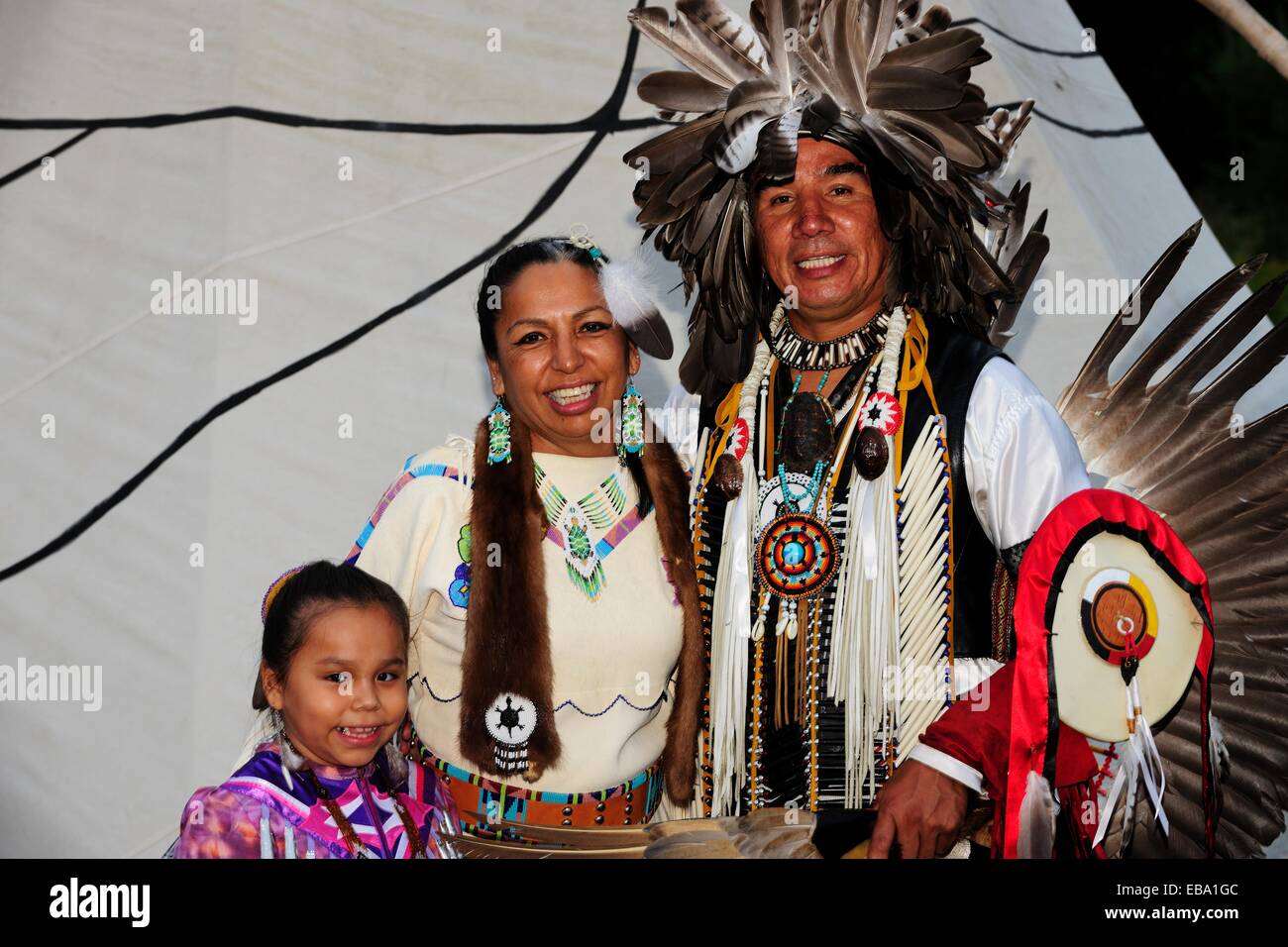 Ojibwe people, Native American family, at a Pow-Wow, Manitoulin Island, Ontario Province, Canada Stock Photohttps://www.alamy.com/image-license-details/?v=1https://www.alamy.com/stock-photo-ojibwe-people-native-american-family-at-a-pow-wow-manitoulin-island-75823452.html
Ojibwe people, Native American family, at a Pow-Wow, Manitoulin Island, Ontario Province, Canada Stock Photohttps://www.alamy.com/image-license-details/?v=1https://www.alamy.com/stock-photo-ojibwe-people-native-american-family-at-a-pow-wow-manitoulin-island-75823452.htmlRMEBA1GC–Ojibwe people, Native American family, at a Pow-Wow, Manitoulin Island, Ontario Province, Canada
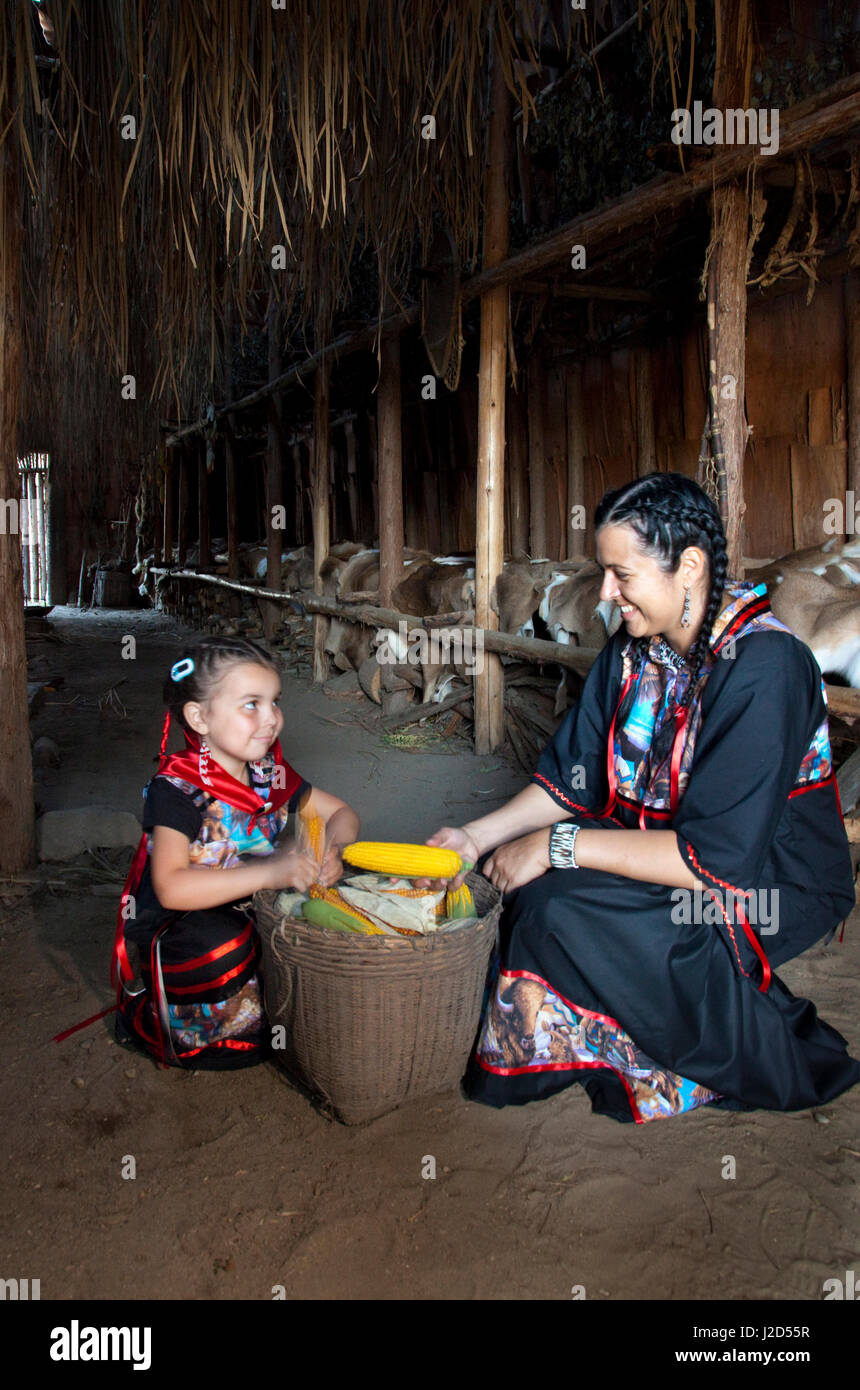 Ojibwe mother and daughter dressed in traditional ribbon dresses with a large basket of corn inside a bark covered longhouse (MR) Stock Photohttps://www.alamy.com/image-license-details/?v=1https://www.alamy.com/stock-photo-ojibwe-mother-and-daughter-dressed-in-traditional-ribbon-dresses-with-139201715.html
Ojibwe mother and daughter dressed in traditional ribbon dresses with a large basket of corn inside a bark covered longhouse (MR) Stock Photohttps://www.alamy.com/image-license-details/?v=1https://www.alamy.com/stock-photo-ojibwe-mother-and-daughter-dressed-in-traditional-ribbon-dresses-with-139201715.htmlRMJ2D55R–Ojibwe mother and daughter dressed in traditional ribbon dresses with a large basket of corn inside a bark covered longhouse (MR)
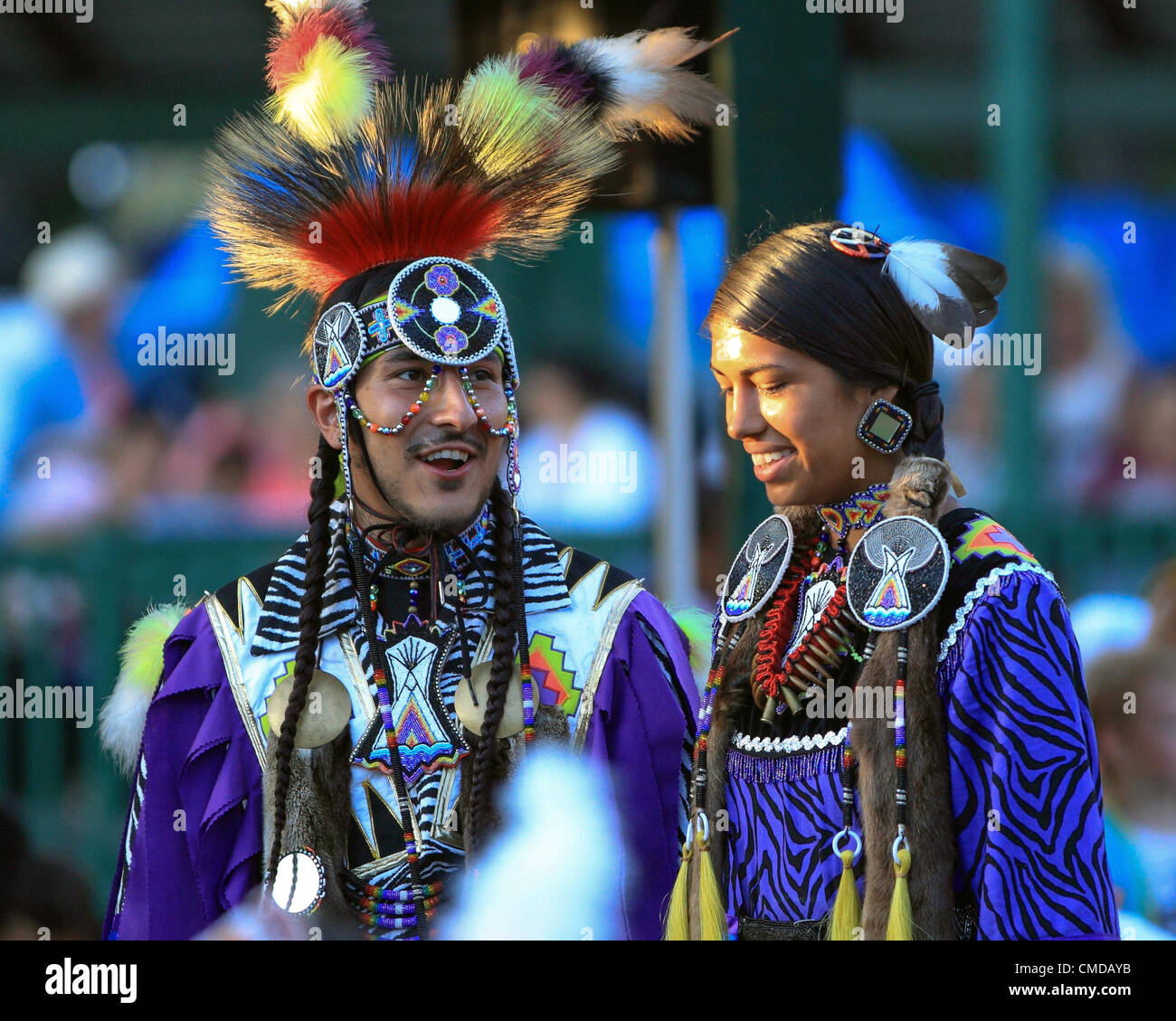 Native Americans from around North America gathered to sing, dance, and drum at the 39th annual Lac Courte Orielles Ojibwe 'Honor the Earth' Pow Wow near Hayward, Wisconsin, USA -- July 20-22, 2012 Stock Photohttps://www.alamy.com/image-license-details/?v=1https://www.alamy.com/stock-photo-native-americans-from-around-north-america-gathered-to-sing-dance-47007839.html
Native Americans from around North America gathered to sing, dance, and drum at the 39th annual Lac Courte Orielles Ojibwe 'Honor the Earth' Pow Wow near Hayward, Wisconsin, USA -- July 20-22, 2012 Stock Photohttps://www.alamy.com/image-license-details/?v=1https://www.alamy.com/stock-photo-native-americans-from-around-north-america-gathered-to-sing-dance-47007839.htmlRMCMDAYB–Native Americans from around North America gathered to sing, dance, and drum at the 39th annual Lac Courte Orielles Ojibwe 'Honor the Earth' Pow Wow near Hayward, Wisconsin, USA -- July 20-22, 2012
 Bandolier (Shoulder) Bag, 1880s?. Northeastern Woodlands, Great Lakes Region, Anishinaabe (Ojibwe) People. Plain weave cotton, twill weave wool, velvet, plaited wool binding, wool tassels, glass beads; average: 107.3 x 33 cm (42 1/4 x 13 in Stock Photohttps://www.alamy.com/image-license-details/?v=1https://www.alamy.com/bandolier-shoulder-bag-1880s-northeastern-woodlands-great-lakes-region-anishinaabe-ojibwe-people-plain-weave-cotton-twill-weave-wool-velvet-plaited-wool-binding-wool-tassels-glass-beads-average-1073-x-33-cm-42-14-x-13-in-image240458837.html
Bandolier (Shoulder) Bag, 1880s?. Northeastern Woodlands, Great Lakes Region, Anishinaabe (Ojibwe) People. Plain weave cotton, twill weave wool, velvet, plaited wool binding, wool tassels, glass beads; average: 107.3 x 33 cm (42 1/4 x 13 in Stock Photohttps://www.alamy.com/image-license-details/?v=1https://www.alamy.com/bandolier-shoulder-bag-1880s-northeastern-woodlands-great-lakes-region-anishinaabe-ojibwe-people-plain-weave-cotton-twill-weave-wool-velvet-plaited-wool-binding-wool-tassels-glass-beads-average-1073-x-33-cm-42-14-x-13-in-image240458837.htmlRMRY5RKH–Bandolier (Shoulder) Bag, 1880s?. Northeastern Woodlands, Great Lakes Region, Anishinaabe (Ojibwe) People. Plain weave cotton, twill weave wool, velvet, plaited wool binding, wool tassels, glass beads; average: 107.3 x 33 cm (42 1/4 x 13 in
 19th century book illustration showing the Feast of Nanabozho celebrated by the Ojibwe people, entitled 'The Feast of Manabozho, or the Great Hare.' In Ojibwe mythology, Nanabozho is a shape-shifting spirit that had a role in the world's creation. 1890. Stock Photohttps://www.alamy.com/image-license-details/?v=1https://www.alamy.com/stock-photo-19th-century-book-illustration-showing-the-feast-of-nanabozho-celebrated-104002138.html
19th century book illustration showing the Feast of Nanabozho celebrated by the Ojibwe people, entitled 'The Feast of Manabozho, or the Great Hare.' In Ojibwe mythology, Nanabozho is a shape-shifting spirit that had a role in the world's creation. 1890. Stock Photohttps://www.alamy.com/image-license-details/?v=1https://www.alamy.com/stock-photo-19th-century-book-illustration-showing-the-feast-of-nanabozho-celebrated-104002138.htmlRMG15KP2–19th century book illustration showing the Feast of Nanabozho celebrated by the Ojibwe people, entitled 'The Feast of Manabozho, or the Great Hare.' In Ojibwe mythology, Nanabozho is a shape-shifting spirit that had a role in the world's creation. 1890.
 Ojibway story teller with coyote pelt tells the story of 'How the Turtle Got Its Shell' at winter festival in Cannington Ontario Stock Photohttps://www.alamy.com/image-license-details/?v=1https://www.alamy.com/stock-photo-ojibway-story-teller-with-coyote-pelt-tells-the-story-of-how-the-turtle-78158042.html
Ojibway story teller with coyote pelt tells the story of 'How the Turtle Got Its Shell' at winter festival in Cannington Ontario Stock Photohttps://www.alamy.com/image-license-details/?v=1https://www.alamy.com/stock-photo-ojibway-story-teller-with-coyote-pelt-tells-the-story-of-how-the-turtle-78158042.htmlRMEF4BAJ–Ojibway story teller with coyote pelt tells the story of 'How the Turtle Got Its Shell' at winter festival in Cannington Ontario
 A-quee-we-zaints, the Boy Chief, Ojibwe nation. One of the troupe of nine Ojibwe people who traveled to England in 1844. In feather headdress, buckskin shirt, necklace of teeth, with tomahawk. Handcoloured lithograph by J. Harris after an illustration by George Catlin from James Cowles Prichard's Natural History of Man, Balliere, London, 1855. Stock Photohttps://www.alamy.com/image-license-details/?v=1https://www.alamy.com/a-quee-we-zaints-the-boy-chief-ojibwe-nation-one-of-the-troupe-of-nine-ojibwe-people-who-traveled-to-england-in-1844-in-feather-headdress-buckskin-shirt-necklace-of-teeth-with-tomahawk-handcoloured-lithograph-by-j-harris-after-an-illustration-by-george-catlin-from-james-cowles-prichards-natural-history-of-man-balliere-london-1855-image210560062.html
A-quee-we-zaints, the Boy Chief, Ojibwe nation. One of the troupe of nine Ojibwe people who traveled to England in 1844. In feather headdress, buckskin shirt, necklace of teeth, with tomahawk. Handcoloured lithograph by J. Harris after an illustration by George Catlin from James Cowles Prichard's Natural History of Man, Balliere, London, 1855. Stock Photohttps://www.alamy.com/image-license-details/?v=1https://www.alamy.com/a-quee-we-zaints-the-boy-chief-ojibwe-nation-one-of-the-troupe-of-nine-ojibwe-people-who-traveled-to-england-in-1844-in-feather-headdress-buckskin-shirt-necklace-of-teeth-with-tomahawk-handcoloured-lithograph-by-j-harris-after-an-illustration-by-george-catlin-from-james-cowles-prichards-natural-history-of-man-balliere-london-1855-image210560062.htmlRMP6FRE6–A-quee-we-zaints, the Boy Chief, Ojibwe nation. One of the troupe of nine Ojibwe people who traveled to England in 1844. In feather headdress, buckskin shirt, necklace of teeth, with tomahawk. Handcoloured lithograph by J. Harris after an illustration by George Catlin from James Cowles Prichard's Natural History of Man, Balliere, London, 1855.
 Chipeway people, east of the Mississippi. Ojibwe Chippewa, Canada. BANKES 1789 Stock Photohttps://www.alamy.com/image-license-details/?v=1https://www.alamy.com/chipeway-people-east-of-the-mississippi-ojibwechippewa-canada-bankes-1789-image357083136.html
Chipeway people, east of the Mississippi. Ojibwe Chippewa, Canada. BANKES 1789 Stock Photohttps://www.alamy.com/image-license-details/?v=1https://www.alamy.com/chipeway-people-east-of-the-mississippi-ojibwechippewa-canada-bankes-1789-image357083136.htmlRF2BMXF54–Chipeway people, east of the Mississippi. Ojibwe Chippewa, Canada. BANKES 1789
 Radebeul, Germany. 18th Mar, 2014. A scalp of the Native Americans Ojibwe People is pictured in the Karl May Museum in Radebeul, Germany, 18 March 2014. Members of the North American Ojibwe People demand the scalp back that has been in the possession of the museum for more thn 80 years. Photo: Stefan Kuhfs/dpa/Alamy Live News Stock Photohttps://www.alamy.com/image-license-details/?v=1https://www.alamy.com/radebeul-germany-18th-mar-2014-a-scalp-of-the-native-americans-ojibwe-image67735864.html
Radebeul, Germany. 18th Mar, 2014. A scalp of the Native Americans Ojibwe People is pictured in the Karl May Museum in Radebeul, Germany, 18 March 2014. Members of the North American Ojibwe People demand the scalp back that has been in the possession of the museum for more thn 80 years. Photo: Stefan Kuhfs/dpa/Alamy Live News Stock Photohttps://www.alamy.com/image-license-details/?v=1https://www.alamy.com/radebeul-germany-18th-mar-2014-a-scalp-of-the-native-americans-ojibwe-image67735864.htmlRMDX5HP0–Radebeul, Germany. 18th Mar, 2014. A scalp of the Native Americans Ojibwe People is pictured in the Karl May Museum in Radebeul, Germany, 18 March 2014. Members of the North American Ojibwe People demand the scalp back that has been in the possession of the museum for more thn 80 years. Photo: Stefan Kuhfs/dpa/Alamy Live News
 Bandolier (Shoulder) Bag, 1880s?. Northeastern Woodlands, Great Lakes Region, Anishinaabe (Ojibwe) People. Plain weave cotton, twill weave wool, velvet, plaited wool binding, wool tassels, glass beads; average: 107.3 x 33 cm (42 1/4 x 13 in.). Stock Photohttps://www.alamy.com/image-license-details/?v=1https://www.alamy.com/bandolier-shoulder-bag-1880s-northeastern-woodlands-great-lakes-region-anishinaabe-ojibwe-people-plain-weave-cotton-twill-weave-wool-velvet-plaited-wool-binding-wool-tassels-glass-beads-average-1073-x-33-cm-42-14-x-13-in-image448107348.html
Bandolier (Shoulder) Bag, 1880s?. Northeastern Woodlands, Great Lakes Region, Anishinaabe (Ojibwe) People. Plain weave cotton, twill weave wool, velvet, plaited wool binding, wool tassels, glass beads; average: 107.3 x 33 cm (42 1/4 x 13 in.). Stock Photohttps://www.alamy.com/image-license-details/?v=1https://www.alamy.com/bandolier-shoulder-bag-1880s-northeastern-woodlands-great-lakes-region-anishinaabe-ojibwe-people-plain-weave-cotton-twill-weave-wool-velvet-plaited-wool-binding-wool-tassels-glass-beads-average-1073-x-33-cm-42-14-x-13-in-image448107348.htmlRM2H111DT–Bandolier (Shoulder) Bag, 1880s?. Northeastern Woodlands, Great Lakes Region, Anishinaabe (Ojibwe) People. Plain weave cotton, twill weave wool, velvet, plaited wool binding, wool tassels, glass beads; average: 107.3 x 33 cm (42 1/4 x 13 in.).
 Women dancers of the Ojibwe nation. Stock Photohttps://www.alamy.com/image-license-details/?v=1https://www.alamy.com/stock-photo-women-dancers-of-the-ojibwe-nation-72553852.html
Women dancers of the Ojibwe nation. Stock Photohttps://www.alamy.com/image-license-details/?v=1https://www.alamy.com/stock-photo-women-dancers-of-the-ojibwe-nation-72553852.htmlRME61350–Women dancers of the Ojibwe nation.
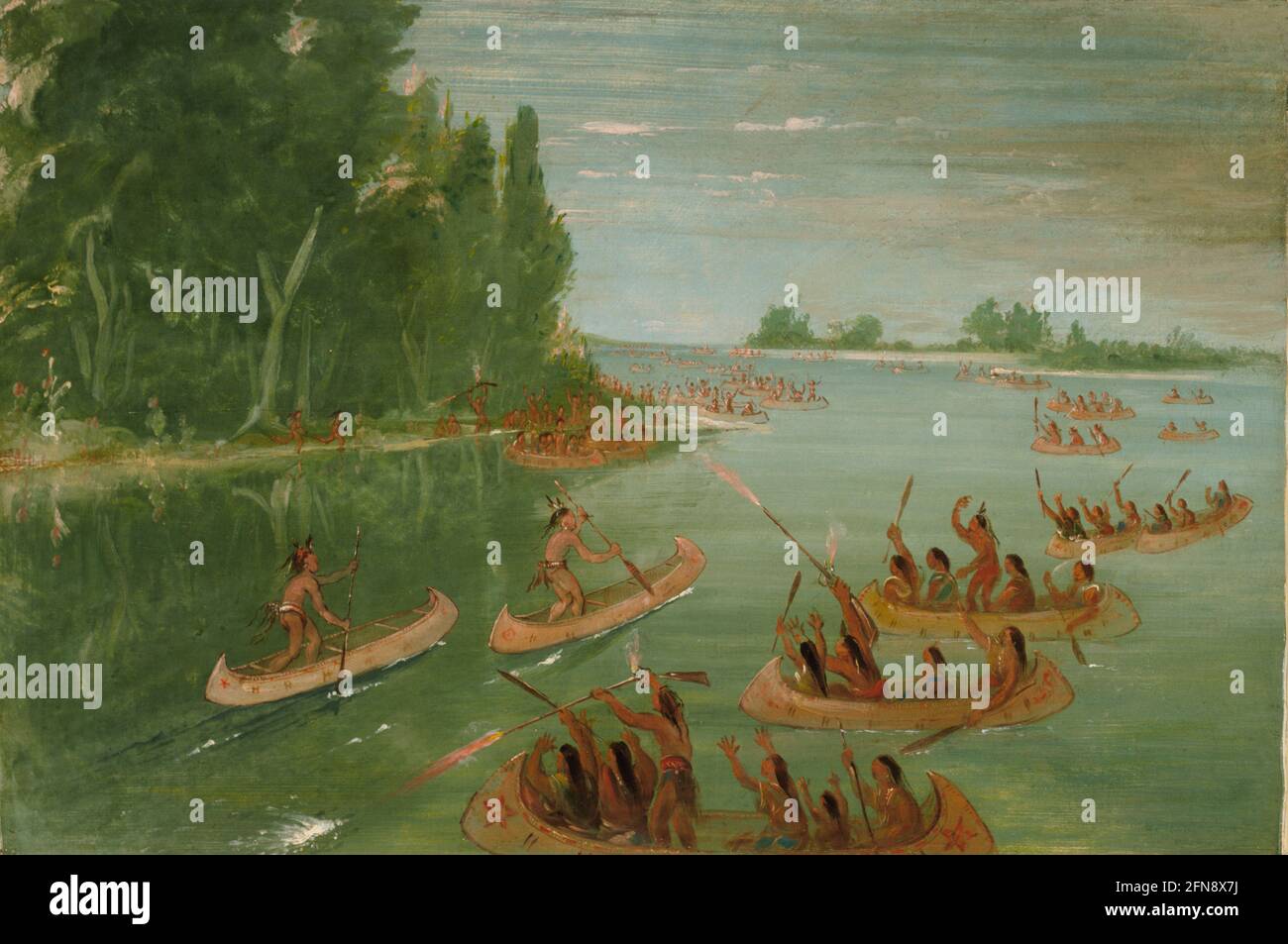 Canoe Race Near Sault Ste. Marie, 1836-1837. Stock Photohttps://www.alamy.com/image-license-details/?v=1https://www.alamy.com/canoe-race-near-sault-ste-marie-1836-1837-image426152822.html
Canoe Race Near Sault Ste. Marie, 1836-1837. Stock Photohttps://www.alamy.com/image-license-details/?v=1https://www.alamy.com/canoe-race-near-sault-ste-marie-1836-1837-image426152822.htmlRM2FN8X7J–Canoe Race Near Sault Ste. Marie, 1836-1837.
 Canada First Nations Oneida/Ojibwa young woman participating in a Pow Wow competition in London, Ontario, Canada. Stock Photohttps://www.alamy.com/image-license-details/?v=1https://www.alamy.com/canada-first-nations-oneidaojibwa-young-woman-participating-in-a-pow-wow-competition-in-london-ontario-canada-image592507454.html
Canada First Nations Oneida/Ojibwa young woman participating in a Pow Wow competition in London, Ontario, Canada. Stock Photohttps://www.alamy.com/image-license-details/?v=1https://www.alamy.com/canada-first-nations-oneidaojibwa-young-woman-participating-in-a-pow-wow-competition-in-london-ontario-canada-image592507454.htmlRM2WBY18E–Canada First Nations Oneida/Ojibwa young woman participating in a Pow Wow competition in London, Ontario, Canada.
 Girl, 15, Ojibwe tribe, hoop dancing at Iroquois Museum Festival, Schoharie County, New York State Stock Photohttps://www.alamy.com/image-license-details/?v=1https://www.alamy.com/stock-photo-girl-15-ojibwe-tribe-hoop-dancing-at-iroquois-museum-festival-schoharie-50321939.html
Girl, 15, Ojibwe tribe, hoop dancing at Iroquois Museum Festival, Schoharie County, New York State Stock Photohttps://www.alamy.com/image-license-details/?v=1https://www.alamy.com/stock-photo-girl-15-ojibwe-tribe-hoop-dancing-at-iroquois-museum-festival-schoharie-50321939.htmlRMCWTA43–Girl, 15, Ojibwe tribe, hoop dancing at Iroquois Museum Festival, Schoharie County, New York State
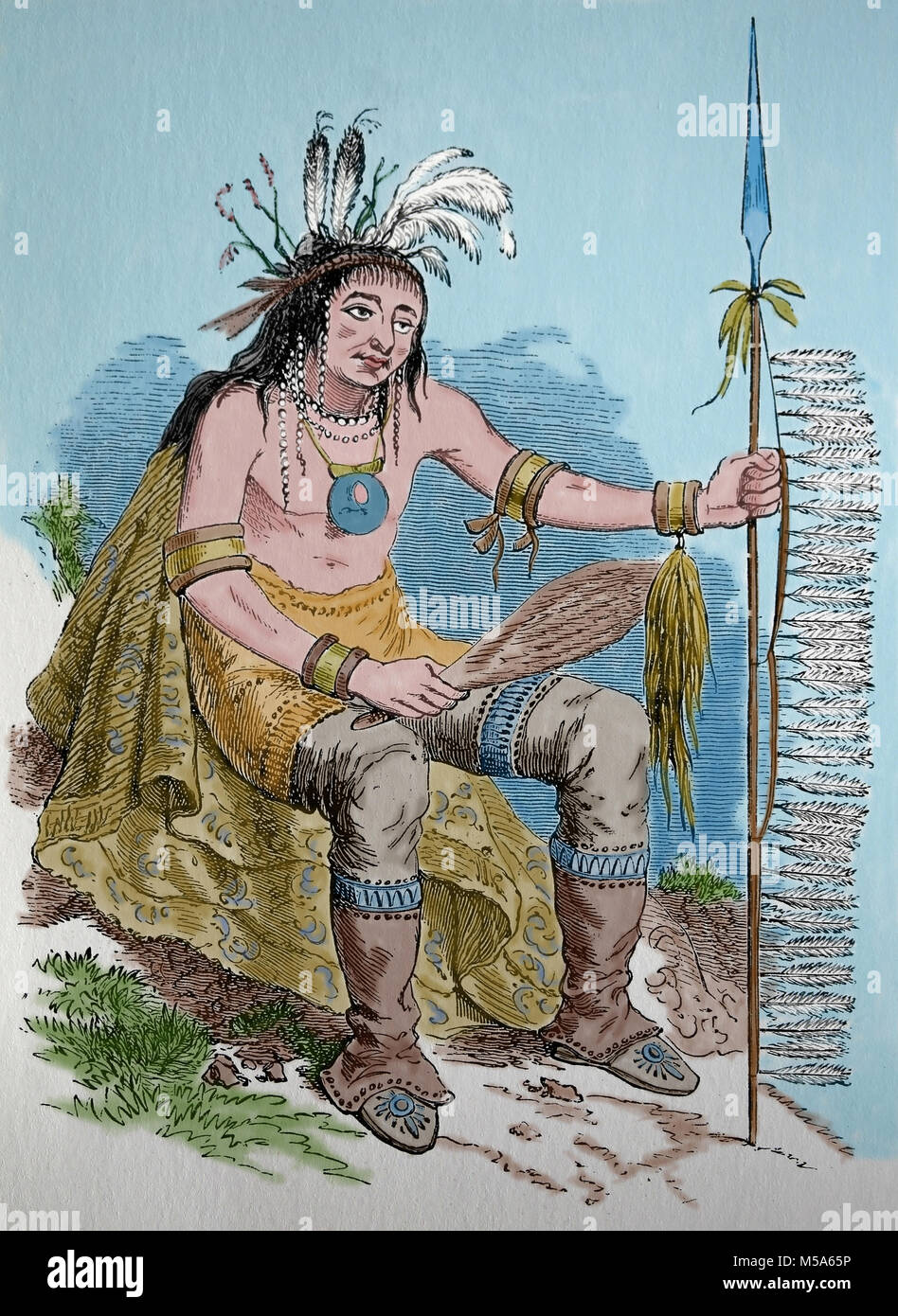 North America. Indigenous Peoples. Ojibwe or chippeway native American, Engraving, 1880. Stock Photohttps://www.alamy.com/image-license-details/?v=1https://www.alamy.com/stock-photo-north-america-indigenous-peoples-ojibwe-or-chippeway-native-american-175401346.html
North America. Indigenous Peoples. Ojibwe or chippeway native American, Engraving, 1880. Stock Photohttps://www.alamy.com/image-license-details/?v=1https://www.alamy.com/stock-photo-north-america-indigenous-peoples-ojibwe-or-chippeway-native-american-175401346.htmlRMM5A65P–North America. Indigenous Peoples. Ojibwe or chippeway native American, Engraving, 1880.
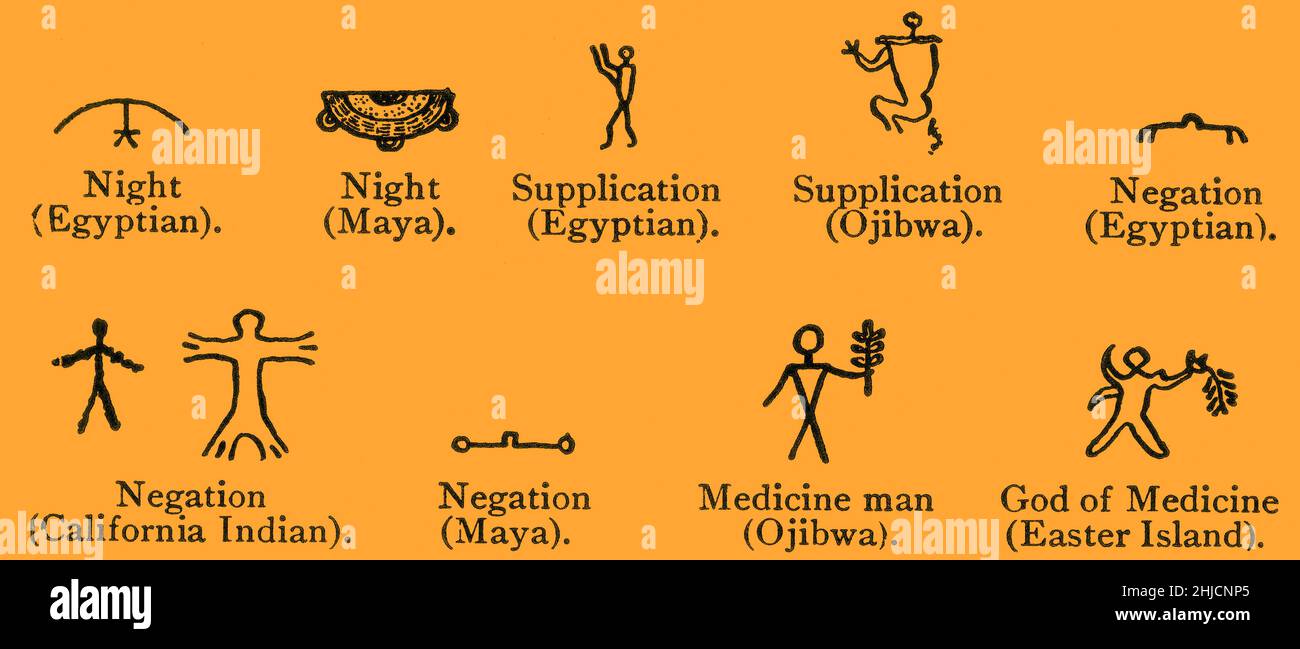 A diagram comparing pictographic signs for night, supplication, negation, and medicine man among the Ancient Egyptians, Maya, Ojibwe, Rapa Nui, and Californian Indian people. An illustration by anthropologist Edward Clodd (1840-1930) from his book The Story of the Alphabet, 1900. Colorized. Stock Photohttps://www.alamy.com/image-license-details/?v=1https://www.alamy.com/a-diagram-comparing-pictographic-signs-for-night-supplication-negation-and-medicine-man-among-the-ancient-egyptians-maya-ojibwe-rapa-nui-and-californian-indian-people-an-illustration-by-anthropologist-edward-clodd-1840-1930-from-his-book-the-story-of-the-alphabet-1900-colorized-image458813885.html
A diagram comparing pictographic signs for night, supplication, negation, and medicine man among the Ancient Egyptians, Maya, Ojibwe, Rapa Nui, and Californian Indian people. An illustration by anthropologist Edward Clodd (1840-1930) from his book The Story of the Alphabet, 1900. Colorized. Stock Photohttps://www.alamy.com/image-license-details/?v=1https://www.alamy.com/a-diagram-comparing-pictographic-signs-for-night-supplication-negation-and-medicine-man-among-the-ancient-egyptians-maya-ojibwe-rapa-nui-and-californian-indian-people-an-illustration-by-anthropologist-edward-clodd-1840-1930-from-his-book-the-story-of-the-alphabet-1900-colorized-image458813885.htmlRM2HJCNP5–A diagram comparing pictographic signs for night, supplication, negation, and medicine man among the Ancient Egyptians, Maya, Ojibwe, Rapa Nui, and Californian Indian people. An illustration by anthropologist Edward Clodd (1840-1930) from his book The Story of the Alphabet, 1900. Colorized.
 Canada - Ojibwa Girl cleaning the catch Stock Photohttps://www.alamy.com/image-license-details/?v=1https://www.alamy.com/canada-ojibwa-girl-cleaning-the-catch-image66037479.html
Canada - Ojibwa Girl cleaning the catch Stock Photohttps://www.alamy.com/image-license-details/?v=1https://www.alamy.com/canada-ojibwa-girl-cleaning-the-catch-image66037479.htmlRMDRC7DB–Canada - Ojibwa Girl cleaning the catch
 An indigenous Ojibwe man accelerating his boat engine through the Moose River near the town of Moose Factory, Ontario, Canada. Stock Photohttps://www.alamy.com/image-license-details/?v=1https://www.alamy.com/stock-photo-an-indigenous-ojibwe-man-accelerating-his-boat-engine-through-the-136695516.html
An indigenous Ojibwe man accelerating his boat engine through the Moose River near the town of Moose Factory, Ontario, Canada. Stock Photohttps://www.alamy.com/image-license-details/?v=1https://www.alamy.com/stock-photo-an-indigenous-ojibwe-man-accelerating-his-boat-engine-through-the-136695516.htmlRMHXB0EM–An indigenous Ojibwe man accelerating his boat engine through the Moose River near the town of Moose Factory, Ontario, Canada.
 Emblem of the Anishinaabe People. Close Up. Stock Photohttps://www.alamy.com/image-license-details/?v=1https://www.alamy.com/stock-photo-emblem-of-the-anishinaabe-people-close-up-70265893.html
Emblem of the Anishinaabe People. Close Up. Stock Photohttps://www.alamy.com/image-license-details/?v=1https://www.alamy.com/stock-photo-emblem-of-the-anishinaabe-people-close-up-70265893.htmlRFE28TT5–Emblem of the Anishinaabe People. Close Up.
 ANACAMEGISHCA A Chippeway (Ojibwe) Chief from the book ' History of the Indian Tribes of North America with biographical sketches and anecdotes of the principal chiefs. ' Volume 1 of 3 by Thomas Loraine,McKenney and James Hall Esq. Published in 1838 Painted by Charles Bird King Stock Photohttps://www.alamy.com/image-license-details/?v=1https://www.alamy.com/anacamegishca-a-chippeway-ojibwe-chief-from-the-book-history-of-the-indian-tribes-of-north-america-with-biographical-sketches-and-anecdotes-of-the-principal-chiefs-volume-1-of-3-by-thomas-lorainemckenney-and-james-hall-esq-published-in-1838-painted-by-charles-bird-king-image450083731.html
ANACAMEGISHCA A Chippeway (Ojibwe) Chief from the book ' History of the Indian Tribes of North America with biographical sketches and anecdotes of the principal chiefs. ' Volume 1 of 3 by Thomas Loraine,McKenney and James Hall Esq. Published in 1838 Painted by Charles Bird King Stock Photohttps://www.alamy.com/image-license-details/?v=1https://www.alamy.com/anacamegishca-a-chippeway-ojibwe-chief-from-the-book-history-of-the-indian-tribes-of-north-america-with-biographical-sketches-and-anecdotes-of-the-principal-chiefs-volume-1-of-3-by-thomas-lorainemckenney-and-james-hall-esq-published-in-1838-painted-by-charles-bird-king-image450083731.htmlRF2H472AY–ANACAMEGISHCA A Chippeway (Ojibwe) Chief from the book ' History of the Indian Tribes of North America with biographical sketches and anecdotes of the principal chiefs. ' Volume 1 of 3 by Thomas Loraine,McKenney and James Hall Esq. Published in 1838 Painted by Charles Bird King
 Ojibwe mother and daughter dressed in traditional ribbon dresses visit the Huron Indian Village in Midland, Ontario. (MR) Stock Photohttps://www.alamy.com/image-license-details/?v=1https://www.alamy.com/stock-photo-ojibwe-mother-and-daughter-dressed-in-traditional-ribbon-dresses-visit-139201711.html
Ojibwe mother and daughter dressed in traditional ribbon dresses visit the Huron Indian Village in Midland, Ontario. (MR) Stock Photohttps://www.alamy.com/image-license-details/?v=1https://www.alamy.com/stock-photo-ojibwe-mother-and-daughter-dressed-in-traditional-ribbon-dresses-visit-139201711.htmlRMJ2D55K–Ojibwe mother and daughter dressed in traditional ribbon dresses visit the Huron Indian Village in Midland, Ontario. (MR)
 Native Americans from around North America gathered to sing, dance, and drum at the 39th annual Lac Courte Orielles Ojibwe 'Honor the Earth' Pow Wow near Hayward, Wisconsin, USA -- July 20-22, 2012 Stock Photohttps://www.alamy.com/image-license-details/?v=1https://www.alamy.com/stock-photo-native-americans-from-around-north-america-gathered-to-sing-dance-47008125.html
Native Americans from around North America gathered to sing, dance, and drum at the 39th annual Lac Courte Orielles Ojibwe 'Honor the Earth' Pow Wow near Hayward, Wisconsin, USA -- July 20-22, 2012 Stock Photohttps://www.alamy.com/image-license-details/?v=1https://www.alamy.com/stock-photo-native-americans-from-around-north-america-gathered-to-sing-dance-47008125.htmlRMCMDB9H–Native Americans from around North America gathered to sing, dance, and drum at the 39th annual Lac Courte Orielles Ojibwe 'Honor the Earth' Pow Wow near Hayward, Wisconsin, USA -- July 20-22, 2012
 Placket, late 1800s. Northeast Woodlands, Great Lakes Region, Anishinaabe (Ojibwe) or Nehiyawak (Cree) People?. Velvet, cotton; overall: 44.5 x 19.4 cm (17 1/2 x 7 5/8 in Stock Photohttps://www.alamy.com/image-license-details/?v=1https://www.alamy.com/placket-late-1800s-northeast-woodlands-great-lakes-region-anishinaabe-ojibwe-or-nehiyawak-cree-people-velvet-cotton-overall-445-x-194-cm-17-12-x-7-58-in-image240433724.html
Placket, late 1800s. Northeast Woodlands, Great Lakes Region, Anishinaabe (Ojibwe) or Nehiyawak (Cree) People?. Velvet, cotton; overall: 44.5 x 19.4 cm (17 1/2 x 7 5/8 in Stock Photohttps://www.alamy.com/image-license-details/?v=1https://www.alamy.com/placket-late-1800s-northeast-woodlands-great-lakes-region-anishinaabe-ojibwe-or-nehiyawak-cree-people-velvet-cotton-overall-445-x-194-cm-17-12-x-7-58-in-image240433724.htmlRMRY4KJM–Placket, late 1800s. Northeast Woodlands, Great Lakes Region, Anishinaabe (Ojibwe) or Nehiyawak (Cree) People?. Velvet, cotton; overall: 44.5 x 19.4 cm (17 1/2 x 7 5/8 in
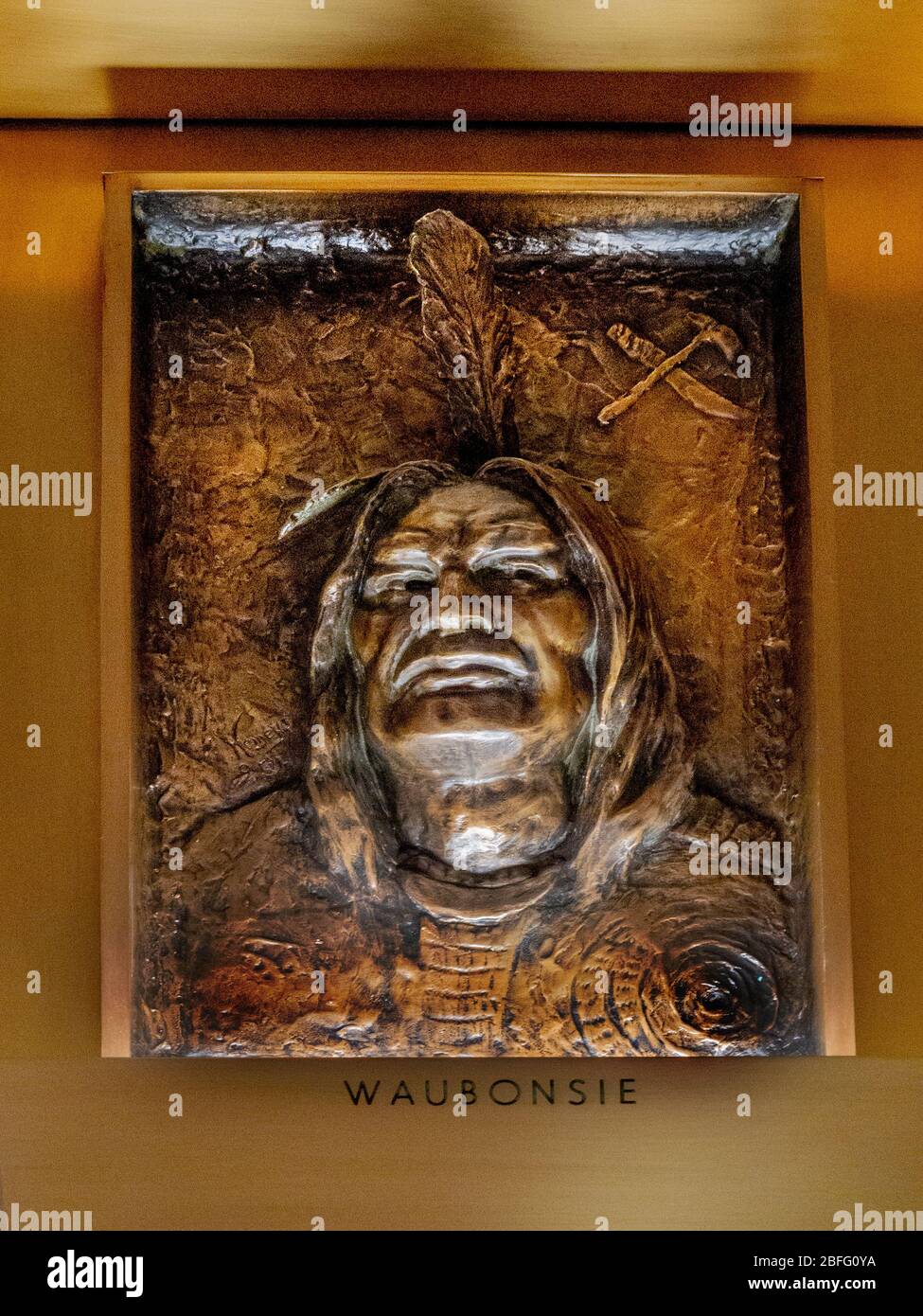 A bas relief of Waubonsie decorates the lobby of Chicago's Marquette Building. Waubonsie (c. 1760 – c. 1848) was a leader of the Potawatomi Native American people. His name has been spelled in a variety of ways, including Wabaunsee, Wah-bahn-se, Waubonsee, Waabaanizii in the contemporary Ojibwe language, and Wabanzi in the contemporary Potawatomi language (meaning 'He Causes Paleness' in both languages). Stock Photohttps://www.alamy.com/image-license-details/?v=1https://www.alamy.com/a-bas-relief-of-waubonsie-decorates-the-lobby-of-chicagos-marquette-building-waubonsie-c-1760-c-1848-was-a-leader-of-the-potawatomi-native-american-people-his-name-has-been-spelled-in-a-variety-of-ways-including-wabaunsee-wah-bahn-se-waubonsee-waabaanizii-in-the-contemporary-ojibwe-language-and-wabanzi-in-the-contemporary-potawatomi-language-meaning-he-causes-paleness-in-both-languages-image353779198.html
A bas relief of Waubonsie decorates the lobby of Chicago's Marquette Building. Waubonsie (c. 1760 – c. 1848) was a leader of the Potawatomi Native American people. His name has been spelled in a variety of ways, including Wabaunsee, Wah-bahn-se, Waubonsee, Waabaanizii in the contemporary Ojibwe language, and Wabanzi in the contemporary Potawatomi language (meaning 'He Causes Paleness' in both languages). Stock Photohttps://www.alamy.com/image-license-details/?v=1https://www.alamy.com/a-bas-relief-of-waubonsie-decorates-the-lobby-of-chicagos-marquette-building-waubonsie-c-1760-c-1848-was-a-leader-of-the-potawatomi-native-american-people-his-name-has-been-spelled-in-a-variety-of-ways-including-wabaunsee-wah-bahn-se-waubonsee-waabaanizii-in-the-contemporary-ojibwe-language-and-wabanzi-in-the-contemporary-potawatomi-language-meaning-he-causes-paleness-in-both-languages-image353779198.htmlRM2BFG0YA–A bas relief of Waubonsie decorates the lobby of Chicago's Marquette Building. Waubonsie (c. 1760 – c. 1848) was a leader of the Potawatomi Native American people. His name has been spelled in a variety of ways, including Wabaunsee, Wah-bahn-se, Waubonsee, Waabaanizii in the contemporary Ojibwe language, and Wabanzi in the contemporary Potawatomi language (meaning 'He Causes Paleness' in both languages).
 Ojibway story teller with coyote pelt tells the story of 'How the Turtle Got Its Shell' at winter festival in Cannington Ontario Stock Photohttps://www.alamy.com/image-license-details/?v=1https://www.alamy.com/stock-photo-ojibway-story-teller-with-coyote-pelt-tells-the-story-of-how-the-turtle-78158031.html
Ojibway story teller with coyote pelt tells the story of 'How the Turtle Got Its Shell' at winter festival in Cannington Ontario Stock Photohttps://www.alamy.com/image-license-details/?v=1https://www.alamy.com/stock-photo-ojibway-story-teller-with-coyote-pelt-tells-the-story-of-how-the-turtle-78158031.htmlRMEF4BA7–Ojibway story teller with coyote pelt tells the story of 'How the Turtle Got Its Shell' at winter festival in Cannington Ontario
 Women of the Ojibwe nation, Ne-bet-neuh-qua and Wo-see-ab-e-neuh-qua, and a young girl Nib-nab-i-quah. All three were part of the troupe of dancers who traveled to England. Engraved by J. Harris after an original illustration by George Gatlin from James Cowles Prichard's Natural History of Man, Balliere, London, 1855. Stock Photohttps://www.alamy.com/image-license-details/?v=1https://www.alamy.com/women-of-the-ojibwe-nation-ne-bet-neuh-qua-and-wo-see-ab-e-neuh-qua-and-a-young-girl-nib-nab-i-quah-all-three-were-part-of-the-troupe-of-dancers-who-traveled-to-england-engraved-by-j-harris-after-an-original-illustration-by-george-gatlin-from-james-cowles-prichards-natural-history-of-man-balliere-london-1855-image210586277.html
Women of the Ojibwe nation, Ne-bet-neuh-qua and Wo-see-ab-e-neuh-qua, and a young girl Nib-nab-i-quah. All three were part of the troupe of dancers who traveled to England. Engraved by J. Harris after an original illustration by George Gatlin from James Cowles Prichard's Natural History of Man, Balliere, London, 1855. Stock Photohttps://www.alamy.com/image-license-details/?v=1https://www.alamy.com/women-of-the-ojibwe-nation-ne-bet-neuh-qua-and-wo-see-ab-e-neuh-qua-and-a-young-girl-nib-nab-i-quah-all-three-were-part-of-the-troupe-of-dancers-who-traveled-to-england-engraved-by-j-harris-after-an-original-illustration-by-george-gatlin-from-james-cowles-prichards-natural-history-of-man-balliere-london-1855-image210586277.htmlRMP6H0XD–Women of the Ojibwe nation, Ne-bet-neuh-qua and Wo-see-ab-e-neuh-qua, and a young girl Nib-nab-i-quah. All three were part of the troupe of dancers who traveled to England. Engraved by J. Harris after an original illustration by George Gatlin from James Cowles Prichard's Natural History of Man, Balliere, London, 1855.
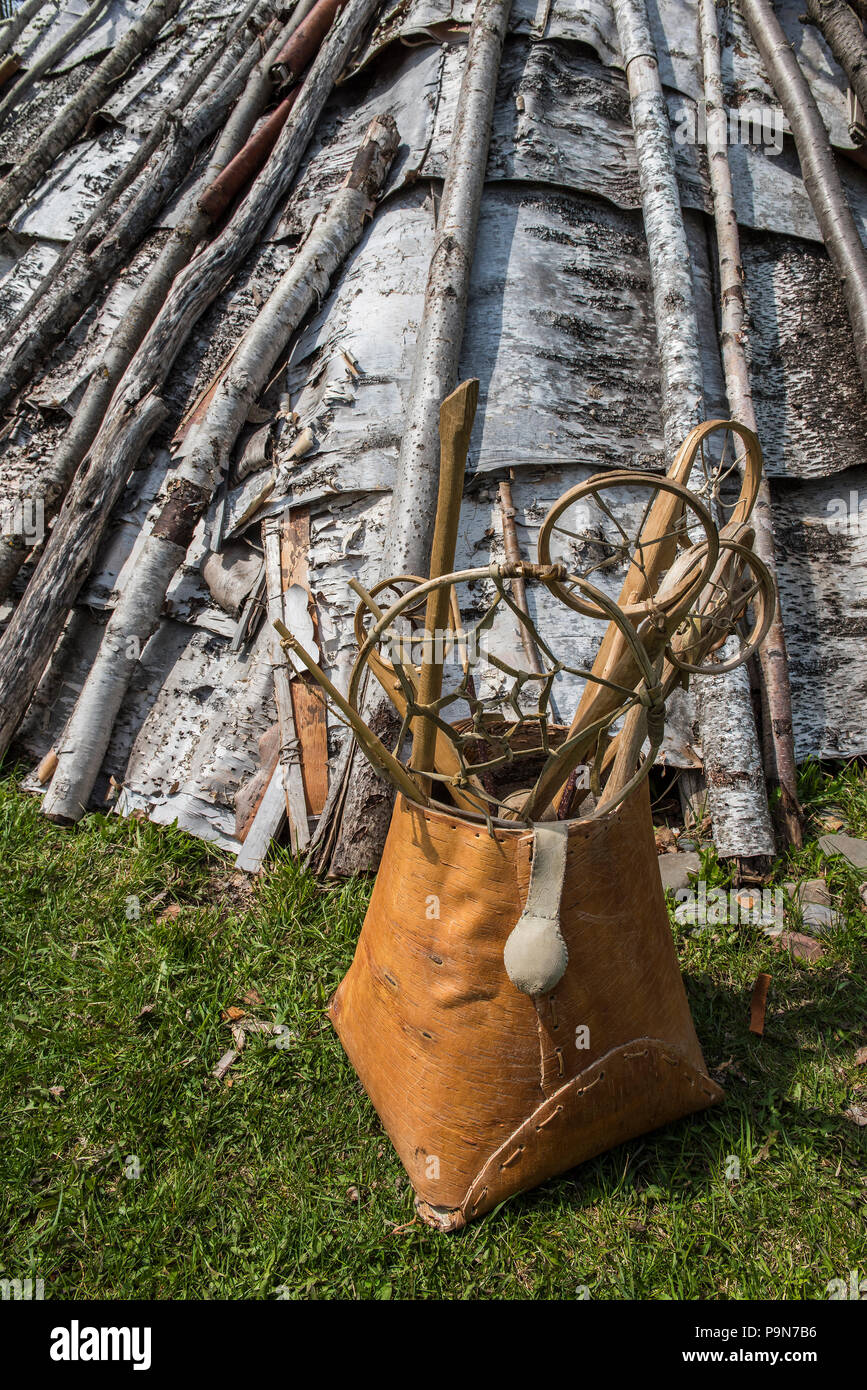 Birchbark Lodge, Lacrosse Rackets, Grand Portage NM, MN, USA, by Bruce Montagne/Dembinsky Photo Assoc Stock Photohttps://www.alamy.com/image-license-details/?v=1https://www.alamy.com/birchbark-lodge-lacrosse-rackets-grand-portage-nm-mn-usa-by-bruce-montagnedembinsky-photo-assoc-image212523114.html
Birchbark Lodge, Lacrosse Rackets, Grand Portage NM, MN, USA, by Bruce Montagne/Dembinsky Photo Assoc Stock Photohttps://www.alamy.com/image-license-details/?v=1https://www.alamy.com/birchbark-lodge-lacrosse-rackets-grand-portage-nm-mn-usa-by-bruce-montagnedembinsky-photo-assoc-image212523114.htmlRMP9N7B6–Birchbark Lodge, Lacrosse Rackets, Grand Portage NM, MN, USA, by Bruce Montagne/Dembinsky Photo Assoc
 the dream catcher the amulet protecting from evil dreams Stock Photohttps://www.alamy.com/image-license-details/?v=1https://www.alamy.com/the-dream-catcher-the-amulet-protecting-from-evil-dreams-image560324181.html
the dream catcher the amulet protecting from evil dreams Stock Photohttps://www.alamy.com/image-license-details/?v=1https://www.alamy.com/the-dream-catcher-the-amulet-protecting-from-evil-dreams-image560324181.htmlRF2RFGY5W–the dream catcher the amulet protecting from evil dreams
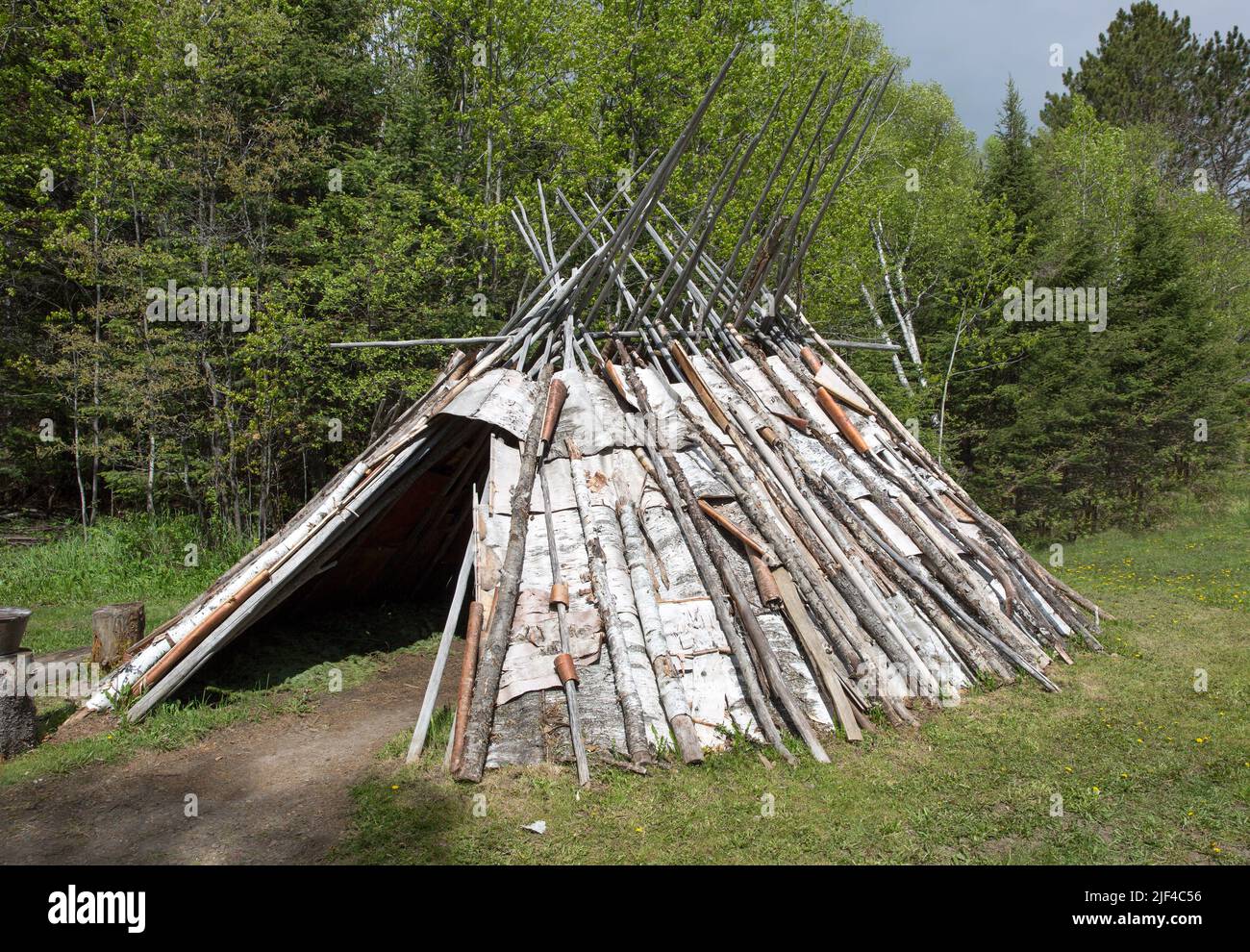 A replica of an Ojibwa, Ojibwe, or Anishinaabe birch bark oval shaped wigwam dwelling at Grand Portage National Monument in Northern Minnesota, USA Stock Photohttps://www.alamy.com/image-license-details/?v=1https://www.alamy.com/a-replica-of-an-ojibwa-ojibwe-or-anishinaabe-birch-bark-oval-shaped-wigwam-dwelling-at-grand-portage-national-monument-in-northern-minnesota-usa-image473997138.html
A replica of an Ojibwa, Ojibwe, or Anishinaabe birch bark oval shaped wigwam dwelling at Grand Portage National Monument in Northern Minnesota, USA Stock Photohttps://www.alamy.com/image-license-details/?v=1https://www.alamy.com/a-replica-of-an-ojibwa-ojibwe-or-anishinaabe-birch-bark-oval-shaped-wigwam-dwelling-at-grand-portage-national-monument-in-northern-minnesota-usa-image473997138.htmlRF2JF4C56–A replica of an Ojibwa, Ojibwe, or Anishinaabe birch bark oval shaped wigwam dwelling at Grand Portage National Monument in Northern Minnesota, USA
 A-quee-we-zaints, the Boy Chief, Ojibwe nation. Stock Photohttps://www.alamy.com/image-license-details/?v=1https://www.alamy.com/stock-photo-a-quee-we-zaints-the-boy-chief-ojibwe-nation-72553855.html
A-quee-we-zaints, the Boy Chief, Ojibwe nation. Stock Photohttps://www.alamy.com/image-license-details/?v=1https://www.alamy.com/stock-photo-a-quee-we-zaints-the-boy-chief-ojibwe-nation-72553855.htmlRME61353–A-quee-we-zaints, the Boy Chief, Ojibwe nation.
 Canadian Ojibwe First Nations woman wears her traditional regalia and poses for the camera during the Barrie Native Friendship Centre Pow Wow 2019. Stock Photohttps://www.alamy.com/image-license-details/?v=1https://www.alamy.com/canadian-ojibwe-first-nations-woman-wears-her-traditional-regalia-and-poses-for-the-camera-during-the-barrie-native-friendship-centre-pow-wow-2019-image255434378.html
Canadian Ojibwe First Nations woman wears her traditional regalia and poses for the camera during the Barrie Native Friendship Centre Pow Wow 2019. Stock Photohttps://www.alamy.com/image-license-details/?v=1https://www.alamy.com/canadian-ojibwe-first-nations-woman-wears-her-traditional-regalia-and-poses-for-the-camera-during-the-barrie-native-friendship-centre-pow-wow-2019-image255434378.htmlRFTRG14A–Canadian Ojibwe First Nations woman wears her traditional regalia and poses for the camera during the Barrie Native Friendship Centre Pow Wow 2019.
 Canada First Nations Oneida/Ojibwa young woman participating in a Pow Wow celebration of life competition in London, Ontario, Canada. Stock Photohttps://www.alamy.com/image-license-details/?v=1https://www.alamy.com/canada-first-nations-oneidaojibwa-young-woman-participating-in-a-pow-wow-celebration-of-life-competition-in-london-ontario-canada-image592507450.html
Canada First Nations Oneida/Ojibwa young woman participating in a Pow Wow celebration of life competition in London, Ontario, Canada. Stock Photohttps://www.alamy.com/image-license-details/?v=1https://www.alamy.com/canada-first-nations-oneidaojibwa-young-woman-participating-in-a-pow-wow-celebration-of-life-competition-in-london-ontario-canada-image592507450.htmlRM2WBY18A–Canada First Nations Oneida/Ojibwa young woman participating in a Pow Wow celebration of life competition in London, Ontario, Canada.
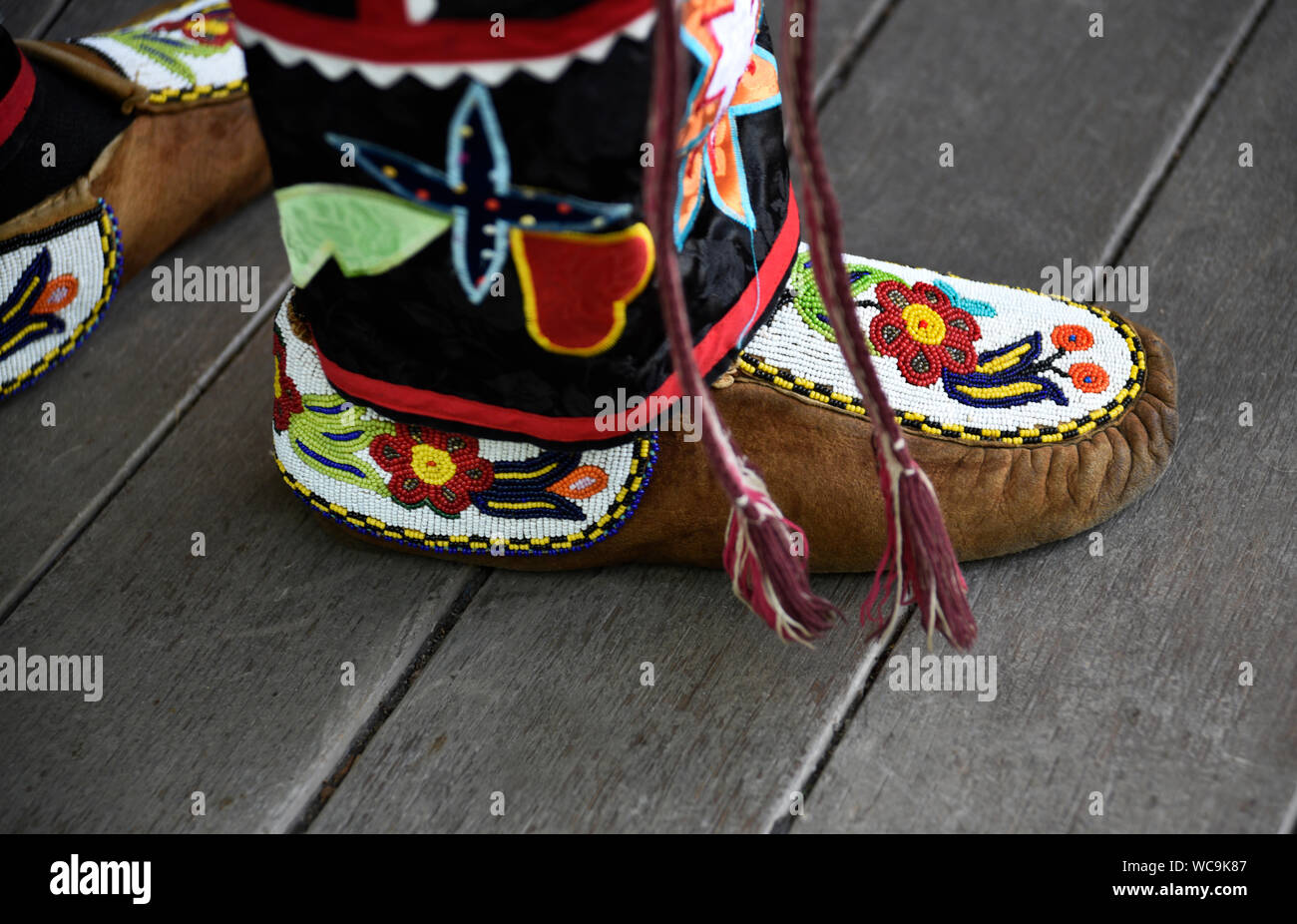 A Native American man wearing traditional Ojibwe beaded moccasins participates in a Native clothing contest at Santa Fe Indian Market in Santa Fe, NM. Stock Photohttps://www.alamy.com/image-license-details/?v=1https://www.alamy.com/a-native-american-man-wearing-traditional-ojibwe-beaded-moccasins-participates-in-a-native-clothing-contest-at-santa-fe-indian-market-in-santa-fe-nm-image265744087.html
A Native American man wearing traditional Ojibwe beaded moccasins participates in a Native clothing contest at Santa Fe Indian Market in Santa Fe, NM. Stock Photohttps://www.alamy.com/image-license-details/?v=1https://www.alamy.com/a-native-american-man-wearing-traditional-ojibwe-beaded-moccasins-participates-in-a-native-clothing-contest-at-santa-fe-indian-market-in-santa-fe-nm-image265744087.htmlRMWC9K87–A Native American man wearing traditional Ojibwe beaded moccasins participates in a Native clothing contest at Santa Fe Indian Market in Santa Fe, NM.
 Pfeilmacher, ein tapferer Ojibwa, Ojibwe, Ojibwa, Chippewa oder Saulteaux sind ein Volk der Anishinaabe im heutigen Süden Kanadas, im nördlichen Mittleren Westen der Vereinigten Staaten und in den Northern Plains, Indianer, USA, Historisch, digital verbesserte Reproduktion eines Photochromedruck aus dem Jahre 1898 / Arrowmaker, an Ojibwa brave, Ojibwe, Ojibwa, Chippewa, or Saulteaux are an Anishinaabe people in what is currently southern Canada, the northern Midwestern United States, and Northern Plains, USA, Historic, digitally enhanced reproduction of a photochrome print from 1898 Stock Photohttps://www.alamy.com/image-license-details/?v=1https://www.alamy.com/pfeilmacher-ein-tapferer-ojibwa-ojibwe-ojibwa-chippewa-oder-saulteaux-sind-ein-volk-der-anishinaabe-im-heutigen-sden-kanadas-im-nrdlichen-mittleren-westen-der-vereinigten-staaten-und-in-den-northern-plains-indianer-usa-historisch-digital-verbesserte-reproduktion-eines-photochromedruck-aus-dem-jahre-1898-arrowmaker-an-ojibwa-brave-ojibwe-ojibwa-chippewa-or-saulteaux-are-an-anishinaabe-people-in-what-is-currently-southern-canada-the-northern-midwestern-united-states-and-northern-plains-usa-historic-digitally-enhanced-reproduction-of-a-photochrome-print-from-1898-image563541848.html
Pfeilmacher, ein tapferer Ojibwa, Ojibwe, Ojibwa, Chippewa oder Saulteaux sind ein Volk der Anishinaabe im heutigen Süden Kanadas, im nördlichen Mittleren Westen der Vereinigten Staaten und in den Northern Plains, Indianer, USA, Historisch, digital verbesserte Reproduktion eines Photochromedruck aus dem Jahre 1898 / Arrowmaker, an Ojibwa brave, Ojibwe, Ojibwa, Chippewa, or Saulteaux are an Anishinaabe people in what is currently southern Canada, the northern Midwestern United States, and Northern Plains, USA, Historic, digitally enhanced reproduction of a photochrome print from 1898 Stock Photohttps://www.alamy.com/image-license-details/?v=1https://www.alamy.com/pfeilmacher-ein-tapferer-ojibwa-ojibwe-ojibwa-chippewa-oder-saulteaux-sind-ein-volk-der-anishinaabe-im-heutigen-sden-kanadas-im-nrdlichen-mittleren-westen-der-vereinigten-staaten-und-in-den-northern-plains-indianer-usa-historisch-digital-verbesserte-reproduktion-eines-photochromedruck-aus-dem-jahre-1898-arrowmaker-an-ojibwa-brave-ojibwe-ojibwa-chippewa-or-saulteaux-are-an-anishinaabe-people-in-what-is-currently-southern-canada-the-northern-midwestern-united-states-and-northern-plains-usa-historic-digitally-enhanced-reproduction-of-a-photochrome-print-from-1898-image563541848.htmlRF2RMRFAG–Pfeilmacher, ein tapferer Ojibwa, Ojibwe, Ojibwa, Chippewa oder Saulteaux sind ein Volk der Anishinaabe im heutigen Süden Kanadas, im nördlichen Mittleren Westen der Vereinigten Staaten und in den Northern Plains, Indianer, USA, Historisch, digital verbesserte Reproduktion eines Photochromedruck aus dem Jahre 1898 / Arrowmaker, an Ojibwa brave, Ojibwe, Ojibwa, Chippewa, or Saulteaux are an Anishinaabe people in what is currently southern Canada, the northern Midwestern United States, and Northern Plains, USA, Historic, digitally enhanced reproduction of a photochrome print from 1898
 A diagram comparing pictographic signs for night, supplication, negation, and medicine man among the Ancient Egyptians, Maya, Ojibwe, Rapa Nui, and Californian Indian people. An illustration by anthropologist Edward Clodd (1840-1930) from his book The Story of the Alphabet, 1900. Colorized. Stock Photohttps://www.alamy.com/image-license-details/?v=1https://www.alamy.com/a-diagram-comparing-pictographic-signs-for-night-supplication-negation-and-medicine-man-among-the-ancient-egyptians-maya-ojibwe-rapa-nui-and-californian-indian-people-an-illustration-by-anthropologist-edward-clodd-1840-1930-from-his-book-the-story-of-the-alphabet-1900-colorized-image458813740.html
A diagram comparing pictographic signs for night, supplication, negation, and medicine man among the Ancient Egyptians, Maya, Ojibwe, Rapa Nui, and Californian Indian people. An illustration by anthropologist Edward Clodd (1840-1930) from his book The Story of the Alphabet, 1900. Colorized. Stock Photohttps://www.alamy.com/image-license-details/?v=1https://www.alamy.com/a-diagram-comparing-pictographic-signs-for-night-supplication-negation-and-medicine-man-among-the-ancient-egyptians-maya-ojibwe-rapa-nui-and-californian-indian-people-an-illustration-by-anthropologist-edward-clodd-1840-1930-from-his-book-the-story-of-the-alphabet-1900-colorized-image458813740.htmlRM2HJCNH0–A diagram comparing pictographic signs for night, supplication, negation, and medicine man among the Ancient Egyptians, Maya, Ojibwe, Rapa Nui, and Californian Indian people. An illustration by anthropologist Edward Clodd (1840-1930) from his book The Story of the Alphabet, 1900. Colorized.
 Emblem of the Anishinaabe People Stock Photohttps://www.alamy.com/image-license-details/?v=1https://www.alamy.com/stock-photo-emblem-of-the-anishinaabe-people-88568509.html
Emblem of the Anishinaabe People Stock Photohttps://www.alamy.com/image-license-details/?v=1https://www.alamy.com/stock-photo-emblem-of-the-anishinaabe-people-88568509.htmlRFF42J11–Emblem of the Anishinaabe People
 An indigenous Ojibwe man steers his boat, with a friend on board, through the Moose River near the town of Moose Factory, northern Ontario, Canada. Stock Photohttps://www.alamy.com/image-license-details/?v=1https://www.alamy.com/an-indigenous-ojibwe-man-steers-his-boat-with-a-friend-on-board-through-the-moose-river-near-the-town-of-moose-factory-northern-ontario-canada-image357328753.html
An indigenous Ojibwe man steers his boat, with a friend on board, through the Moose River near the town of Moose Factory, northern Ontario, Canada. Stock Photohttps://www.alamy.com/image-license-details/?v=1https://www.alamy.com/an-indigenous-ojibwe-man-steers-his-boat-with-a-friend-on-board-through-the-moose-river-near-the-town-of-moose-factory-northern-ontario-canada-image357328753.htmlRM2BN9MD5–An indigenous Ojibwe man steers his boat, with a friend on board, through the Moose River near the town of Moose Factory, northern Ontario, Canada.
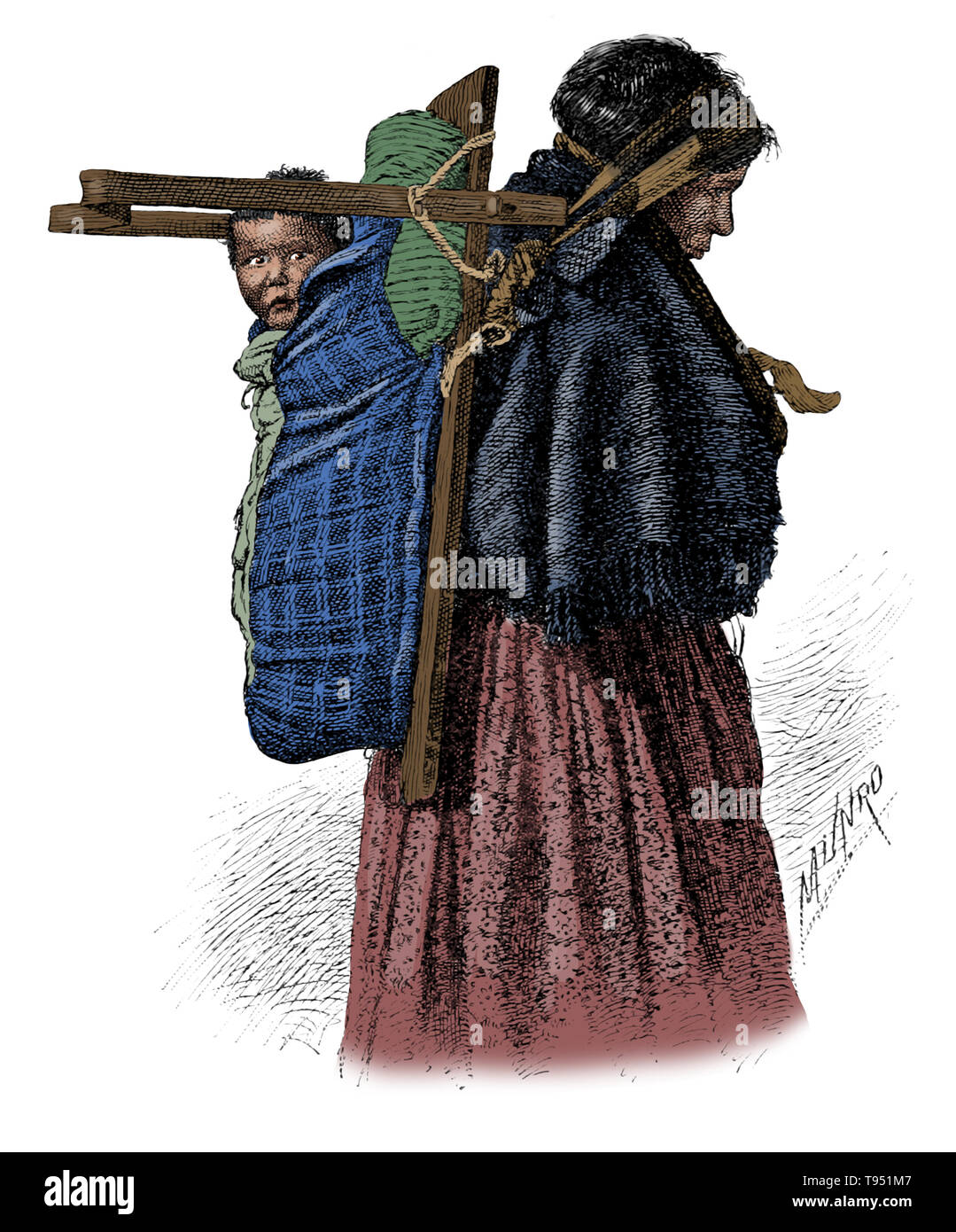 Image taken from page 46 of 'American Indians' by Frederick Starr, 1899. The Cree are one of the largest groups of First Nations/Native Americans in North America, with over 200,000 members living in Canada. In the United States, this Algonquian-speaking people historically lived from Lake Superior westward. Today, they live mostly in Montana, where they share a reservation with the Ojibwe (Chippewa). Stock Photohttps://www.alamy.com/image-license-details/?v=1https://www.alamy.com/image-taken-from-page-46-of-american-indians-by-frederick-starr-1899-the-cree-are-one-of-the-largest-groups-of-first-nationsnative-americans-in-north-america-with-over-200000-members-living-in-canada-in-the-united-states-this-algonquian-speaking-people-historically-lived-from-lake-superior-westward-today-they-live-mostly-in-montana-where-they-share-a-reservation-with-the-ojibwe-chippewa-image246588167.html
Image taken from page 46 of 'American Indians' by Frederick Starr, 1899. The Cree are one of the largest groups of First Nations/Native Americans in North America, with over 200,000 members living in Canada. In the United States, this Algonquian-speaking people historically lived from Lake Superior westward. Today, they live mostly in Montana, where they share a reservation with the Ojibwe (Chippewa). Stock Photohttps://www.alamy.com/image-license-details/?v=1https://www.alamy.com/image-taken-from-page-46-of-american-indians-by-frederick-starr-1899-the-cree-are-one-of-the-largest-groups-of-first-nationsnative-americans-in-north-america-with-over-200000-members-living-in-canada-in-the-united-states-this-algonquian-speaking-people-historically-lived-from-lake-superior-westward-today-they-live-mostly-in-montana-where-they-share-a-reservation-with-the-ojibwe-chippewa-image246588167.htmlRMT951M7–Image taken from page 46 of 'American Indians' by Frederick Starr, 1899. The Cree are one of the largest groups of First Nations/Native Americans in North America, with over 200,000 members living in Canada. In the United States, this Algonquian-speaking people historically lived from Lake Superior westward. Today, they live mostly in Montana, where they share a reservation with the Ojibwe (Chippewa).
 WABISHKEEPENAS (White Dove) a Chippeway (Ojibwe) man from the book ' History of the Indian Tribes of North America with biographical sketches and anecdotes of the principal chiefs. ' Volume 1 of 3 by Thomas Loraine,McKenney and James Hall Esq. Published in 1838 Painted by Charles Bird King Stock Photohttps://www.alamy.com/image-license-details/?v=1https://www.alamy.com/wabishkeepenas-white-dove-a-chippeway-ojibwe-man-from-the-book-history-of-the-indian-tribes-of-north-america-with-biographical-sketches-and-anecdotes-of-the-principal-chiefs-volume-1-of-3-by-thomas-lorainemckenney-and-james-hall-esq-published-in-1838-painted-by-charles-bird-king-image450083821.html
WABISHKEEPENAS (White Dove) a Chippeway (Ojibwe) man from the book ' History of the Indian Tribes of North America with biographical sketches and anecdotes of the principal chiefs. ' Volume 1 of 3 by Thomas Loraine,McKenney and James Hall Esq. Published in 1838 Painted by Charles Bird King Stock Photohttps://www.alamy.com/image-license-details/?v=1https://www.alamy.com/wabishkeepenas-white-dove-a-chippeway-ojibwe-man-from-the-book-history-of-the-indian-tribes-of-north-america-with-biographical-sketches-and-anecdotes-of-the-principal-chiefs-volume-1-of-3-by-thomas-lorainemckenney-and-james-hall-esq-published-in-1838-painted-by-charles-bird-king-image450083821.htmlRF2H472E5–WABISHKEEPENAS (White Dove) a Chippeway (Ojibwe) man from the book ' History of the Indian Tribes of North America with biographical sketches and anecdotes of the principal chiefs. ' Volume 1 of 3 by Thomas Loraine,McKenney and James Hall Esq. Published in 1838 Painted by Charles Bird King
 Ojibwe mother and daughter dressed in traditional ribbon dresses with a large basket of corn inside a bark covered longhouse, during a visit to the Huron Ouendat Indian Village in Midland, Ontario. (MR) Stock Photohttps://www.alamy.com/image-license-details/?v=1https://www.alamy.com/stock-photo-ojibwe-mother-and-daughter-dressed-in-traditional-ribbon-dresses-with-139201720.html
Ojibwe mother and daughter dressed in traditional ribbon dresses with a large basket of corn inside a bark covered longhouse, during a visit to the Huron Ouendat Indian Village in Midland, Ontario. (MR) Stock Photohttps://www.alamy.com/image-license-details/?v=1https://www.alamy.com/stock-photo-ojibwe-mother-and-daughter-dressed-in-traditional-ribbon-dresses-with-139201720.htmlRMJ2D560–Ojibwe mother and daughter dressed in traditional ribbon dresses with a large basket of corn inside a bark covered longhouse, during a visit to the Huron Ouendat Indian Village in Midland, Ontario. (MR)
 James Lasieur of the Lac Courte Orielles band of Ojibwe dances at the 39th Annual Honor the Earth Pow Wow held near Hayward, Wisconsin, USA -- July 21, 2012 Stock Photohttps://www.alamy.com/image-license-details/?v=1https://www.alamy.com/stock-photo-james-lasieur-of-the-lac-courte-orielles-band-of-ojibwe-dances-at-47008135.html
James Lasieur of the Lac Courte Orielles band of Ojibwe dances at the 39th Annual Honor the Earth Pow Wow held near Hayward, Wisconsin, USA -- July 21, 2012 Stock Photohttps://www.alamy.com/image-license-details/?v=1https://www.alamy.com/stock-photo-james-lasieur-of-the-lac-courte-orielles-band-of-ojibwe-dances-at-47008135.htmlRMCMDB9Y–James Lasieur of the Lac Courte Orielles band of Ojibwe dances at the 39th Annual Honor the Earth Pow Wow held near Hayward, Wisconsin, USA -- July 21, 2012
 Cuff, late 1800s. Northeast Woodlands, Great Lakes Region, Anishinaabe (Ojibwe) or Nehiyawak (Cree) People?. Velvet, satin, glass beads; overall: 12.7 x 30.2 cm (5 x 11 7/8 in Stock Photohttps://www.alamy.com/image-license-details/?v=1https://www.alamy.com/cuff-late-1800s-northeast-woodlands-great-lakes-region-anishinaabe-ojibwe-or-nehiyawak-cree-people-velvet-satin-glass-beads-overall-127-x-302-cm-5-x-11-78-in-image240433731.html
Cuff, late 1800s. Northeast Woodlands, Great Lakes Region, Anishinaabe (Ojibwe) or Nehiyawak (Cree) People?. Velvet, satin, glass beads; overall: 12.7 x 30.2 cm (5 x 11 7/8 in Stock Photohttps://www.alamy.com/image-license-details/?v=1https://www.alamy.com/cuff-late-1800s-northeast-woodlands-great-lakes-region-anishinaabe-ojibwe-or-nehiyawak-cree-people-velvet-satin-glass-beads-overall-127-x-302-cm-5-x-11-78-in-image240433731.htmlRMRY4KJY–Cuff, late 1800s. Northeast Woodlands, Great Lakes Region, Anishinaabe (Ojibwe) or Nehiyawak (Cree) People?. Velvet, satin, glass beads; overall: 12.7 x 30.2 cm (5 x 11 7/8 in
 Image taken from page 46 of 'American Indians' by Frederick Starr, 1899. The Cree are one of the largest groups of First Nations/Native Americans in North America, with over 200,000 members living in Canada. In the United States, this Algonquian-speaking people historically lived from Lake Superior westward. Today, they live mostly in Montana, where they share a reservation with the Ojibwe (Chippewa). Squaw is an English language loan word whose present meaning is: a Native American Indian woman of North America (regardless of tribe). At present, the term is often held to be offensive. A papoo Stock Photohttps://www.alamy.com/image-license-details/?v=1https://www.alamy.com/image-taken-from-page-46-of-american-indians-by-frederick-starr-1899-the-cree-are-one-of-the-largest-groups-of-first-nationsnative-americans-in-north-america-with-over-200000-members-living-in-canada-in-the-united-states-this-algonquian-speaking-people-historically-lived-from-lake-superior-westward-today-they-live-mostly-in-montana-where-they-share-a-reservation-with-the-ojibwe-chippewa-squaw-is-an-english-language-loan-word-whose-present-meaning-is-a-native-american-indian-woman-of-north-america-regardless-of-tribe-at-present-the-term-is-often-held-to-be-offensive-a-papoo-image352834820.html
Image taken from page 46 of 'American Indians' by Frederick Starr, 1899. The Cree are one of the largest groups of First Nations/Native Americans in North America, with over 200,000 members living in Canada. In the United States, this Algonquian-speaking people historically lived from Lake Superior westward. Today, they live mostly in Montana, where they share a reservation with the Ojibwe (Chippewa). Squaw is an English language loan word whose present meaning is: a Native American Indian woman of North America (regardless of tribe). At present, the term is often held to be offensive. A papoo Stock Photohttps://www.alamy.com/image-license-details/?v=1https://www.alamy.com/image-taken-from-page-46-of-american-indians-by-frederick-starr-1899-the-cree-are-one-of-the-largest-groups-of-first-nationsnative-americans-in-north-america-with-over-200000-members-living-in-canada-in-the-united-states-this-algonquian-speaking-people-historically-lived-from-lake-superior-westward-today-they-live-mostly-in-montana-where-they-share-a-reservation-with-the-ojibwe-chippewa-squaw-is-an-english-language-loan-word-whose-present-meaning-is-a-native-american-indian-woman-of-north-america-regardless-of-tribe-at-present-the-term-is-often-held-to-be-offensive-a-papoo-image352834820.htmlRM2BE10BG–Image taken from page 46 of 'American Indians' by Frederick Starr, 1899. The Cree are one of the largest groups of First Nations/Native Americans in North America, with over 200,000 members living in Canada. In the United States, this Algonquian-speaking people historically lived from Lake Superior westward. Today, they live mostly in Montana, where they share a reservation with the Ojibwe (Chippewa). Squaw is an English language loan word whose present meaning is: a Native American Indian woman of North America (regardless of tribe). At present, the term is often held to be offensive. A papoo
 Ojibway story teller tells the story of How The Turtle Got Its Shell while holding a coyote pelt at winter festival Stock Photohttps://www.alamy.com/image-license-details/?v=1https://www.alamy.com/stock-photo-ojibway-story-teller-tells-the-story-of-how-the-turtle-got-its-shell-78158056.html
Ojibway story teller tells the story of How The Turtle Got Its Shell while holding a coyote pelt at winter festival Stock Photohttps://www.alamy.com/image-license-details/?v=1https://www.alamy.com/stock-photo-ojibway-story-teller-tells-the-story-of-how-the-turtle-got-its-shell-78158056.htmlRMEF4BB4–Ojibway story teller tells the story of How The Turtle Got Its Shell while holding a coyote pelt at winter festival
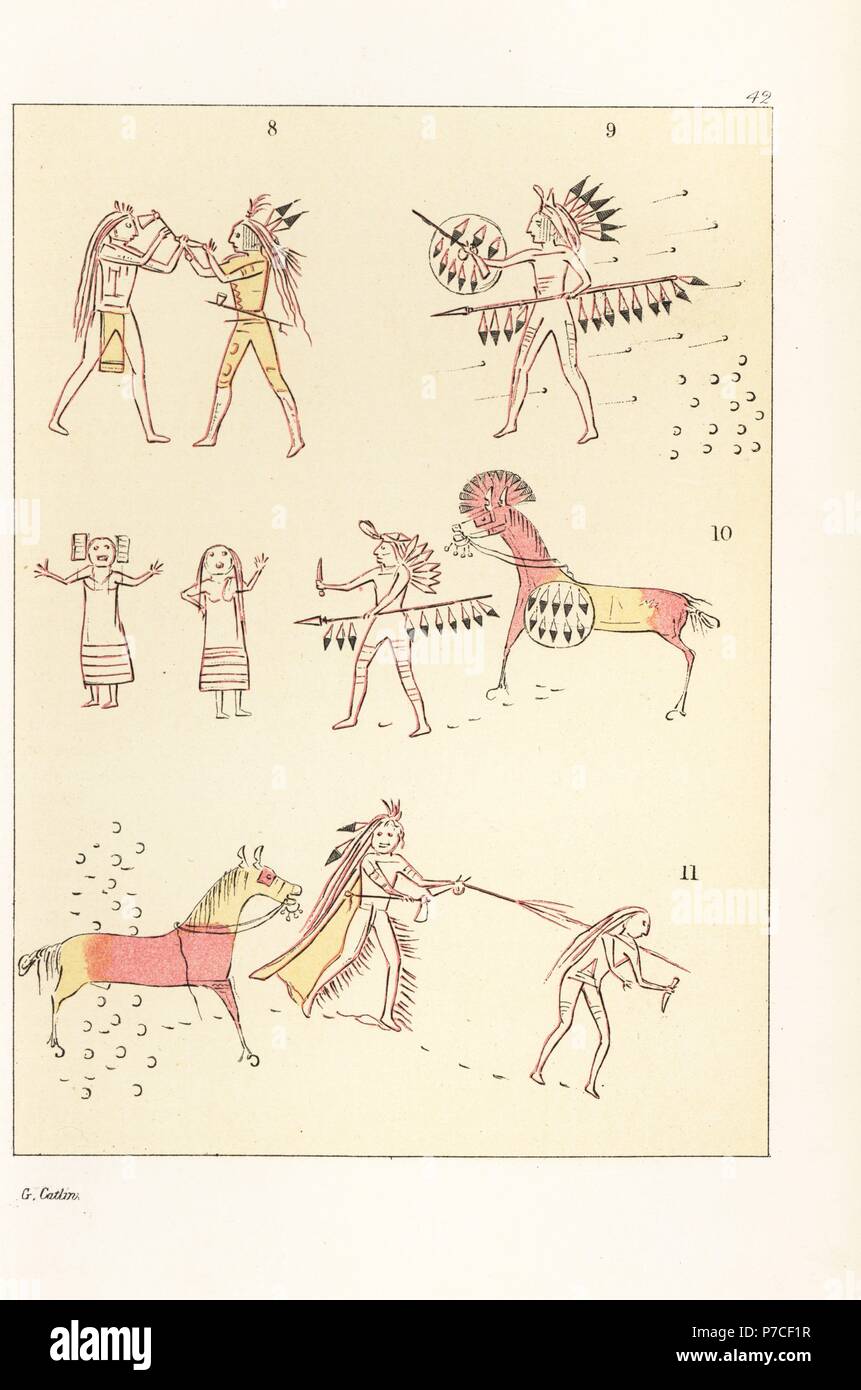 Battle scenes of the decorated robe of Mandan second chief Mah-to-toh-pa, Four Bears. Victory over a Cheyenne chief 8, standing alone against a party of Assiniboin 9, scalping two Ojibwe women 10, and shooting an Assiniboin warrior 11. Handcoloured lithograph from George Catlin's Manners, Customs and Condition of the North American Indians, London, 1841. Stock Photohttps://www.alamy.com/image-license-details/?v=1https://www.alamy.com/battle-scenes-of-the-decorated-robe-of-mandan-second-chief-mah-to-toh-pa-four-bears-victory-over-a-cheyenne-chief-8-standing-alone-against-a-party-of-assiniboin-9-scalping-two-ojibwe-women-10-and-shooting-an-assiniboin-warrior-11-handcoloured-lithograph-from-george-catlins-manners-customs-and-condition-of-the-north-american-indians-london-1841-image211102243.html
Battle scenes of the decorated robe of Mandan second chief Mah-to-toh-pa, Four Bears. Victory over a Cheyenne chief 8, standing alone against a party of Assiniboin 9, scalping two Ojibwe women 10, and shooting an Assiniboin warrior 11. Handcoloured lithograph from George Catlin's Manners, Customs and Condition of the North American Indians, London, 1841. Stock Photohttps://www.alamy.com/image-license-details/?v=1https://www.alamy.com/battle-scenes-of-the-decorated-robe-of-mandan-second-chief-mah-to-toh-pa-four-bears-victory-over-a-cheyenne-chief-8-standing-alone-against-a-party-of-assiniboin-9-scalping-two-ojibwe-women-10-and-shooting-an-assiniboin-warrior-11-handcoloured-lithograph-from-george-catlins-manners-customs-and-condition-of-the-north-american-indians-london-1841-image211102243.htmlRMP7CF1R–Battle scenes of the decorated robe of Mandan second chief Mah-to-toh-pa, Four Bears. Victory over a Cheyenne chief 8, standing alone against a party of Assiniboin 9, scalping two Ojibwe women 10, and shooting an Assiniboin warrior 11. Handcoloured lithograph from George Catlin's Manners, Customs and Condition of the North American Indians, London, 1841.
 Emblem of the Anishinaabe People. Stock Photohttps://www.alamy.com/image-license-details/?v=1https://www.alamy.com/stock-photo-emblem-of-the-anishinaabe-people-147060043.html
Emblem of the Anishinaabe People. Stock Photohttps://www.alamy.com/image-license-details/?v=1https://www.alamy.com/stock-photo-emblem-of-the-anishinaabe-people-147060043.htmlRMJF74GB–Emblem of the Anishinaabe People.
![Untitled (Indian Chief Maungwudaus, Upper Canada), 1855. [Ojibwe performer, interpreter, mission worker, and herbalist]. Daguerreotype. Stock Photo Untitled (Indian Chief Maungwudaus, Upper Canada), 1855. [Ojibwe performer, interpreter, mission worker, and herbalist]. Daguerreotype. Stock Photo](https://c8.alamy.com/comp/2GPP15H/untitled-indian-chief-maungwudaus-upper-canada-1855-ojibwe-performer-interpreter-mission-worker-and-herbalist-daguerreotype-2GPP15H.jpg) Untitled (Indian Chief Maungwudaus, Upper Canada), 1855. [Ojibwe performer, interpreter, mission worker, and herbalist]. Daguerreotype. Stock Photohttps://www.alamy.com/image-license-details/?v=1https://www.alamy.com/untitled-indian-chief-maungwudaus-upper-canada-1855-ojibwe-performer-interpreter-mission-worker-and-herbalist-daguerreotype-image444265517.html
Untitled (Indian Chief Maungwudaus, Upper Canada), 1855. [Ojibwe performer, interpreter, mission worker, and herbalist]. Daguerreotype. Stock Photohttps://www.alamy.com/image-license-details/?v=1https://www.alamy.com/untitled-indian-chief-maungwudaus-upper-canada-1855-ojibwe-performer-interpreter-mission-worker-and-herbalist-daguerreotype-image444265517.htmlRM2GPP15H–Untitled (Indian Chief Maungwudaus, Upper Canada), 1855. [Ojibwe performer, interpreter, mission worker, and herbalist]. Daguerreotype.
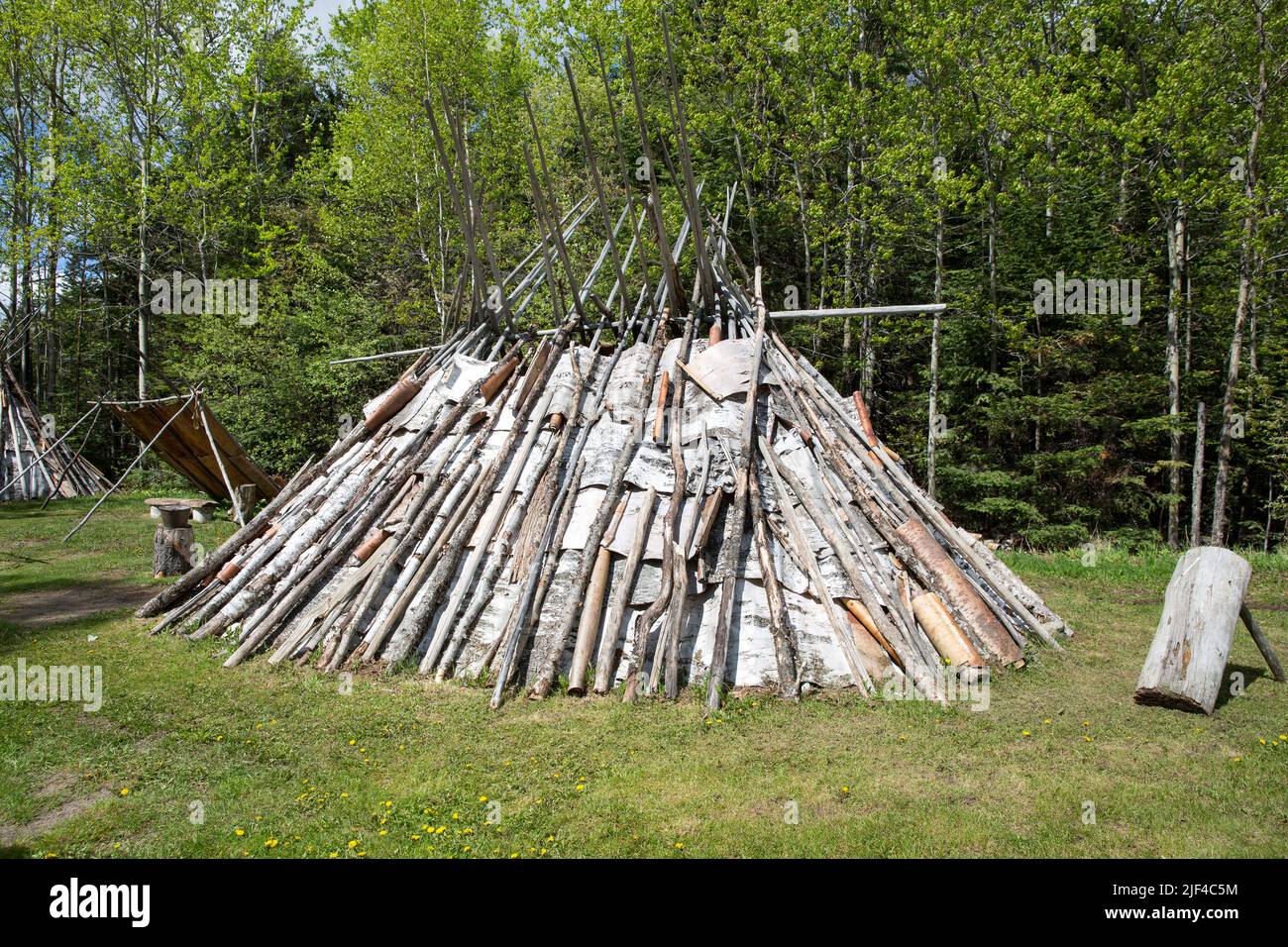 A replica of an Ojibwa, Ojibwe, or Anishinaabe birch bark oval shaped wigwam dwelling at Grand Portage National Monument in Northern Minnesota, USA Stock Photohttps://www.alamy.com/image-license-details/?v=1https://www.alamy.com/a-replica-of-an-ojibwa-ojibwe-or-anishinaabe-birch-bark-oval-shaped-wigwam-dwelling-at-grand-portage-national-monument-in-northern-minnesota-usa-image473997152.html
A replica of an Ojibwa, Ojibwe, or Anishinaabe birch bark oval shaped wigwam dwelling at Grand Portage National Monument in Northern Minnesota, USA Stock Photohttps://www.alamy.com/image-license-details/?v=1https://www.alamy.com/a-replica-of-an-ojibwa-ojibwe-or-anishinaabe-birch-bark-oval-shaped-wigwam-dwelling-at-grand-portage-national-monument-in-northern-minnesota-usa-image473997152.htmlRF2JF4C5M–A replica of an Ojibwa, Ojibwe, or Anishinaabe birch bark oval shaped wigwam dwelling at Grand Portage National Monument in Northern Minnesota, USA
 Not-een-a-akm, the Strong Wind, man of the Ojibwe nation. Stock Photohttps://www.alamy.com/image-license-details/?v=1https://www.alamy.com/stock-photo-not-een-a-akm-the-strong-wind-man-of-the-ojibwe-nation-72553856.html
Not-een-a-akm, the Strong Wind, man of the Ojibwe nation. Stock Photohttps://www.alamy.com/image-license-details/?v=1https://www.alamy.com/stock-photo-not-een-a-akm-the-strong-wind-man-of-the-ojibwe-nation-72553856.htmlRME61354–Not-een-a-akm, the Strong Wind, man of the Ojibwe nation.
 Engraved drawing of the Chippewa Indian people making canoes, from the book 'Ridpath's Universal history' by John Clark Ridpath, 1897. Courtesy Internet Archive. () Stock Photohttps://www.alamy.com/image-license-details/?v=1https://www.alamy.com/engraved-drawing-of-the-chippewa-indian-people-making-canoes-from-the-book-ridpaths-universal-history-by-john-clark-ridpath-1897-courtesy-internet-archive-image261105448.html
Engraved drawing of the Chippewa Indian people making canoes, from the book 'Ridpath's Universal history' by John Clark Ridpath, 1897. Courtesy Internet Archive. () Stock Photohttps://www.alamy.com/image-license-details/?v=1https://www.alamy.com/engraved-drawing-of-the-chippewa-indian-people-making-canoes-from-the-book-ridpaths-universal-history-by-john-clark-ridpath-1897-courtesy-internet-archive-image261105448.htmlRMW4PAJG–Engraved drawing of the Chippewa Indian people making canoes, from the book 'Ridpath's Universal history' by John Clark Ridpath, 1897. Courtesy Internet Archive. ()
 Hiawatha 1871–72, carved 1874 Augustus Saint-Gaudens American Saint-Gaudens’s three years of study in Paris came to an abrupt end with the outbreak of the Franco-Prussian War. He left for Rome in late 1870 and soon began Hiawatha, his first full-length statue, inspired by Henry Wadsworth Longfellow’s epic poem 'The Song of Hiawatha' (1855). Seated on a rock in a contemplative pose, with his quiver of arrows and bow nearby, the fictional Ojibwe chief is 'pondering, musing in the forest /On the welfare of his people,' as an excerpt from Longfellow’s poem inscribed on the base declares. Saint-Gau Stock Photohttps://www.alamy.com/image-license-details/?v=1https://www.alamy.com/hiawatha-187172-carved-1874-augustus-saint-gaudens-american-saint-gaudenss-three-years-of-study-in-paris-came-to-an-abrupt-end-with-the-outbreak-of-the-franco-prussian-war-he-left-for-rome-in-late-1870-and-soon-began-hiawatha-his-first-full-length-statue-inspired-by-henry-wadsworth-longfellows-epic-poem-the-song-of-hiawatha-1855-seated-on-a-rock-in-a-contemplative-pose-with-his-quiver-of-arrows-and-bow-nearby-the-fictional-ojibwe-chief-is-pondering-musing-in-the-forest-on-the-welfare-of-his-people-as-an-excerpt-from-longfellows-poem-inscribed-on-the-base-declares-saint-gau-image458187593.html
Hiawatha 1871–72, carved 1874 Augustus Saint-Gaudens American Saint-Gaudens’s three years of study in Paris came to an abrupt end with the outbreak of the Franco-Prussian War. He left for Rome in late 1870 and soon began Hiawatha, his first full-length statue, inspired by Henry Wadsworth Longfellow’s epic poem 'The Song of Hiawatha' (1855). Seated on a rock in a contemplative pose, with his quiver of arrows and bow nearby, the fictional Ojibwe chief is 'pondering, musing in the forest /On the welfare of his people,' as an excerpt from Longfellow’s poem inscribed on the base declares. Saint-Gau Stock Photohttps://www.alamy.com/image-license-details/?v=1https://www.alamy.com/hiawatha-187172-carved-1874-augustus-saint-gaudens-american-saint-gaudenss-three-years-of-study-in-paris-came-to-an-abrupt-end-with-the-outbreak-of-the-franco-prussian-war-he-left-for-rome-in-late-1870-and-soon-began-hiawatha-his-first-full-length-statue-inspired-by-henry-wadsworth-longfellows-epic-poem-the-song-of-hiawatha-1855-seated-on-a-rock-in-a-contemplative-pose-with-his-quiver-of-arrows-and-bow-nearby-the-fictional-ojibwe-chief-is-pondering-musing-in-the-forest-on-the-welfare-of-his-people-as-an-excerpt-from-longfellows-poem-inscribed-on-the-base-declares-saint-gau-image458187593.htmlRM2HHC6XH–Hiawatha 1871–72, carved 1874 Augustus Saint-Gaudens American Saint-Gaudens’s three years of study in Paris came to an abrupt end with the outbreak of the Franco-Prussian War. He left for Rome in late 1870 and soon began Hiawatha, his first full-length statue, inspired by Henry Wadsworth Longfellow’s epic poem 'The Song of Hiawatha' (1855). Seated on a rock in a contemplative pose, with his quiver of arrows and bow nearby, the fictional Ojibwe chief is 'pondering, musing in the forest /On the welfare of his people,' as an excerpt from Longfellow’s poem inscribed on the base declares. Saint-Gau
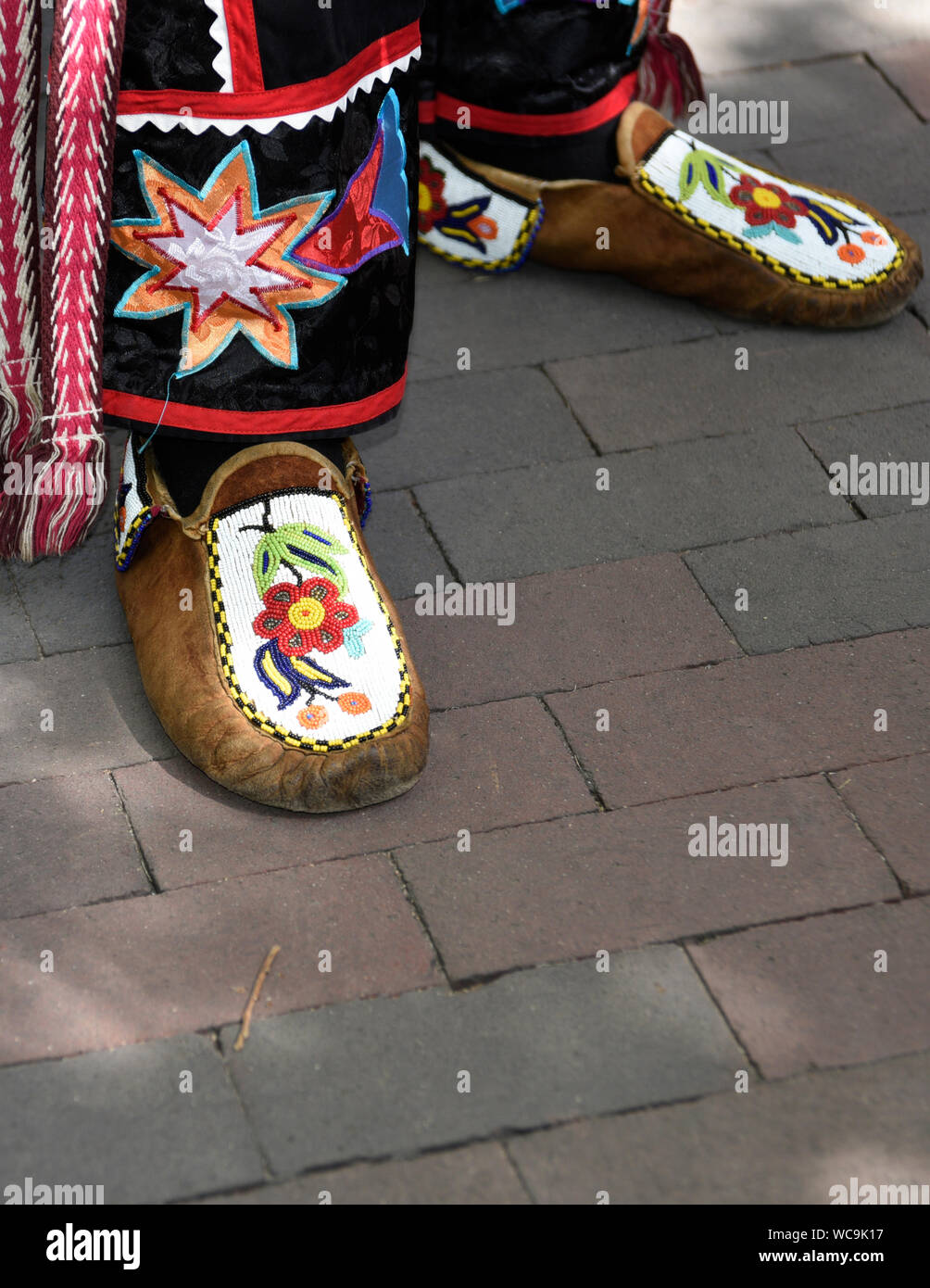 A Native American man wearing traditional Ojibwe beaded moccasins participates in a Native clothing contest at Santa Fe Indian Market in Santa Fe, NM. Stock Photohttps://www.alamy.com/image-license-details/?v=1https://www.alamy.com/a-native-american-man-wearing-traditional-ojibwe-beaded-moccasins-participates-in-a-native-clothing-contest-at-santa-fe-indian-market-in-santa-fe-nm-image265743891.html
A Native American man wearing traditional Ojibwe beaded moccasins participates in a Native clothing contest at Santa Fe Indian Market in Santa Fe, NM. Stock Photohttps://www.alamy.com/image-license-details/?v=1https://www.alamy.com/a-native-american-man-wearing-traditional-ojibwe-beaded-moccasins-participates-in-a-native-clothing-contest-at-santa-fe-indian-market-in-santa-fe-nm-image265743891.htmlRMWC9K17–A Native American man wearing traditional Ojibwe beaded moccasins participates in a Native clothing contest at Santa Fe Indian Market in Santa Fe, NM.
 Chief Ignatius Petoskey's statue overlooking the bay at sunset Stock Photohttps://www.alamy.com/image-license-details/?v=1https://www.alamy.com/chief-ignatius-petoskeys-statue-overlooking-the-bay-at-sunset-image479991773.html
Chief Ignatius Petoskey's statue overlooking the bay at sunset Stock Photohttps://www.alamy.com/image-license-details/?v=1https://www.alamy.com/chief-ignatius-petoskeys-statue-overlooking-the-bay-at-sunset-image479991773.htmlRF2JTWEB9–Chief Ignatius Petoskey's statue overlooking the bay at sunset
 A colorful monument with national flags and celebration of the many immigrants that settled St. Cloud, MN pre-1880, marker in black granite Stock Photohttps://www.alamy.com/image-license-details/?v=1https://www.alamy.com/a-colorful-monument-with-national-flags-and-celebration-of-the-many-immigrants-that-settled-st-cloud-mn-pre-1880-marker-in-black-granite-image360695548.html
A colorful monument with national flags and celebration of the many immigrants that settled St. Cloud, MN pre-1880, marker in black granite Stock Photohttps://www.alamy.com/image-license-details/?v=1https://www.alamy.com/a-colorful-monument-with-national-flags-and-celebration-of-the-many-immigrants-that-settled-st-cloud-mn-pre-1880-marker-in-black-granite-image360695548.htmlRM2BXR2RT–A colorful monument with national flags and celebration of the many immigrants that settled St. Cloud, MN pre-1880, marker in black granite
 Canada indigenous, First Nations, native Ojibwe/Chippewa indigenous woman checks her cell phone during a Pow Wow celebration, London, Ontario, Canada. Stock Photohttps://www.alamy.com/image-license-details/?v=1https://www.alamy.com/canada-indigenous-first-nations-native-ojibwechippewa-indigenous-woman-image159919011.html
Canada indigenous, First Nations, native Ojibwe/Chippewa indigenous woman checks her cell phone during a Pow Wow celebration, London, Ontario, Canada. Stock Photohttps://www.alamy.com/image-license-details/?v=1https://www.alamy.com/canada-indigenous-first-nations-native-ojibwechippewa-indigenous-woman-image159919011.htmlRMK84X97–Canada indigenous, First Nations, native Ojibwe/Chippewa indigenous woman checks her cell phone during a Pow Wow celebration, London, Ontario, Canada.
 3D Emblem of the Anishinaabe People. Close Up. Stock Photohttps://www.alamy.com/image-license-details/?v=1https://www.alamy.com/stock-photo-3d-emblem-of-the-anishinaabe-people-close-up-86504705.html
3D Emblem of the Anishinaabe People. Close Up. Stock Photohttps://www.alamy.com/image-license-details/?v=1https://www.alamy.com/stock-photo-3d-emblem-of-the-anishinaabe-people-close-up-86504705.htmlRFF0MHHN–3D Emblem of the Anishinaabe People. Close Up.
 Kah-Ge-Ga-Gah-Bowh, the Ojibbeway Chief, sketched during the Temperance Meeting in Drury-Lane Theatre, 1850. Missionary minister the Rev. George Copway said that 'The Indians received the first white men with kindness and hospitality; but the white men requited them by robbing them of their corn, and, worse still, by introducing the destroying "fire-water" among them'. The reverend spoke of '...his plan for the re-settlement of the Indians, stating that he had marked out on a map a space of 150 miles square, between the Missouri and Mississippi, at the base of the Rocky Mountains, in Stock Photohttps://www.alamy.com/image-license-details/?v=1https://www.alamy.com/kah-ge-ga-gah-bowh-the-ojibbeway-chief-sketched-during-the-temperance-meeting-in-drury-lane-theatre-1850-missionary-minister-the-rev-george-copway-said-that-the-indians-received-the-first-white-men-with-kindness-and-hospitality-but-the-white-men-requited-them-by-robbing-them-of-their-corn-and-worse-still-by-introducing-the-destroying-quotfire-waterquot-among-them-the-reverend-spoke-of-his-plan-for-the-re-settlement-of-the-indians-stating-that-he-had-marked-out-on-a-map-a-space-of-150-miles-square-between-the-missouri-and-mississippi-at-the-base-of-the-rocky-mountains-in-image462361164.html
Kah-Ge-Ga-Gah-Bowh, the Ojibbeway Chief, sketched during the Temperance Meeting in Drury-Lane Theatre, 1850. Missionary minister the Rev. George Copway said that 'The Indians received the first white men with kindness and hospitality; but the white men requited them by robbing them of their corn, and, worse still, by introducing the destroying "fire-water" among them'. The reverend spoke of '...his plan for the re-settlement of the Indians, stating that he had marked out on a map a space of 150 miles square, between the Missouri and Mississippi, at the base of the Rocky Mountains, in Stock Photohttps://www.alamy.com/image-license-details/?v=1https://www.alamy.com/kah-ge-ga-gah-bowh-the-ojibbeway-chief-sketched-during-the-temperance-meeting-in-drury-lane-theatre-1850-missionary-minister-the-rev-george-copway-said-that-the-indians-received-the-first-white-men-with-kindness-and-hospitality-but-the-white-men-requited-them-by-robbing-them-of-their-corn-and-worse-still-by-introducing-the-destroying-quotfire-waterquot-among-them-the-reverend-spoke-of-his-plan-for-the-re-settlement-of-the-indians-stating-that-he-had-marked-out-on-a-map-a-space-of-150-miles-square-between-the-missouri-and-mississippi-at-the-base-of-the-rocky-mountains-in-image462361164.htmlRM2HT6AAM–Kah-Ge-Ga-Gah-Bowh, the Ojibbeway Chief, sketched during the Temperance Meeting in Drury-Lane Theatre, 1850. Missionary minister the Rev. George Copway said that 'The Indians received the first white men with kindness and hospitality; but the white men requited them by robbing them of their corn, and, worse still, by introducing the destroying "fire-water" among them'. The reverend spoke of '...his plan for the re-settlement of the Indians, stating that he had marked out on a map a space of 150 miles square, between the Missouri and Mississippi, at the base of the Rocky Mountains, in
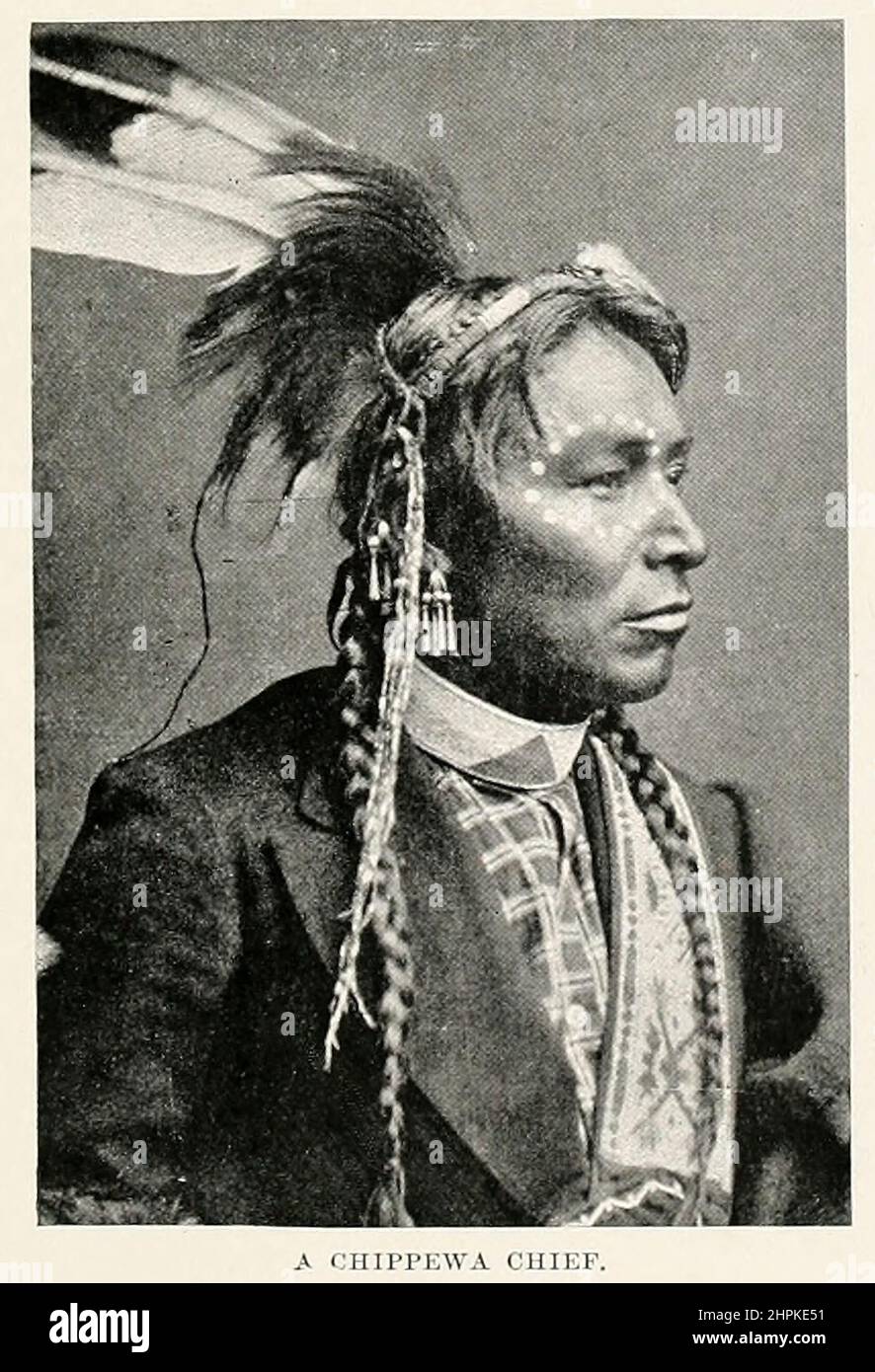 A Chippewa chief The Ojibwe, Ojibwa, Chippewa, or Saulteaux are an Anishinaabe people in what is currently southern Canada, the northern Midwestern United States, and Northern Plains. From the book The living races of mankind; Volume 2 by Henry Neville Hutchinson, Published in London in 1901 by Hutchinson & co Stock Photohttps://www.alamy.com/image-license-details/?v=1https://www.alamy.com/a-chippewa-chief-the-ojibwe-ojibwa-chippewa-or-saulteaux-are-an-anishinaabe-people-in-what-is-currently-southern-canada-the-northern-midwestern-united-states-and-northern-plains-from-the-book-the-living-races-of-mankind-volume-2-by-henry-neville-hutchinson-published-in-london-in-1901-by-hutchinson-co-image461420205.html
A Chippewa chief The Ojibwe, Ojibwa, Chippewa, or Saulteaux are an Anishinaabe people in what is currently southern Canada, the northern Midwestern United States, and Northern Plains. From the book The living races of mankind; Volume 2 by Henry Neville Hutchinson, Published in London in 1901 by Hutchinson & co Stock Photohttps://www.alamy.com/image-license-details/?v=1https://www.alamy.com/a-chippewa-chief-the-ojibwe-ojibwa-chippewa-or-saulteaux-are-an-anishinaabe-people-in-what-is-currently-southern-canada-the-northern-midwestern-united-states-and-northern-plains-from-the-book-the-living-races-of-mankind-volume-2-by-henry-neville-hutchinson-published-in-london-in-1901-by-hutchinson-co-image461420205.htmlRF2HPKE51–A Chippewa chief The Ojibwe, Ojibwa, Chippewa, or Saulteaux are an Anishinaabe people in what is currently southern Canada, the northern Midwestern United States, and Northern Plains. From the book The living races of mankind; Volume 2 by Henry Neville Hutchinson, Published in London in 1901 by Hutchinson & co
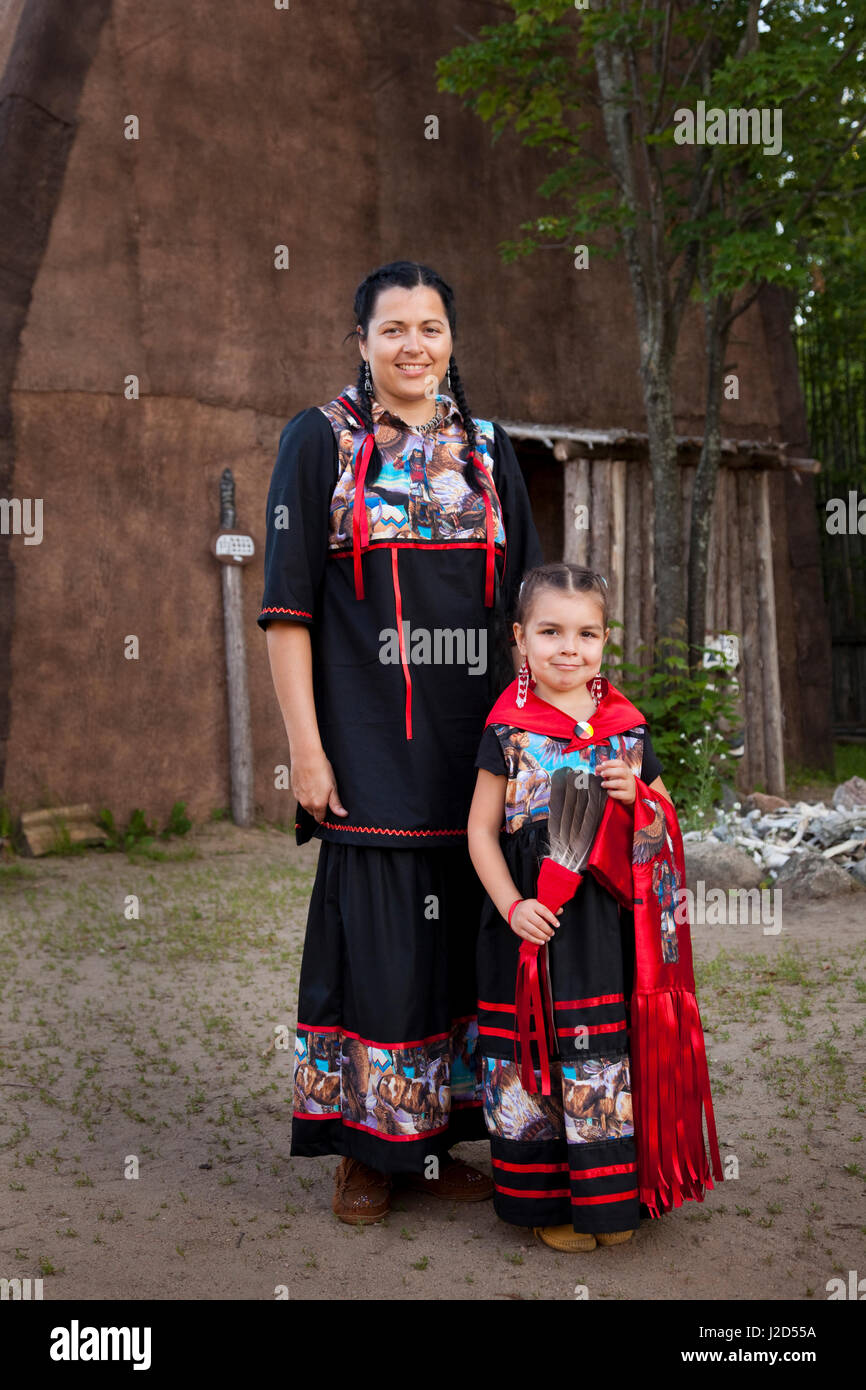 Ojibwe mother and daughter dressed in traditional ribbon dresses visit the Huron Indian Village in Midland, Ontario. (MR) Stock Photohttps://www.alamy.com/image-license-details/?v=1https://www.alamy.com/stock-photo-ojibwe-mother-and-daughter-dressed-in-traditional-ribbon-dresses-visit-139201702.html
Ojibwe mother and daughter dressed in traditional ribbon dresses visit the Huron Indian Village in Midland, Ontario. (MR) Stock Photohttps://www.alamy.com/image-license-details/?v=1https://www.alamy.com/stock-photo-ojibwe-mother-and-daughter-dressed-in-traditional-ribbon-dresses-visit-139201702.htmlRMJ2D55A–Ojibwe mother and daughter dressed in traditional ribbon dresses visit the Huron Indian Village in Midland, Ontario. (MR)
 James Lasieur of the Lac Courte Orielles band of Ojibwe dances at the 39th Annual Honor the Earth Pow Wow held near Hayward, Wisconsin, USA -- July 21, 2012 Stock Photohttps://www.alamy.com/image-license-details/?v=1https://www.alamy.com/stock-photo-james-lasieur-of-the-lac-courte-orielles-band-of-ojibwe-dances-at-47008158.html
James Lasieur of the Lac Courte Orielles band of Ojibwe dances at the 39th Annual Honor the Earth Pow Wow held near Hayward, Wisconsin, USA -- July 21, 2012 Stock Photohttps://www.alamy.com/image-license-details/?v=1https://www.alamy.com/stock-photo-james-lasieur-of-the-lac-courte-orielles-band-of-ojibwe-dances-at-47008158.htmlRMCMDBAP–James Lasieur of the Lac Courte Orielles band of Ojibwe dances at the 39th Annual Honor the Earth Pow Wow held near Hayward, Wisconsin, USA -- July 21, 2012
 Cuff, late 1800s. Northeast Woodlands, Great Lakes Region, Anishinaabe (Ojibwe) or Nehiyawak (Cree) People?. Velvet, satin, glass beads; overall: 12.1 x 29.8 cm (4 3/4 x 11 3/4 in Stock Photohttps://www.alamy.com/image-license-details/?v=1https://www.alamy.com/cuff-late-1800s-northeast-woodlands-great-lakes-region-anishinaabe-ojibwe-or-nehiyawak-cree-people-velvet-satin-glass-beads-overall-121-x-298-cm-4-34-x-11-34-in-image240433730.html
Cuff, late 1800s. Northeast Woodlands, Great Lakes Region, Anishinaabe (Ojibwe) or Nehiyawak (Cree) People?. Velvet, satin, glass beads; overall: 12.1 x 29.8 cm (4 3/4 x 11 3/4 in Stock Photohttps://www.alamy.com/image-license-details/?v=1https://www.alamy.com/cuff-late-1800s-northeast-woodlands-great-lakes-region-anishinaabe-ojibwe-or-nehiyawak-cree-people-velvet-satin-glass-beads-overall-121-x-298-cm-4-34-x-11-34-in-image240433730.htmlRMRY4KJX–Cuff, late 1800s. Northeast Woodlands, Great Lakes Region, Anishinaabe (Ojibwe) or Nehiyawak (Cree) People?. Velvet, satin, glass beads; overall: 12.1 x 29.8 cm (4 3/4 x 11 3/4 in
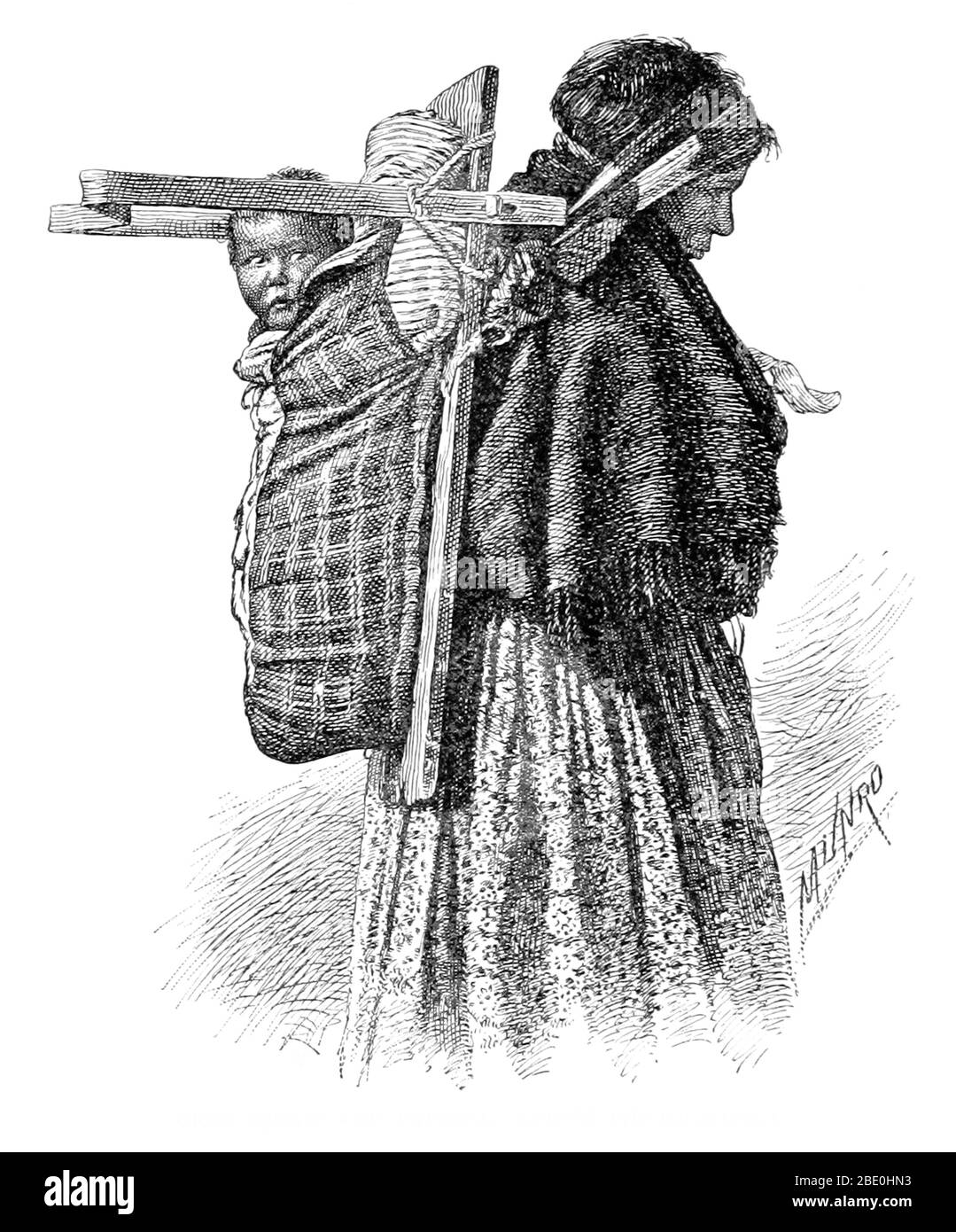 Image taken from page 46 of 'American Indians' by Frederick Starr, 1899. The Cree are one of the largest groups of First Nations/Native Americans in North America, with over 200,000 members living in Canada. In the United States, this Algonquian-speaking people historically lived from Lake Superior westward. Today, they live mostly in Montana, where they share a reservation with the Ojibwe (Chippewa). Squaw is an English language loan word whose present meaning is: a Native American Indian woman of North America (regardless of tribe). At present, the term is often held to be offensive. A papoo Stock Photohttps://www.alamy.com/image-license-details/?v=1https://www.alamy.com/image-taken-from-page-46-of-american-indians-by-frederick-starr-1899-the-cree-are-one-of-the-largest-groups-of-first-nationsnative-americans-in-north-america-with-over-200000-members-living-in-canada-in-the-united-states-this-algonquian-speaking-people-historically-lived-from-lake-superior-westward-today-they-live-mostly-in-montana-where-they-share-a-reservation-with-the-ojibwe-chippewa-squaw-is-an-english-language-loan-word-whose-present-meaning-is-a-native-american-indian-woman-of-north-america-regardless-of-tribe-at-present-the-term-is-often-held-to-be-offensive-a-papoo-image352826463.html
Image taken from page 46 of 'American Indians' by Frederick Starr, 1899. The Cree are one of the largest groups of First Nations/Native Americans in North America, with over 200,000 members living in Canada. In the United States, this Algonquian-speaking people historically lived from Lake Superior westward. Today, they live mostly in Montana, where they share a reservation with the Ojibwe (Chippewa). Squaw is an English language loan word whose present meaning is: a Native American Indian woman of North America (regardless of tribe). At present, the term is often held to be offensive. A papoo Stock Photohttps://www.alamy.com/image-license-details/?v=1https://www.alamy.com/image-taken-from-page-46-of-american-indians-by-frederick-starr-1899-the-cree-are-one-of-the-largest-groups-of-first-nationsnative-americans-in-north-america-with-over-200000-members-living-in-canada-in-the-united-states-this-algonquian-speaking-people-historically-lived-from-lake-superior-westward-today-they-live-mostly-in-montana-where-they-share-a-reservation-with-the-ojibwe-chippewa-squaw-is-an-english-language-loan-word-whose-present-meaning-is-a-native-american-indian-woman-of-north-america-regardless-of-tribe-at-present-the-term-is-often-held-to-be-offensive-a-papoo-image352826463.htmlRM2BE0HN3–Image taken from page 46 of 'American Indians' by Frederick Starr, 1899. The Cree are one of the largest groups of First Nations/Native Americans in North America, with over 200,000 members living in Canada. In the United States, this Algonquian-speaking people historically lived from Lake Superior westward. Today, they live mostly in Montana, where they share a reservation with the Ojibwe (Chippewa). Squaw is an English language loan word whose present meaning is: a Native American Indian woman of North America (regardless of tribe). At present, the term is often held to be offensive. A papoo
 The Mishibizhiw or Great Lynx, along with canoes and serpents, are part of the Agawa Rock Pictographs. The rock art was created by the Ojibway people Stock Photohttps://www.alamy.com/image-license-details/?v=1https://www.alamy.com/the-mishibizhiw-or-great-lynx-along-with-canoes-and-serpents-are-part-of-the-agawa-rock-pictographs-the-rock-art-was-created-by-the-ojibway-people-image598542933.html
The Mishibizhiw or Great Lynx, along with canoes and serpents, are part of the Agawa Rock Pictographs. The rock art was created by the Ojibway people Stock Photohttps://www.alamy.com/image-license-details/?v=1https://www.alamy.com/the-mishibizhiw-or-great-lynx-along-with-canoes-and-serpents-are-part-of-the-agawa-rock-pictographs-the-rock-art-was-created-by-the-ojibway-people-image598542933.htmlRF2WNNYH9–The Mishibizhiw or Great Lynx, along with canoes and serpents, are part of the Agawa Rock Pictographs. The rock art was created by the Ojibway people
 Sha-co-pay, Chief of the Ojibwe nation 35, and one of his squaws 36. Handcoloured lithograph from George Catlin's Manners, Customs and Condition of the North American Indians, London, 1841. Stock Photohttps://www.alamy.com/image-license-details/?v=1https://www.alamy.com/sha-co-pay-chief-of-the-ojibwe-nation-35-and-one-of-his-squaws-36-handcoloured-lithograph-from-george-catlins-manners-customs-and-condition-of-the-north-american-indians-london-1841-image211156898.html
Sha-co-pay, Chief of the Ojibwe nation 35, and one of his squaws 36. Handcoloured lithograph from George Catlin's Manners, Customs and Condition of the North American Indians, London, 1841. Stock Photohttps://www.alamy.com/image-license-details/?v=1https://www.alamy.com/sha-co-pay-chief-of-the-ojibwe-nation-35-and-one-of-his-squaws-36-handcoloured-lithograph-from-george-catlins-manners-customs-and-condition-of-the-north-american-indians-london-1841-image211156898.htmlRMP7F0NP–Sha-co-pay, Chief of the Ojibwe nation 35, and one of his squaws 36. Handcoloured lithograph from George Catlin's Manners, Customs and Condition of the North American Indians, London, 1841.
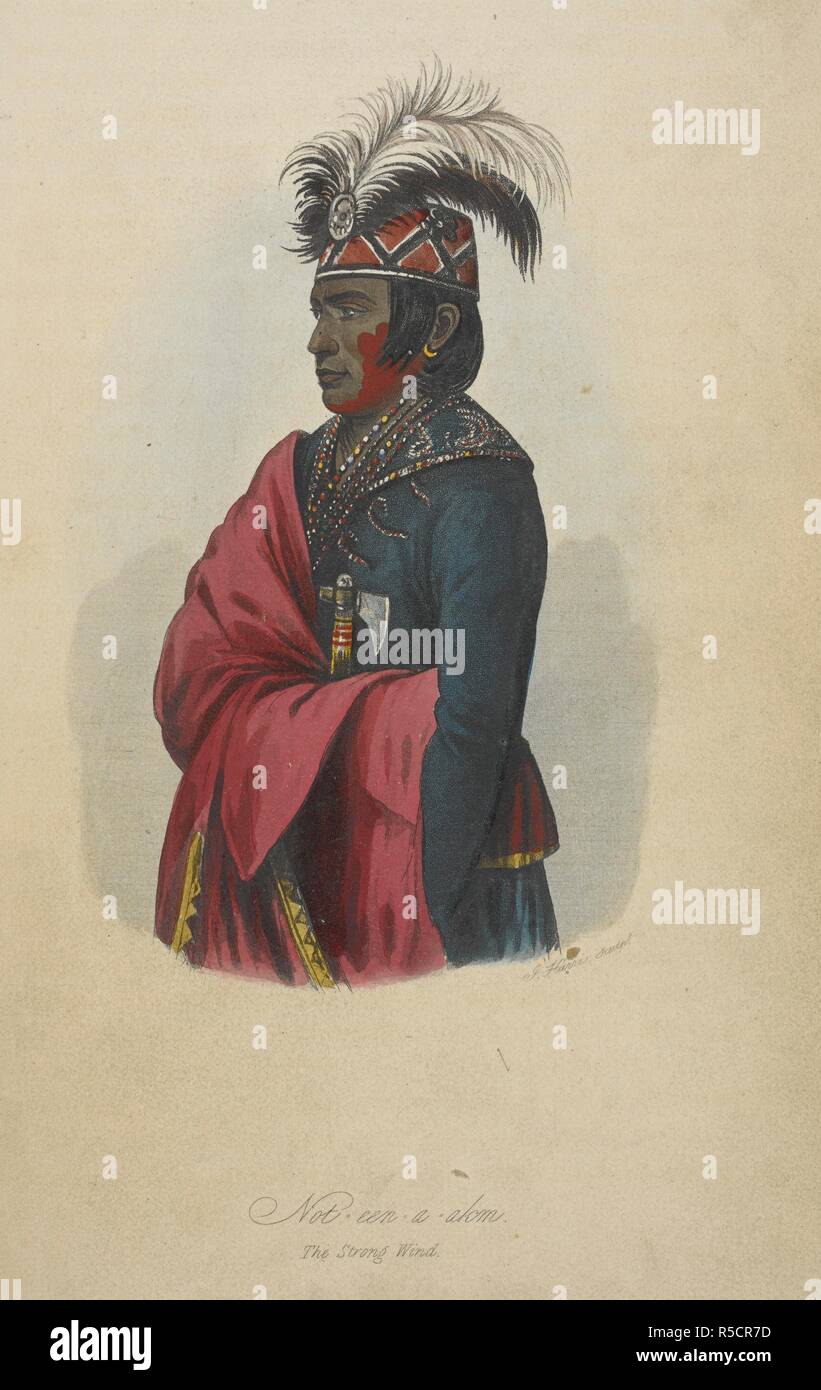 Not - eeu - a - akm, 'the stronge wind', the interpreter. The Ojibwe (also Ojibwa), or Chippewa are a large group of Native Americans. The Natural History of Man; comprising inquiries into the modifying influence of physical and moral agencies of the different tribes of the human family. London, 1845. Source: 10007.d.23 plate 46 opposite page 484. Language: English. Author: Prichard, James Cowles. Stock Photohttps://www.alamy.com/image-license-details/?v=1https://www.alamy.com/not-eeu-a-akm-the-stronge-wind-the-interpreter-the-ojibwe-also-ojibwa-or-chippewa-are-a-large-group-of-native-americans-the-natural-history-of-man-comprising-inquiries-into-the-modifying-influence-of-physical-and-moral-agencies-of-the-different-tribes-of-the-human-family-london-1845-source-10007d23-plate-46-opposite-page-484-language-english-author-prichard-james-cowles-image227089729.html
Not - eeu - a - akm, 'the stronge wind', the interpreter. The Ojibwe (also Ojibwa), or Chippewa are a large group of Native Americans. The Natural History of Man; comprising inquiries into the modifying influence of physical and moral agencies of the different tribes of the human family. London, 1845. Source: 10007.d.23 plate 46 opposite page 484. Language: English. Author: Prichard, James Cowles. Stock Photohttps://www.alamy.com/image-license-details/?v=1https://www.alamy.com/not-eeu-a-akm-the-stronge-wind-the-interpreter-the-ojibwe-also-ojibwa-or-chippewa-are-a-large-group-of-native-americans-the-natural-history-of-man-comprising-inquiries-into-the-modifying-influence-of-physical-and-moral-agencies-of-the-different-tribes-of-the-human-family-london-1845-source-10007d23-plate-46-opposite-page-484-language-english-author-prichard-james-cowles-image227089729.htmlRMR5CR7D–Not - eeu - a - akm, 'the stronge wind', the interpreter. The Ojibwe (also Ojibwa), or Chippewa are a large group of Native Americans. The Natural History of Man; comprising inquiries into the modifying influence of physical and moral agencies of the different tribes of the human family. London, 1845. Source: 10007.d.23 plate 46 opposite page 484. Language: English. Author: Prichard, James Cowles.
 Bandolier (Shoulder) Bag, 1880s?. Inspired perhaps by British ammunition pouches, bandolier bags evolved from smaller native bags, similar to another in this case, to become one of the flashiest, most important items of Woodlands formal attire during the 1800s. Europeans introduced floral motifs to Woodlands imagery, but artists’ enthusiastic response suggests the motifs struck a chord in native thought, which holds plants to be animate and powerful. This example features blueberries, literally "soul food" that refreshes the spirit of the living and the dead, and alludes to ne Stock Photohttps://www.alamy.com/image-license-details/?v=1https://www.alamy.com/bandolier-shoulder-bag-1880s-inspired-perhaps-by-british-ammunition-pouches-bandolier-bags-evolved-from-smaller-native-bags-similar-to-another-in-this-case-to-become-one-of-the-flashiest-most-important-items-of-woodlands-formal-attire-during-the-1800s-europeans-introduced-floral-motifs-to-woodlands-imagery-but-artistsx2019-enthusiastic-response-suggests-the-motifs-struck-a-chord-in-native-thought-which-holds-plants-to-be-animate-and-powerful-this-example-features-blueberries-literally-quotsoul-foodquot-that-refreshes-the-spirit-of-the-living-and-the-dead-and-alludes-to-ne-image330076781.html
Bandolier (Shoulder) Bag, 1880s?. Inspired perhaps by British ammunition pouches, bandolier bags evolved from smaller native bags, similar to another in this case, to become one of the flashiest, most important items of Woodlands formal attire during the 1800s. Europeans introduced floral motifs to Woodlands imagery, but artists’ enthusiastic response suggests the motifs struck a chord in native thought, which holds plants to be animate and powerful. This example features blueberries, literally "soul food" that refreshes the spirit of the living and the dead, and alludes to ne Stock Photohttps://www.alamy.com/image-license-details/?v=1https://www.alamy.com/bandolier-shoulder-bag-1880s-inspired-perhaps-by-british-ammunition-pouches-bandolier-bags-evolved-from-smaller-native-bags-similar-to-another-in-this-case-to-become-one-of-the-flashiest-most-important-items-of-woodlands-formal-attire-during-the-1800s-europeans-introduced-floral-motifs-to-woodlands-imagery-but-artistsx2019-enthusiastic-response-suggests-the-motifs-struck-a-chord-in-native-thought-which-holds-plants-to-be-animate-and-powerful-this-example-features-blueberries-literally-quotsoul-foodquot-that-refreshes-the-spirit-of-the-living-and-the-dead-and-alludes-to-ne-image330076781.htmlRM2A5088D–Bandolier (Shoulder) Bag, 1880s?. Inspired perhaps by British ammunition pouches, bandolier bags evolved from smaller native bags, similar to another in this case, to become one of the flashiest, most important items of Woodlands formal attire during the 1800s. Europeans introduced floral motifs to Woodlands imagery, but artists’ enthusiastic response suggests the motifs struck a chord in native thought, which holds plants to be animate and powerful. This example features blueberries, literally "soul food" that refreshes the spirit of the living and the dead, and alludes to ne
 A replica of a birch bark and canvas tent-like structure at the historic Grand Portage National Monument in Northern Minnesota, USA Stock Photohttps://www.alamy.com/image-license-details/?v=1https://www.alamy.com/a-replica-of-a-birch-bark-and-canvas-tent-like-structure-at-the-historic-grand-portage-national-monument-in-northern-minnesota-usa-image473997160.html
A replica of a birch bark and canvas tent-like structure at the historic Grand Portage National Monument in Northern Minnesota, USA Stock Photohttps://www.alamy.com/image-license-details/?v=1https://www.alamy.com/a-replica-of-a-birch-bark-and-canvas-tent-like-structure-at-the-historic-grand-portage-national-monument-in-northern-minnesota-usa-image473997160.htmlRF2JF4C60–A replica of a birch bark and canvas tent-like structure at the historic Grand Portage National Monument in Northern Minnesota, USA
 War dance of the Ojibwe nation (Ojibbeway indians). Stock Photohttps://www.alamy.com/image-license-details/?v=1https://www.alamy.com/stock-photo-war-dance-of-the-ojibwe-nation-ojibbeway-indians-72553853.html
War dance of the Ojibwe nation (Ojibbeway indians). Stock Photohttps://www.alamy.com/image-license-details/?v=1https://www.alamy.com/stock-photo-war-dance-of-the-ojibwe-nation-ojibbeway-indians-72553853.htmlRME61351–War dance of the Ojibwe nation (Ojibbeway indians).
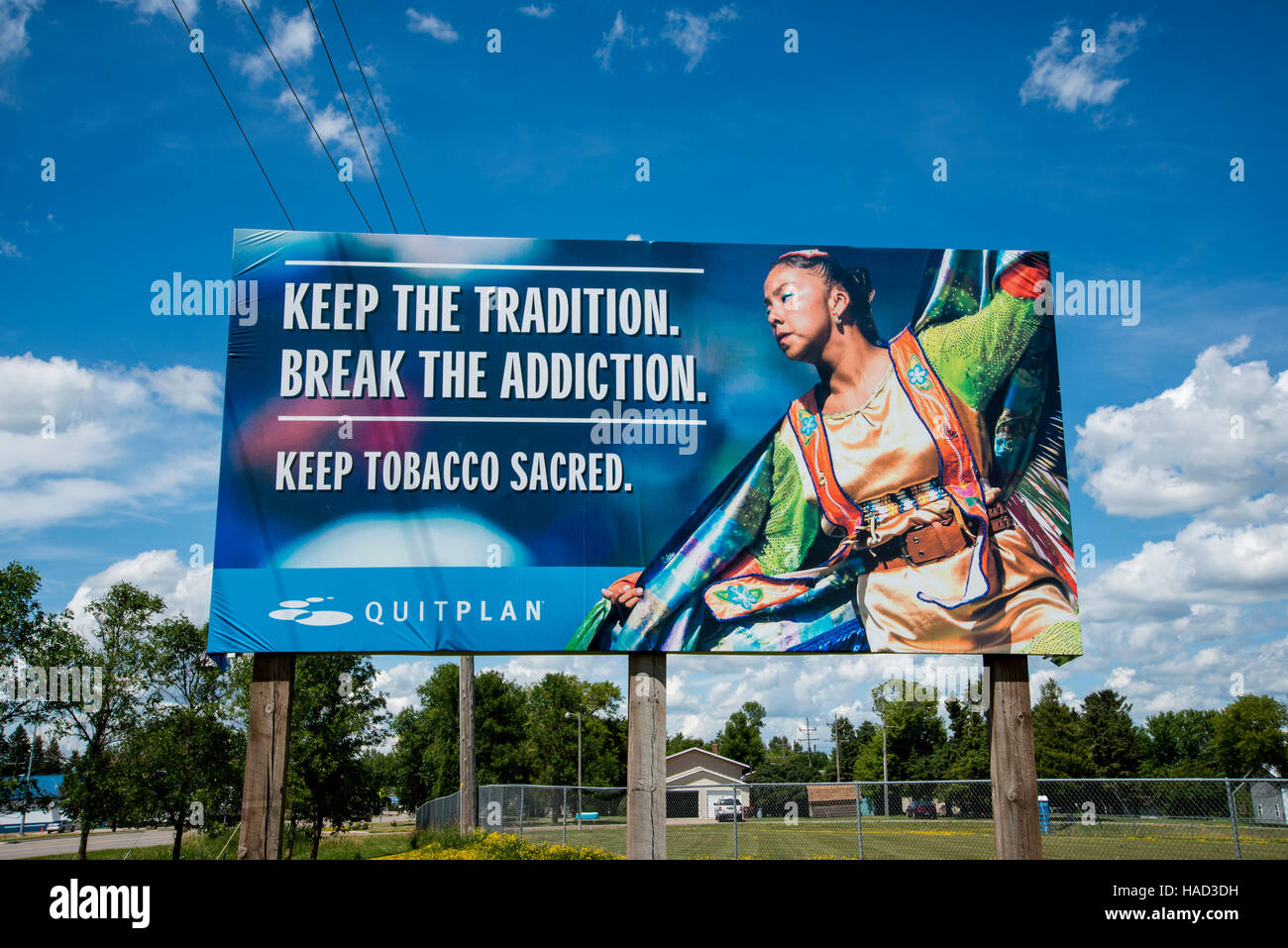 Callaway, Minnesota. White Earth Reservation. Sign telling the White Earth Band of Ojibwe where to get help at Quit Plan to stop smoking. Stock Photohttps://www.alamy.com/image-license-details/?v=1https://www.alamy.com/stock-photo-callaway-minnesota-white-earth-reservation-sign-telling-the-white-126907245.html
Callaway, Minnesota. White Earth Reservation. Sign telling the White Earth Band of Ojibwe where to get help at Quit Plan to stop smoking. Stock Photohttps://www.alamy.com/image-license-details/?v=1https://www.alamy.com/stock-photo-callaway-minnesota-white-earth-reservation-sign-telling-the-white-126907245.htmlRMHAD3DH–Callaway, Minnesota. White Earth Reservation. Sign telling the White Earth Band of Ojibwe where to get help at Quit Plan to stop smoking.
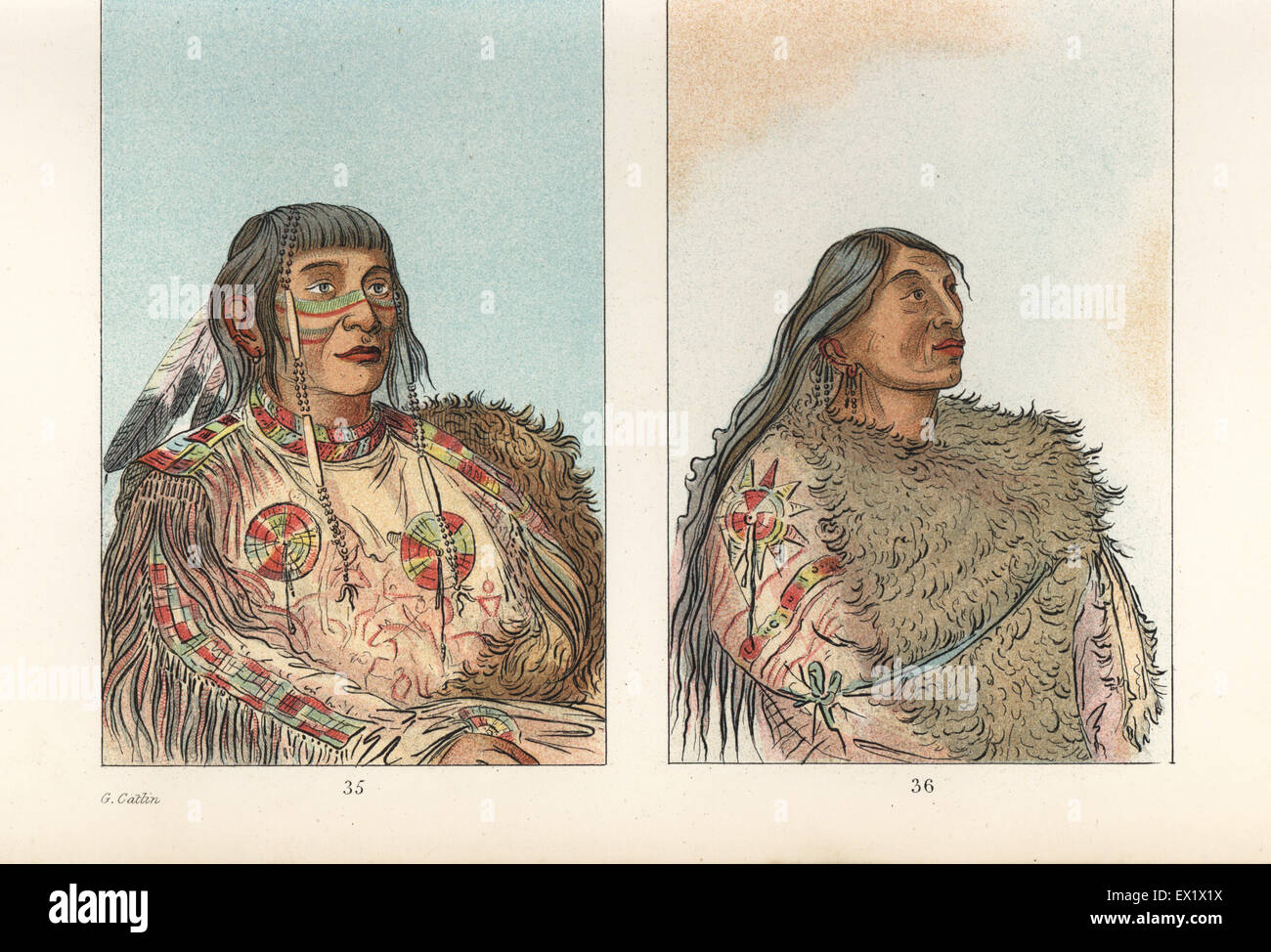 Sha-co-pay, Chief of the Ojibwe nation 35, and one of his squaws 36. Handcoloured lithograph from George Catlin's Manners, Customs and Condition of the North American Indians, London, 1841. Stock Photohttps://www.alamy.com/image-license-details/?v=1https://www.alamy.com/stock-photo-sha-co-pay-chief-of-the-ojibwe-nation-35-and-one-of-his-squaws-36-84864918.html
Sha-co-pay, Chief of the Ojibwe nation 35, and one of his squaws 36. Handcoloured lithograph from George Catlin's Manners, Customs and Condition of the North American Indians, London, 1841. Stock Photohttps://www.alamy.com/image-license-details/?v=1https://www.alamy.com/stock-photo-sha-co-pay-chief-of-the-ojibwe-nation-35-and-one-of-his-squaws-36-84864918.htmlRMEX1X1X–Sha-co-pay, Chief of the Ojibwe nation 35, and one of his squaws 36. Handcoloured lithograph from George Catlin's Manners, Customs and Condition of the North American Indians, London, 1841.
 Dreamcatcher vintage pattern Stock Photohttps://www.alamy.com/image-license-details/?v=1https://www.alamy.com/stock-image-dreamcatcher-vintage-pattern-165773696.html
Dreamcatcher vintage pattern Stock Photohttps://www.alamy.com/image-license-details/?v=1https://www.alamy.com/stock-image-dreamcatcher-vintage-pattern-165773696.htmlRFKHKJ14–Dreamcatcher vintage pattern
RF2XC9T9K–Anishinaabe symbol icon in a circle
 The Grand Hall located at the Grand Portage National Monument on the north shore of Lake Superior in northeastern Minnesota, USA Stock Photohttps://www.alamy.com/image-license-details/?v=1https://www.alamy.com/stock-photo-the-grand-hall-located-at-the-grand-portage-national-monument-on-the-52489935.html
The Grand Hall located at the Grand Portage National Monument on the north shore of Lake Superior in northeastern Minnesota, USA Stock Photohttps://www.alamy.com/image-license-details/?v=1https://www.alamy.com/stock-photo-the-grand-hall-located-at-the-grand-portage-national-monument-on-the-52489935.htmlRFD1B3CF–The Grand Hall located at the Grand Portage National Monument on the north shore of Lake Superior in northeastern Minnesota, USA
 Thai people making and sale handmade dream catcher or dreamcatcher for Thai foreign travelers buy in street night pai market at Pai city valley hill o Stock Photohttps://www.alamy.com/image-license-details/?v=1https://www.alamy.com/thai-people-making-and-sale-handmade-dream-catcher-or-dreamcatcher-for-thai-foreign-travelers-buy-in-street-night-pai-market-at-pai-city-valley-hill-o-image374115048.html
Thai people making and sale handmade dream catcher or dreamcatcher for Thai foreign travelers buy in street night pai market at Pai city valley hill o Stock Photohttps://www.alamy.com/image-license-details/?v=1https://www.alamy.com/thai-people-making-and-sale-handmade-dream-catcher-or-dreamcatcher-for-thai-foreign-travelers-buy-in-street-night-pai-market-at-pai-city-valley-hill-o-image374115048.htmlRF2CMJBFM–Thai people making and sale handmade dream catcher or dreamcatcher for Thai foreign travelers buy in street night pai market at Pai city valley hill o
 Old Fort Niagara State Historical Park, New York, Stock Photohttps://www.alamy.com/image-license-details/?v=1https://www.alamy.com/old-fort-niagara-state-historical-park-new-york-image476680617.html
Old Fort Niagara State Historical Park, New York, Stock Photohttps://www.alamy.com/image-license-details/?v=1https://www.alamy.com/old-fort-niagara-state-historical-park-new-york-image476680617.htmlRM2JKEJYN–Old Fort Niagara State Historical Park, New York,
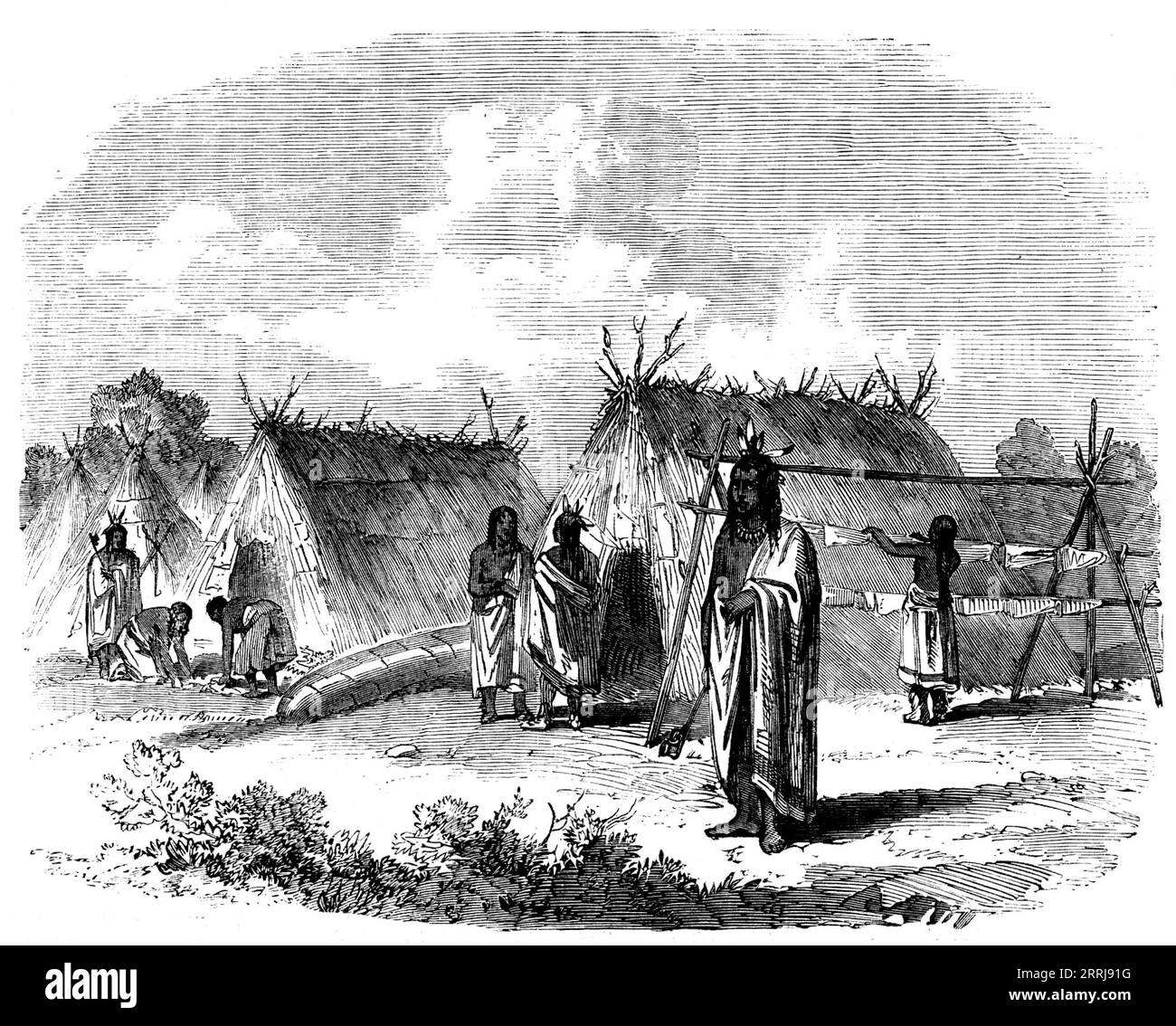 The Assiniboine and Saskatchewan Exploring Expedition - Ojibway Encampment near the Falls of the Rainy River, 1858. The Ojibways of the Lake of the Woods are the most warlike and independent tribe of this once great and powerful nation, which formerly occupied the country between Lake Huron and Red River. They still number some hundreds on the beautiful lake...from which their name is derived. Among them men of tall stature and faultless form are not uncommon. The Engraving represents a part of an encampment at the falls of Rainy River, where they assemble in the spring to catch and dry sturge Stock Photohttps://www.alamy.com/image-license-details/?v=1https://www.alamy.com/the-assiniboine-and-saskatchewan-exploring-expedition-ojibway-encampment-near-the-falls-of-the-rainy-river-1858-the-ojibways-of-the-lake-of-the-woods-are-the-most-warlike-and-independent-tribe-of-this-once-great-and-powerful-nation-which-formerly-occupied-the-country-between-lake-huron-and-red-river-they-still-number-some-hundreds-on-the-beautiful-lakefrom-which-their-name-is-derived-among-them-men-of-tall-stature-and-faultless-form-are-not-uncommon-the-engraving-represents-a-part-of-an-encampment-at-the-falls-of-rainy-river-where-they-assemble-in-the-spring-to-catch-and-dry-sturge-image565271100.html
The Assiniboine and Saskatchewan Exploring Expedition - Ojibway Encampment near the Falls of the Rainy River, 1858. The Ojibways of the Lake of the Woods are the most warlike and independent tribe of this once great and powerful nation, which formerly occupied the country between Lake Huron and Red River. They still number some hundreds on the beautiful lake...from which their name is derived. Among them men of tall stature and faultless form are not uncommon. The Engraving represents a part of an encampment at the falls of Rainy River, where they assemble in the spring to catch and dry sturge Stock Photohttps://www.alamy.com/image-license-details/?v=1https://www.alamy.com/the-assiniboine-and-saskatchewan-exploring-expedition-ojibway-encampment-near-the-falls-of-the-rainy-river-1858-the-ojibways-of-the-lake-of-the-woods-are-the-most-warlike-and-independent-tribe-of-this-once-great-and-powerful-nation-which-formerly-occupied-the-country-between-lake-huron-and-red-river-they-still-number-some-hundreds-on-the-beautiful-lakefrom-which-their-name-is-derived-among-them-men-of-tall-stature-and-faultless-form-are-not-uncommon-the-engraving-represents-a-part-of-an-encampment-at-the-falls-of-rainy-river-where-they-assemble-in-the-spring-to-catch-and-dry-sturge-image565271100.htmlRM2RRJ91G–The Assiniboine and Saskatchewan Exploring Expedition - Ojibway Encampment near the Falls of the Rainy River, 1858. The Ojibways of the Lake of the Woods are the most warlike and independent tribe of this once great and powerful nation, which formerly occupied the country between Lake Huron and Red River. They still number some hundreds on the beautiful lake...from which their name is derived. Among them men of tall stature and faultless form are not uncommon. The Engraving represents a part of an encampment at the falls of Rainy River, where they assemble in the spring to catch and dry sturge
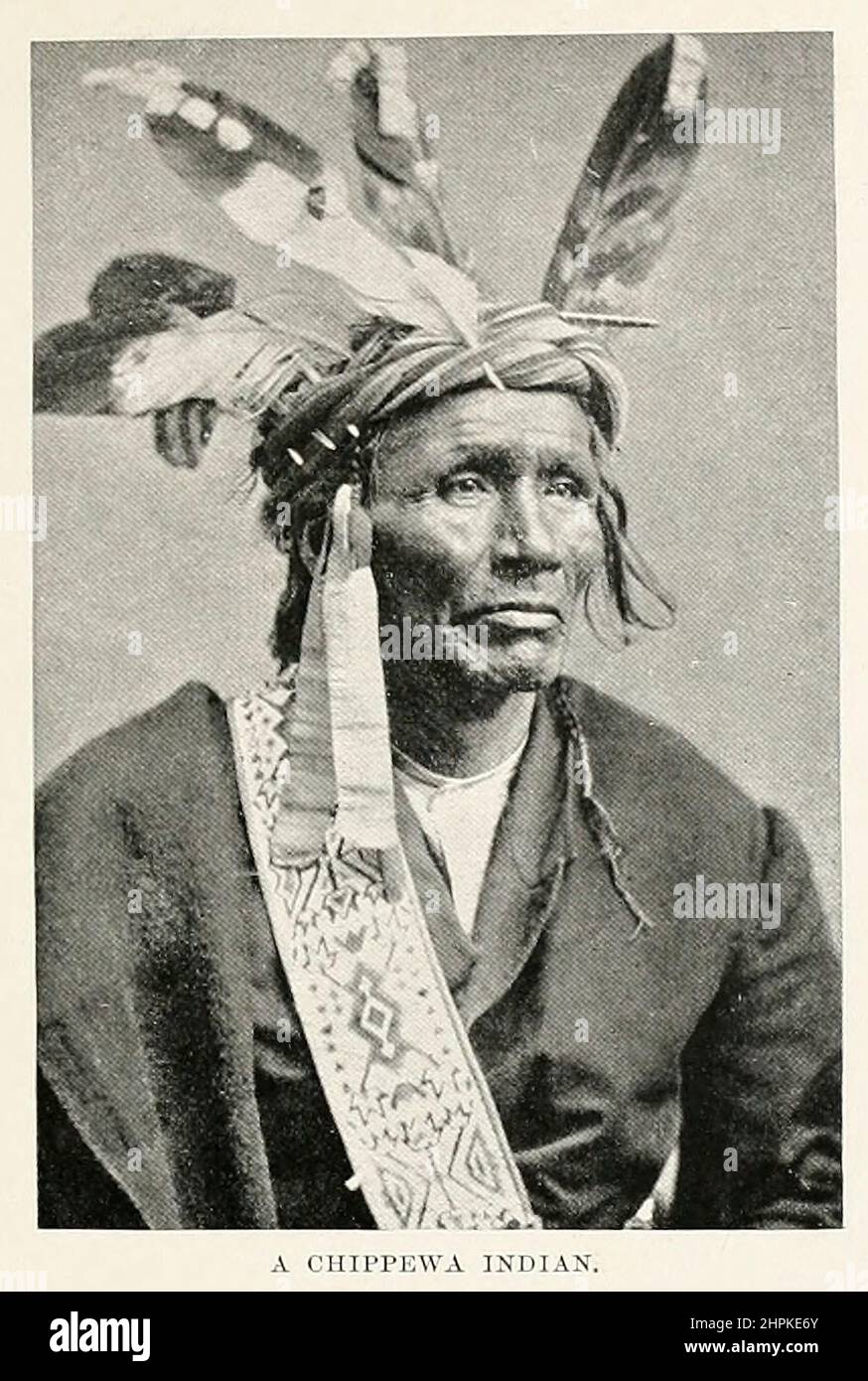 A Chippewa Indian. The Ojibwe, Ojibwa, Chippewa, or Saulteaux are an Anishinaabe people in what is currently southern Canada, the northern Midwestern United States, and Northern Plains. From the book The living races of mankind; Volume 2 by Henry Neville Hutchinson, Published in London in 1901 by Hutchinson & co Stock Photohttps://www.alamy.com/image-license-details/?v=1https://www.alamy.com/a-chippewa-indian-the-ojibwe-ojibwa-chippewa-or-saulteaux-are-an-anishinaabe-people-in-what-is-currently-southern-canada-the-northern-midwestern-united-states-and-northern-plains-from-the-book-the-living-races-of-mankind-volume-2-by-henry-neville-hutchinson-published-in-london-in-1901-by-hutchinson-co-image461420259.html
A Chippewa Indian. The Ojibwe, Ojibwa, Chippewa, or Saulteaux are an Anishinaabe people in what is currently southern Canada, the northern Midwestern United States, and Northern Plains. From the book The living races of mankind; Volume 2 by Henry Neville Hutchinson, Published in London in 1901 by Hutchinson & co Stock Photohttps://www.alamy.com/image-license-details/?v=1https://www.alamy.com/a-chippewa-indian-the-ojibwe-ojibwa-chippewa-or-saulteaux-are-an-anishinaabe-people-in-what-is-currently-southern-canada-the-northern-midwestern-united-states-and-northern-plains-from-the-book-the-living-races-of-mankind-volume-2-by-henry-neville-hutchinson-published-in-london-in-1901-by-hutchinson-co-image461420259.htmlRF2HPKE6Y–A Chippewa Indian. The Ojibwe, Ojibwa, Chippewa, or Saulteaux are an Anishinaabe people in what is currently southern Canada, the northern Midwestern United States, and Northern Plains. From the book The living races of mankind; Volume 2 by Henry Neville Hutchinson, Published in London in 1901 by Hutchinson & co
 Ojibwe mother and daughter dressed in traditional ribbon dresses visit the Huron Indian Village in Midland, Ontario. (MR) Stock Photohttps://www.alamy.com/image-license-details/?v=1https://www.alamy.com/stock-photo-ojibwe-mother-and-daughter-dressed-in-traditional-ribbon-dresses-visit-139201710.html
Ojibwe mother and daughter dressed in traditional ribbon dresses visit the Huron Indian Village in Midland, Ontario. (MR) Stock Photohttps://www.alamy.com/image-license-details/?v=1https://www.alamy.com/stock-photo-ojibwe-mother-and-daughter-dressed-in-traditional-ribbon-dresses-visit-139201710.htmlRMJ2D55J–Ojibwe mother and daughter dressed in traditional ribbon dresses visit the Huron Indian Village in Midland, Ontario. (MR)
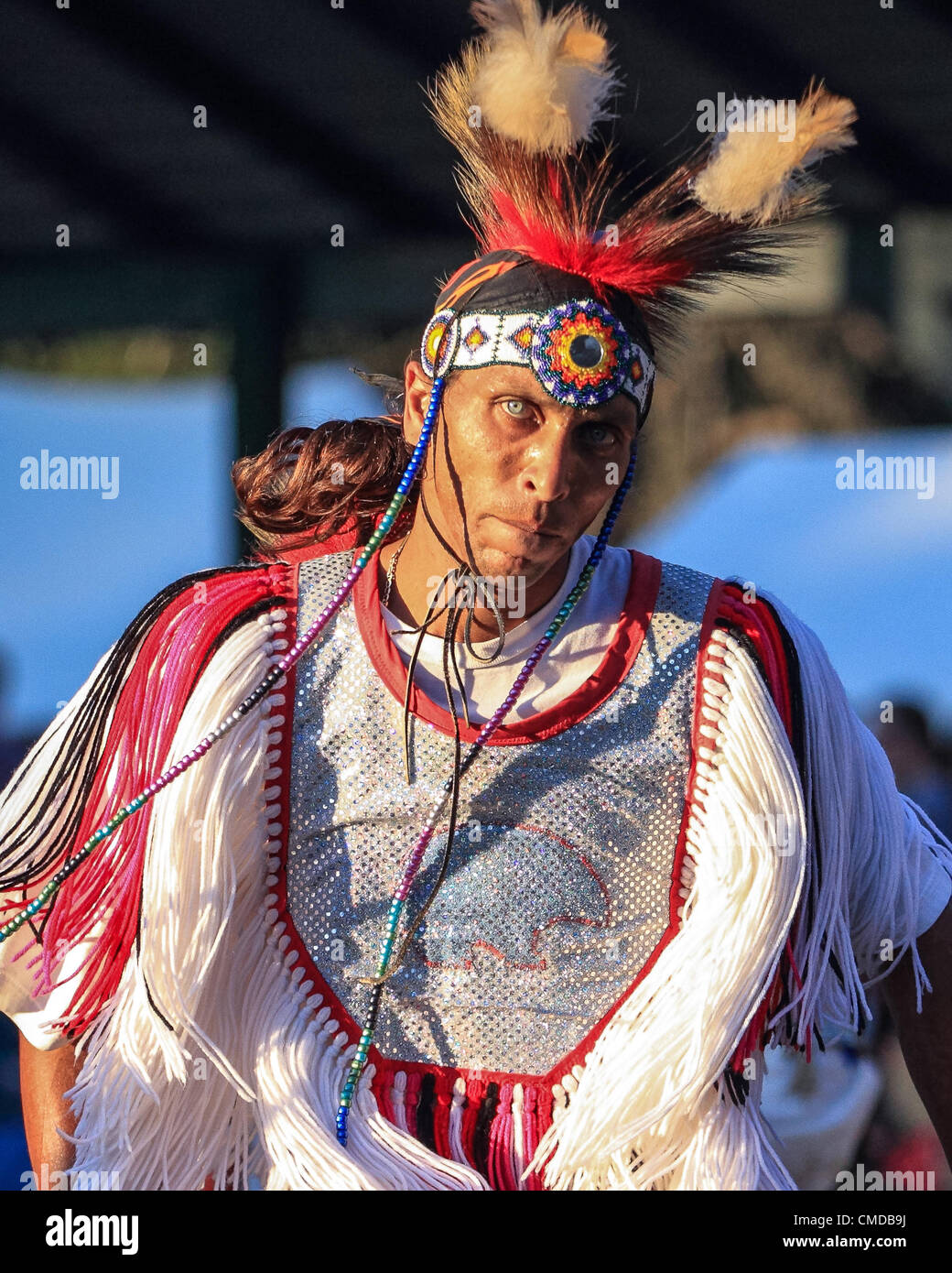 James Lasieur of the Lac Courte Orielles band of Ojibwe dances at the 39th Annual Honor the Earth Pow Wow held near Hayward, Wisconsin, USA -- July 21, 2012 Stock Photohttps://www.alamy.com/image-license-details/?v=1https://www.alamy.com/stock-photo-james-lasieur-of-the-lac-courte-orielles-band-of-ojibwe-dances-at-47008126.html
James Lasieur of the Lac Courte Orielles band of Ojibwe dances at the 39th Annual Honor the Earth Pow Wow held near Hayward, Wisconsin, USA -- July 21, 2012 Stock Photohttps://www.alamy.com/image-license-details/?v=1https://www.alamy.com/stock-photo-james-lasieur-of-the-lac-courte-orielles-band-of-ojibwe-dances-at-47008126.htmlRMCMDB9J–James Lasieur of the Lac Courte Orielles band of Ojibwe dances at the 39th Annual Honor the Earth Pow Wow held near Hayward, Wisconsin, USA -- July 21, 2012
 Beaded Panel, late 1800s. Northeast Woodlands, Great Lakes Region, Anishinaabe (Ojibwe) or Nehiyawak (Cree) People?. Glass beads on wool; overall: 38.9 x 11.4 cm (15 5/16 x 4 1/2 in Stock Photohttps://www.alamy.com/image-license-details/?v=1https://www.alamy.com/beaded-panel-late-1800s-northeast-woodlands-great-lakes-region-anishinaabe-ojibwe-or-nehiyawak-cree-people-glass-beads-on-wool-overall-389-x-114-cm-15-516-x-4-12-in-image240413468.html
Beaded Panel, late 1800s. Northeast Woodlands, Great Lakes Region, Anishinaabe (Ojibwe) or Nehiyawak (Cree) People?. Glass beads on wool; overall: 38.9 x 11.4 cm (15 5/16 x 4 1/2 in Stock Photohttps://www.alamy.com/image-license-details/?v=1https://www.alamy.com/beaded-panel-late-1800s-northeast-woodlands-great-lakes-region-anishinaabe-ojibwe-or-nehiyawak-cree-people-glass-beads-on-wool-overall-389-x-114-cm-15-516-x-4-12-in-image240413468.htmlRMRY3NR8–Beaded Panel, late 1800s. Northeast Woodlands, Great Lakes Region, Anishinaabe (Ojibwe) or Nehiyawak (Cree) People?. Glass beads on wool; overall: 38.9 x 11.4 cm (15 5/16 x 4 1/2 in
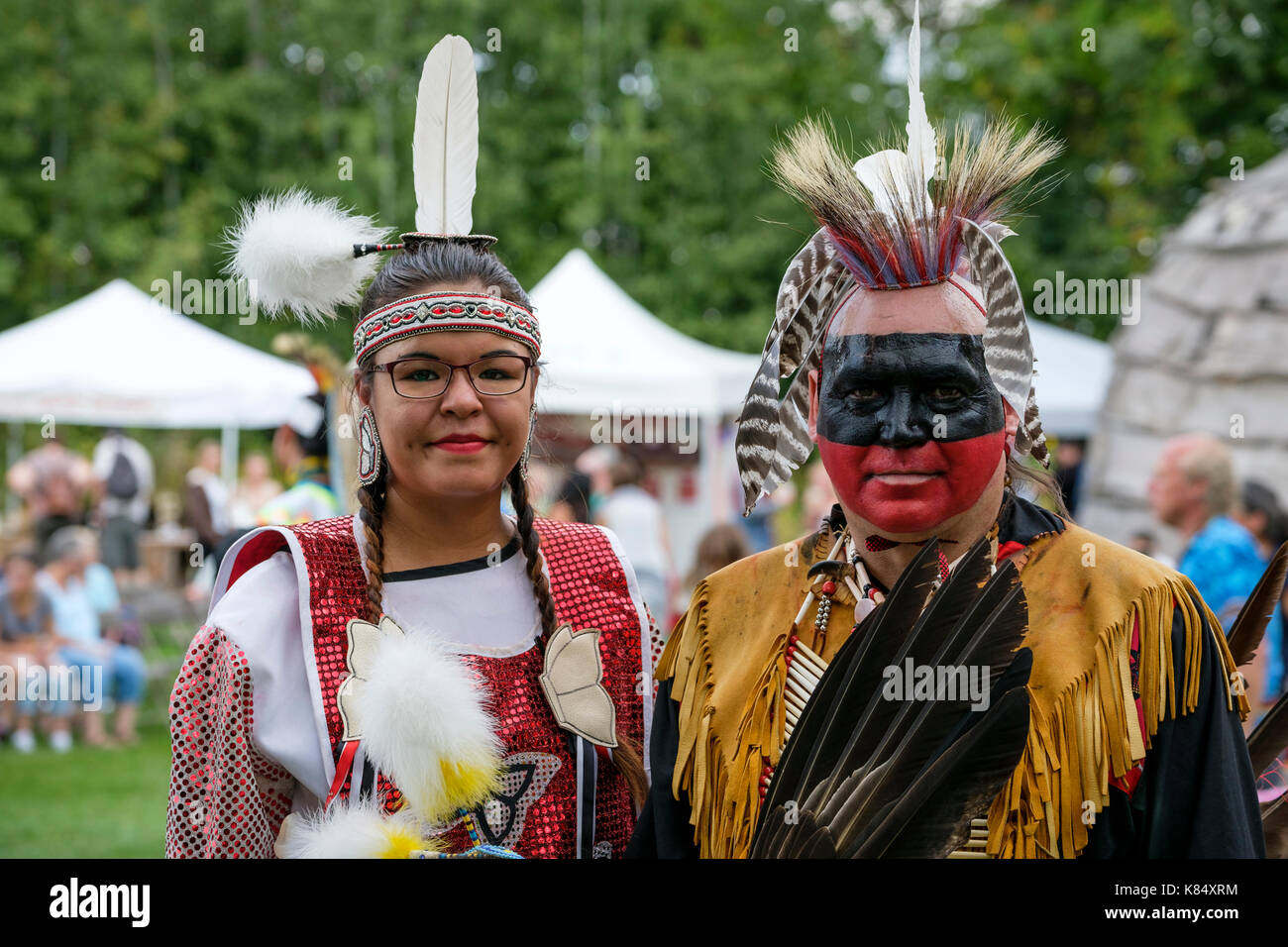 Canadian First Nations couple posing for a portrait wearing traditional regalia during a Pow Wow gathering in London, Ontario, Canada. Stock Photohttps://www.alamy.com/image-license-details/?v=1https://www.alamy.com/canadian-first-nations-couple-posing-for-a-portrait-wearing-traditional-image159919416.html
Canadian First Nations couple posing for a portrait wearing traditional regalia during a Pow Wow gathering in London, Ontario, Canada. Stock Photohttps://www.alamy.com/image-license-details/?v=1https://www.alamy.com/canadian-first-nations-couple-posing-for-a-portrait-wearing-traditional-image159919416.htmlRMK84XRM–Canadian First Nations couple posing for a portrait wearing traditional regalia during a Pow Wow gathering in London, Ontario, Canada.
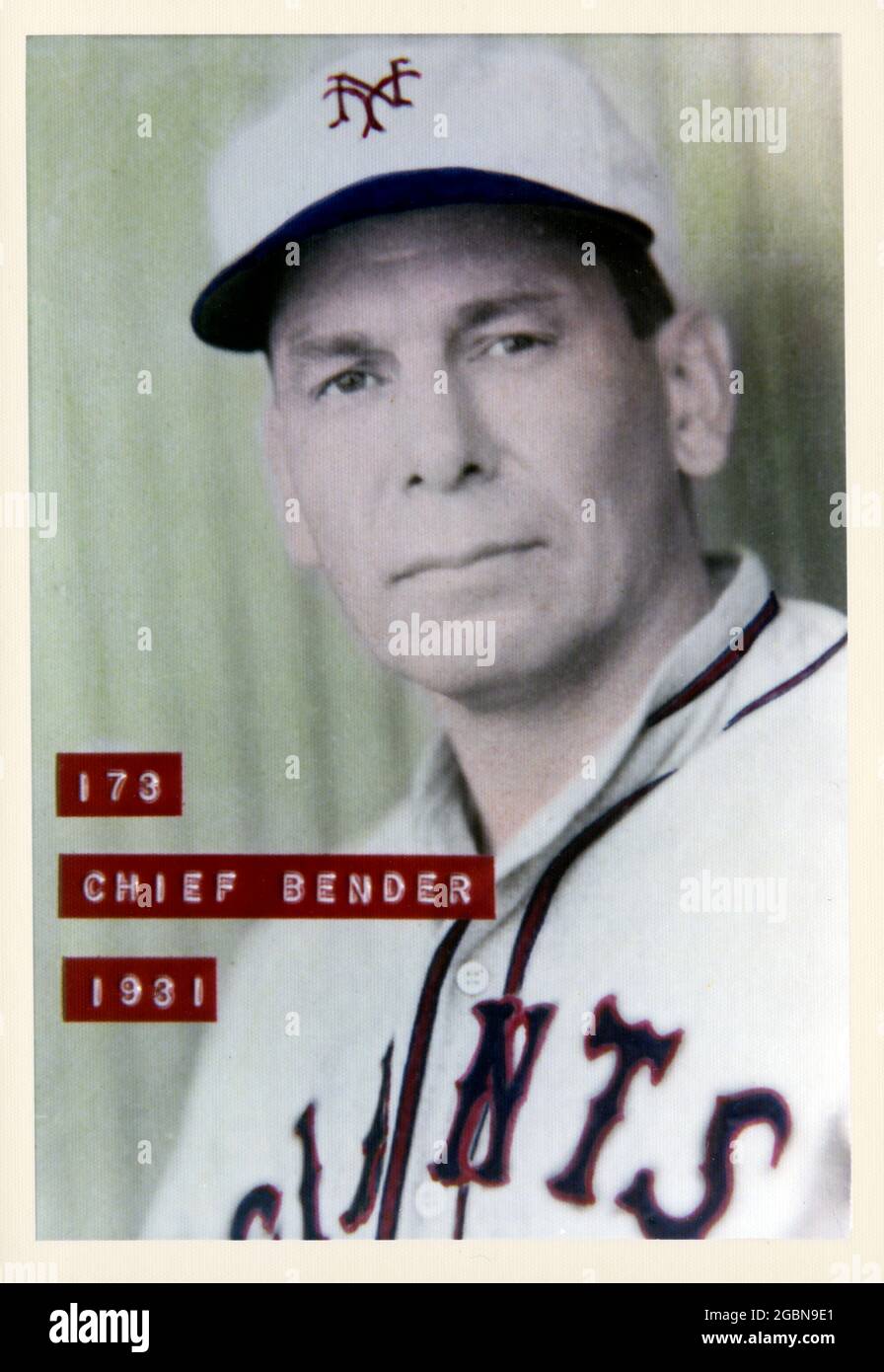 Vintage baseball card/ photo of Chief Bender, a Native American player photographed with the New York Giants in 1931. Stock Photohttps://www.alamy.com/image-license-details/?v=1https://www.alamy.com/vintage-baseball-card-photo-of-chief-bender-a-native-american-player-photographed-with-the-new-york-giants-in-1931-image437488857.html
Vintage baseball card/ photo of Chief Bender, a Native American player photographed with the New York Giants in 1931. Stock Photohttps://www.alamy.com/image-license-details/?v=1https://www.alamy.com/vintage-baseball-card-photo-of-chief-bender-a-native-american-player-photographed-with-the-new-york-giants-in-1931-image437488857.htmlRM2GBN9E1–Vintage baseball card/ photo of Chief Bender, a Native American player photographed with the New York Giants in 1931.
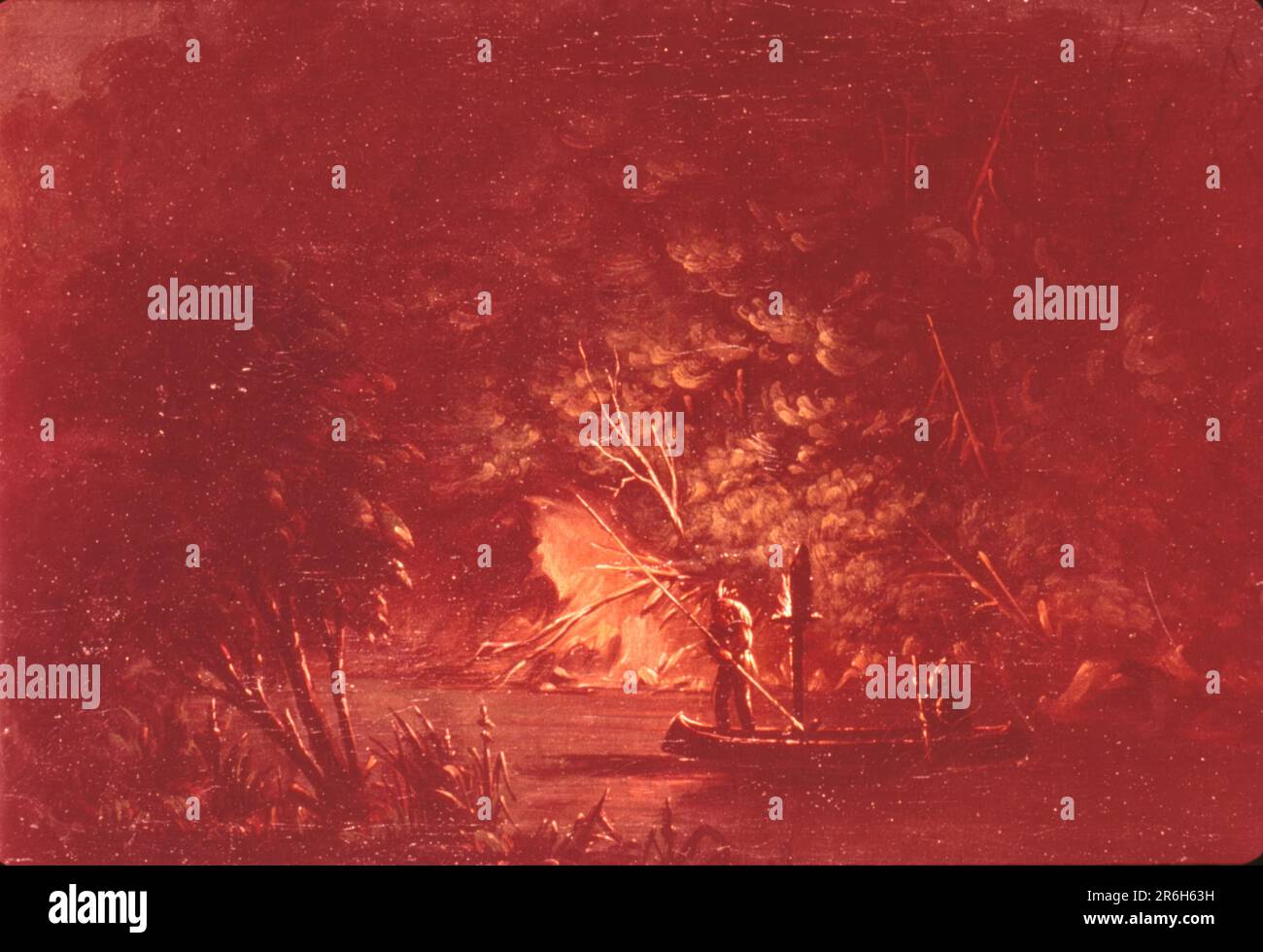 Ojibwe Spearing Salmon by Torchlight. oil on canvas. Date: 1846-1848. Museum: Smithsonian American Art Museum. Stock Photohttps://www.alamy.com/image-license-details/?v=1https://www.alamy.com/ojibwe-spearing-salmon-by-torchlight-oil-on-canvas-date-1846-1848-museum-smithsonian-american-art-museum-image554797701.html
Ojibwe Spearing Salmon by Torchlight. oil on canvas. Date: 1846-1848. Museum: Smithsonian American Art Museum. Stock Photohttps://www.alamy.com/image-license-details/?v=1https://www.alamy.com/ojibwe-spearing-salmon-by-torchlight-oil-on-canvas-date-1846-1848-museum-smithsonian-american-art-museum-image554797701.htmlRM2R6H63H–Ojibwe Spearing Salmon by Torchlight. oil on canvas. Date: 1846-1848. Museum: Smithsonian American Art Museum.
 Protesters march through downtown Toronto during the Global Climate Strike. One is drawing attention to mercury poisoning in an indigenous community. Stock Photohttps://www.alamy.com/image-license-details/?v=1https://www.alamy.com/protesters-march-through-downtown-toronto-during-the-global-climate-strike-one-is-drawing-attention-to-mercury-poisoning-in-an-indigenous-community-image328111988.html
Protesters march through downtown Toronto during the Global Climate Strike. One is drawing attention to mercury poisoning in an indigenous community. Stock Photohttps://www.alamy.com/image-license-details/?v=1https://www.alamy.com/protesters-march-through-downtown-toronto-during-the-global-climate-strike-one-is-drawing-attention-to-mercury-poisoning-in-an-indigenous-community-image328111988.htmlRF2A1PP58–Protesters march through downtown Toronto during the Global Climate Strike. One is drawing attention to mercury poisoning in an indigenous community.
 Ojibwe Spearing Salmon by Torchlight, 1846-1848. Stock Photohttps://www.alamy.com/image-license-details/?v=1https://www.alamy.com/ojibwe-spearing-salmon-by-torchlight-1846-1848-image418819600.html
Ojibwe Spearing Salmon by Torchlight, 1846-1848. Stock Photohttps://www.alamy.com/image-license-details/?v=1https://www.alamy.com/ojibwe-spearing-salmon-by-torchlight-1846-1848-image418819600.htmlRM2F9ATJT–Ojibwe Spearing Salmon by Torchlight, 1846-1848.
 New York, USA. 7th May, 2021. Demonstrators are shown with containers on their head known as 'jug heads'' protests the Line 3 pipe while pouring an oil like substance on the side walk next to Bank America during a protests in New York. Bank America is a financial supporter of the the line 3 pipe line and 'If built, Line 3 would carry hundreds of thousands of barrels a day of tar sands crude oil through indigenous peoples land through out the state if Minnesota'' officials said. Credit: Brian Branch Price/ZUMA Wire/Alamy Live News Stock Photohttps://www.alamy.com/image-license-details/?v=1https://www.alamy.com/new-york-usa-7th-may-2021-demonstrators-are-shown-with-containers-on-their-head-known-as-jug-heads-protests-the-line-3-pipe-while-pouring-an-oil-like-substance-on-the-side-walk-next-to-bank-america-during-a-protests-in-new-york-bank-america-is-a-financial-supporter-of-the-the-line-3-pipe-line-and-if-built-line-3-would-carry-hundreds-of-thousands-of-barrels-a-day-of-tar-sands-crude-oil-through-indigenous-peoples-land-through-out-the-state-if-minnesota-officials-said-credit-brian-branch-pricezuma-wirealamy-live-news-image425591082.html
New York, USA. 7th May, 2021. Demonstrators are shown with containers on their head known as 'jug heads'' protests the Line 3 pipe while pouring an oil like substance on the side walk next to Bank America during a protests in New York. Bank America is a financial supporter of the the line 3 pipe line and 'If built, Line 3 would carry hundreds of thousands of barrels a day of tar sands crude oil through indigenous peoples land through out the state if Minnesota'' officials said. Credit: Brian Branch Price/ZUMA Wire/Alamy Live News Stock Photohttps://www.alamy.com/image-license-details/?v=1https://www.alamy.com/new-york-usa-7th-may-2021-demonstrators-are-shown-with-containers-on-their-head-known-as-jug-heads-protests-the-line-3-pipe-while-pouring-an-oil-like-substance-on-the-side-walk-next-to-bank-america-during-a-protests-in-new-york-bank-america-is-a-financial-supporter-of-the-the-line-3-pipe-line-and-if-built-line-3-would-carry-hundreds-of-thousands-of-barrels-a-day-of-tar-sands-crude-oil-through-indigenous-peoples-land-through-out-the-state-if-minnesota-officials-said-credit-brian-branch-pricezuma-wirealamy-live-news-image425591082.htmlRM2FMB9NE–New York, USA. 7th May, 2021. Demonstrators are shown with containers on their head known as 'jug heads'' protests the Line 3 pipe while pouring an oil like substance on the side walk next to Bank America during a protests in New York. Bank America is a financial supporter of the the line 3 pipe line and 'If built, Line 3 would carry hundreds of thousands of barrels a day of tar sands crude oil through indigenous peoples land through out the state if Minnesota'' officials said. Credit: Brian Branch Price/ZUMA Wire/Alamy Live News
 Whiteshell Manitoba Canada Stock Photohttps://www.alamy.com/image-license-details/?v=1https://www.alamy.com/stock-photo-whiteshell-manitoba-canada-33562329.html
Whiteshell Manitoba Canada Stock Photohttps://www.alamy.com/image-license-details/?v=1https://www.alamy.com/stock-photo-whiteshell-manitoba-canada-33562329.htmlRMBXGW2H–Whiteshell Manitoba Canada
 Callaway, Minnesota. White Earth Reservation. Sign telling the White Earth Band of Ojibwe where to get help at Quit Plan to stop smoking. Stock Photohttps://www.alamy.com/image-license-details/?v=1https://www.alamy.com/stock-photo-callaway-minnesota-white-earth-reservation-sign-telling-the-white-126907251.html
Callaway, Minnesota. White Earth Reservation. Sign telling the White Earth Band of Ojibwe where to get help at Quit Plan to stop smoking. Stock Photohttps://www.alamy.com/image-license-details/?v=1https://www.alamy.com/stock-photo-callaway-minnesota-white-earth-reservation-sign-telling-the-white-126907251.htmlRMHAD3DR–Callaway, Minnesota. White Earth Reservation. Sign telling the White Earth Band of Ojibwe where to get help at Quit Plan to stop smoking.
 Battle scenes of the decorated robe of Mandan second chief Mah-to-toh-pa, Four Bears. Victory over a Cheyenne chief 8, standing alone against a party of Assiniboin 9, scalping two Ojibwe women 10, and shooting an Assiniboin warrior 11. Handcoloured lithograph from George Catlin's Manners, Customs and Condition of the North American Indians, London, 1841. Stock Photohttps://www.alamy.com/image-license-details/?v=1https://www.alamy.com/stock-photo-battle-scenes-of-the-decorated-robe-of-mandan-second-chief-mah-to-84864950.html
Battle scenes of the decorated robe of Mandan second chief Mah-to-toh-pa, Four Bears. Victory over a Cheyenne chief 8, standing alone against a party of Assiniboin 9, scalping two Ojibwe women 10, and shooting an Assiniboin warrior 11. Handcoloured lithograph from George Catlin's Manners, Customs and Condition of the North American Indians, London, 1841. Stock Photohttps://www.alamy.com/image-license-details/?v=1https://www.alamy.com/stock-photo-battle-scenes-of-the-decorated-robe-of-mandan-second-chief-mah-to-84864950.htmlRMEX1X32–Battle scenes of the decorated robe of Mandan second chief Mah-to-toh-pa, Four Bears. Victory over a Cheyenne chief 8, standing alone against a party of Assiniboin 9, scalping two Ojibwe women 10, and shooting an Assiniboin warrior 11. Handcoloured lithograph from George Catlin's Manners, Customs and Condition of the North American Indians, London, 1841.
 Dreamcatcher Stock Photohttps://www.alamy.com/image-license-details/?v=1https://www.alamy.com/stock-image-dreamcatcher-165773698.html
Dreamcatcher Stock Photohttps://www.alamy.com/image-license-details/?v=1https://www.alamy.com/stock-image-dreamcatcher-165773698.htmlRFKHKJ16–Dreamcatcher
 Whiteshell Manitoba Canada Stock Photohttps://www.alamy.com/image-license-details/?v=1https://www.alamy.com/stock-photo-whiteshell-manitoba-canada-33311351.html
Whiteshell Manitoba Canada Stock Photohttps://www.alamy.com/image-license-details/?v=1https://www.alamy.com/stock-photo-whiteshell-manitoba-canada-33311351.htmlRMBX5CY3–Whiteshell Manitoba Canada
 The Grand Hall located at the Grand Portage National Monument on the north shore of Lake Superior in northeastern Minnesota, USA Stock Photohttps://www.alamy.com/image-license-details/?v=1https://www.alamy.com/stock-photo-the-grand-hall-located-at-the-grand-portage-national-monument-on-the-42042054.html
The Grand Hall located at the Grand Portage National Monument on the north shore of Lake Superior in northeastern Minnesota, USA Stock Photohttps://www.alamy.com/image-license-details/?v=1https://www.alamy.com/stock-photo-the-grand-hall-located-at-the-grand-portage-national-monument-on-the-42042054.htmlRMCCB51X–The Grand Hall located at the Grand Portage National Monument on the north shore of Lake Superior in northeastern Minnesota, USA
 Thai people making and sale handmade dream catcher or dreamcatcher for Thai foreign travelers buy in street night pai market at Pai city valley hill o Stock Photohttps://www.alamy.com/image-license-details/?v=1https://www.alamy.com/thai-people-making-and-sale-handmade-dream-catcher-or-dreamcatcher-for-thai-foreign-travelers-buy-in-street-night-pai-market-at-pai-city-valley-hill-o-image374114572.html
Thai people making and sale handmade dream catcher or dreamcatcher for Thai foreign travelers buy in street night pai market at Pai city valley hill o Stock Photohttps://www.alamy.com/image-license-details/?v=1https://www.alamy.com/thai-people-making-and-sale-handmade-dream-catcher-or-dreamcatcher-for-thai-foreign-travelers-buy-in-street-night-pai-market-at-pai-city-valley-hill-o-image374114572.htmlRF2CMJAXM–Thai people making and sale handmade dream catcher or dreamcatcher for Thai foreign travelers buy in street night pai market at Pai city valley hill o
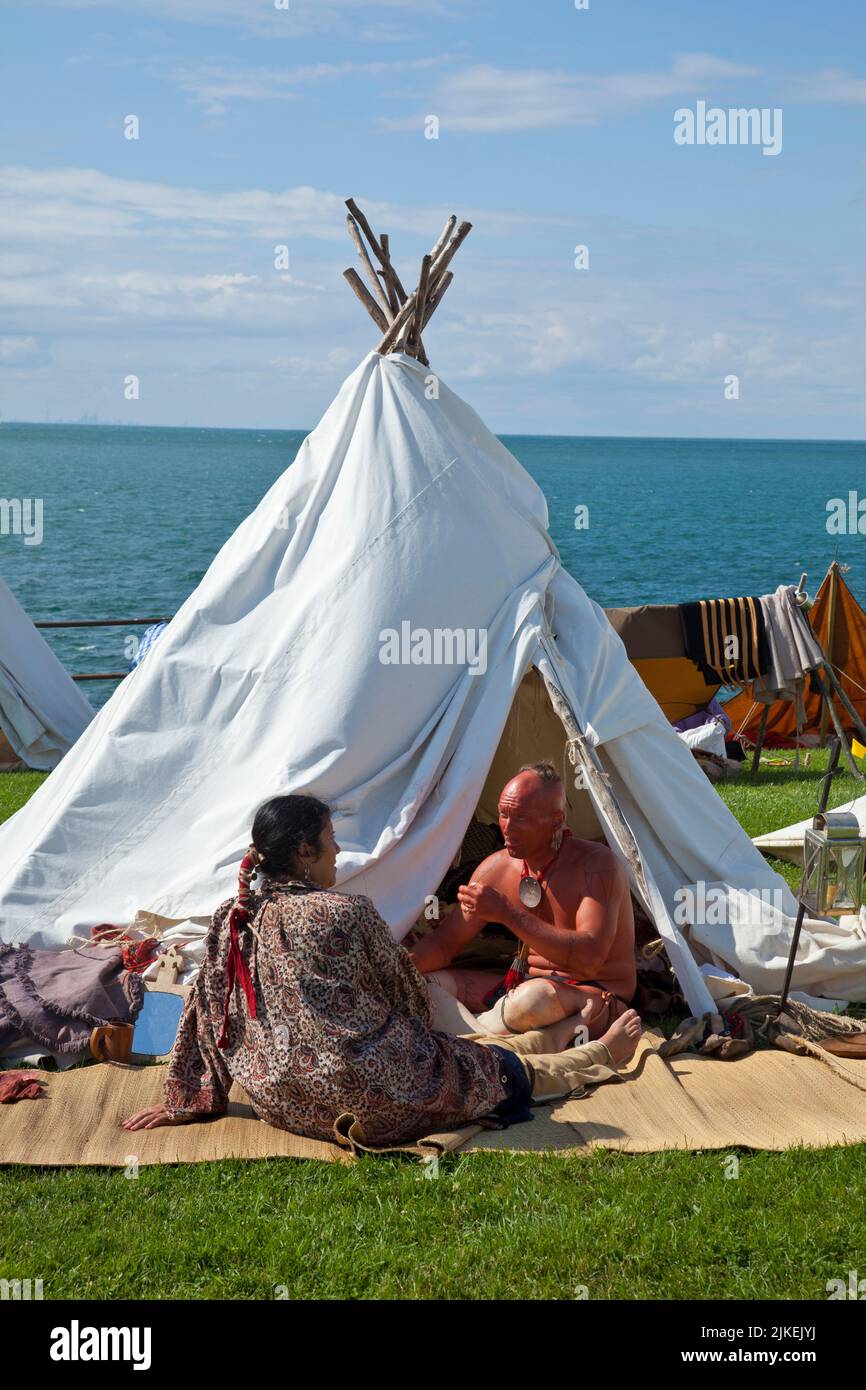 Northeast Culture. Old Fort Niagara State Historical Park, New York, Stock Photohttps://www.alamy.com/image-license-details/?v=1https://www.alamy.com/northeast-culture-old-fort-niagara-state-historical-park-new-york-image476680614.html
Northeast Culture. Old Fort Niagara State Historical Park, New York, Stock Photohttps://www.alamy.com/image-license-details/?v=1https://www.alamy.com/northeast-culture-old-fort-niagara-state-historical-park-new-york-image476680614.htmlRM2JKEJYJ–Northeast Culture. Old Fort Niagara State Historical Park, New York,
![The Red River Expedition in North America: Ojibways, 1870. Engraving of a sketch by William Hind, '...a brother of Professor Hind. [It] represents a group of these Indians, whose hunting-grounds extend from the dividing ridge between Lake Superior and Lake Winnipeg to the Red River of the North. They are essentially wood Indians, and the head-quarters of the most powerful and warlike band is on Rainy River, the only available route at present for communication between Lake Superior and the settlement of Manitobah...they are very independent and warlike...They have always regarded the intrusion Stock Photo The Red River Expedition in North America: Ojibways, 1870. Engraving of a sketch by William Hind, '...a brother of Professor Hind. [It] represents a group of these Indians, whose hunting-grounds extend from the dividing ridge between Lake Superior and Lake Winnipeg to the Red River of the North. They are essentially wood Indians, and the head-quarters of the most powerful and warlike band is on Rainy River, the only available route at present for communication between Lake Superior and the settlement of Manitobah...they are very independent and warlike...They have always regarded the intrusion Stock Photo](https://c8.alamy.com/comp/2XT30DN/the-red-river-expedition-in-north-america-ojibways-1870-engraving-of-a-sketch-by-william-hind-a-brother-of-professor-hind-it-represents-a-group-of-these-indians-whose-hunting-grounds-extend-from-the-dividing-ridge-between-lake-superior-and-lake-winnipeg-to-the-red-river-of-the-north-they-are-essentially-wood-indians-and-the-head-quarters-of-the-most-powerful-and-warlike-band-is-on-rainy-river-the-only-available-route-at-present-for-communication-between-lake-superior-and-the-settlement-of-manitobahthey-are-very-independent-and-warlikethey-have-always-regarded-the-intrusion-2XT30DN.jpg) The Red River Expedition in North America: Ojibways, 1870. Engraving of a sketch by William Hind, '...a brother of Professor Hind. [It] represents a group of these Indians, whose hunting-grounds extend from the dividing ridge between Lake Superior and Lake Winnipeg to the Red River of the North. They are essentially wood Indians, and the head-quarters of the most powerful and warlike band is on Rainy River, the only available route at present for communication between Lake Superior and the settlement of Manitobah...they are very independent and warlike...They have always regarded the intrusion Stock Photohttps://www.alamy.com/image-license-details/?v=1https://www.alamy.com/the-red-river-expedition-in-north-america-ojibways-1870-engraving-of-a-sketch-by-william-hind-a-brother-of-professor-hind-it-represents-a-group-of-these-indians-whose-hunting-grounds-extend-from-the-dividing-ridge-between-lake-superior-and-lake-winnipeg-to-the-red-river-of-the-north-they-are-essentially-wood-indians-and-the-head-quarters-of-the-most-powerful-and-warlike-band-is-on-rainy-river-the-only-available-route-at-present-for-communication-between-lake-superior-and-the-settlement-of-manitobahthey-are-very-independent-and-warlikethey-have-always-regarded-the-intrusion-image617180865.html
The Red River Expedition in North America: Ojibways, 1870. Engraving of a sketch by William Hind, '...a brother of Professor Hind. [It] represents a group of these Indians, whose hunting-grounds extend from the dividing ridge between Lake Superior and Lake Winnipeg to the Red River of the North. They are essentially wood Indians, and the head-quarters of the most powerful and warlike band is on Rainy River, the only available route at present for communication between Lake Superior and the settlement of Manitobah...they are very independent and warlike...They have always regarded the intrusion Stock Photohttps://www.alamy.com/image-license-details/?v=1https://www.alamy.com/the-red-river-expedition-in-north-america-ojibways-1870-engraving-of-a-sketch-by-william-hind-a-brother-of-professor-hind-it-represents-a-group-of-these-indians-whose-hunting-grounds-extend-from-the-dividing-ridge-between-lake-superior-and-lake-winnipeg-to-the-red-river-of-the-north-they-are-essentially-wood-indians-and-the-head-quarters-of-the-most-powerful-and-warlike-band-is-on-rainy-river-the-only-available-route-at-present-for-communication-between-lake-superior-and-the-settlement-of-manitobahthey-are-very-independent-and-warlikethey-have-always-regarded-the-intrusion-image617180865.htmlRM2XT30DN–The Red River Expedition in North America: Ojibways, 1870. Engraving of a sketch by William Hind, '...a brother of Professor Hind. [It] represents a group of these Indians, whose hunting-grounds extend from the dividing ridge between Lake Superior and Lake Winnipeg to the Red River of the North. They are essentially wood Indians, and the head-quarters of the most powerful and warlike band is on Rainy River, the only available route at present for communication between Lake Superior and the settlement of Manitobah...they are very independent and warlike...They have always regarded the intrusion
 Waubonsie (c. 1760 – c. 1848) was a leader of the Potawatomi Native American people. His name has been spelled in a variety of ways, including Wabaunsee, Wah-bahn-se, Waubonsee, Waabaanizii in the contemporary Ojibwe language, and Wabanzi in the contemporary Potawatomi language (meaning 'He Causes Paleness' in both languages). from the book ' History of the Indian Tribes of North America with biographical sketches and anecdotes of the principal chiefs. ' Volume 2 of 3 by Thomas Loraine, McKenney, and James Hall Esq. Published in 1842 Painted by Charles Bird King Stock Photohttps://www.alamy.com/image-license-details/?v=1https://www.alamy.com/waubonsie-c-1760-c-1848-was-a-leader-of-the-potawatomi-native-american-people-his-name-has-been-spelled-in-a-variety-of-ways-including-wabaunsee-wah-bahn-se-waubonsee-waabaanizii-in-the-contemporary-ojibwe-language-and-wabanzi-in-the-contemporary-potawatomi-language-meaning-he-causes-paleness-in-both-languages-from-the-book-history-of-the-indian-tribes-of-north-america-with-biographical-sketches-and-anecdotes-of-the-principal-chiefs-volume-2-of-3-by-thomas-loraine-mckenney-and-james-hall-esq-published-in-1842-painted-by-charles-bird-king-image450086408.html
Waubonsie (c. 1760 – c. 1848) was a leader of the Potawatomi Native American people. His name has been spelled in a variety of ways, including Wabaunsee, Wah-bahn-se, Waubonsee, Waabaanizii in the contemporary Ojibwe language, and Wabanzi in the contemporary Potawatomi language (meaning 'He Causes Paleness' in both languages). from the book ' History of the Indian Tribes of North America with biographical sketches and anecdotes of the principal chiefs. ' Volume 2 of 3 by Thomas Loraine, McKenney, and James Hall Esq. Published in 1842 Painted by Charles Bird King Stock Photohttps://www.alamy.com/image-license-details/?v=1https://www.alamy.com/waubonsie-c-1760-c-1848-was-a-leader-of-the-potawatomi-native-american-people-his-name-has-been-spelled-in-a-variety-of-ways-including-wabaunsee-wah-bahn-se-waubonsee-waabaanizii-in-the-contemporary-ojibwe-language-and-wabanzi-in-the-contemporary-potawatomi-language-meaning-he-causes-paleness-in-both-languages-from-the-book-history-of-the-indian-tribes-of-north-america-with-biographical-sketches-and-anecdotes-of-the-principal-chiefs-volume-2-of-3-by-thomas-loraine-mckenney-and-james-hall-esq-published-in-1842-painted-by-charles-bird-king-image450086408.htmlRF2H475PG–Waubonsie (c. 1760 – c. 1848) was a leader of the Potawatomi Native American people. His name has been spelled in a variety of ways, including Wabaunsee, Wah-bahn-se, Waubonsee, Waabaanizii in the contemporary Ojibwe language, and Wabanzi in the contemporary Potawatomi language (meaning 'He Causes Paleness' in both languages). from the book ' History of the Indian Tribes of North America with biographical sketches and anecdotes of the principal chiefs. ' Volume 2 of 3 by Thomas Loraine, McKenney, and James Hall Esq. Published in 1842 Painted by Charles Bird King
 Ojibwe mother and daughter dressed in traditional ribbon dresses with a large basket of corn outside of a bark covered longhouse (MR) Stock Photohttps://www.alamy.com/image-license-details/?v=1https://www.alamy.com/stock-photo-ojibwe-mother-and-daughter-dressed-in-traditional-ribbon-dresses-with-139201721.html
Ojibwe mother and daughter dressed in traditional ribbon dresses with a large basket of corn outside of a bark covered longhouse (MR) Stock Photohttps://www.alamy.com/image-license-details/?v=1https://www.alamy.com/stock-photo-ojibwe-mother-and-daughter-dressed-in-traditional-ribbon-dresses-with-139201721.htmlRMJ2D561–Ojibwe mother and daughter dressed in traditional ribbon dresses with a large basket of corn outside of a bark covered longhouse (MR)
 Native Americans from around North America gathered to sing, dance, and drum at the 39th annual Lac Courte Orielles Ojibwe 'Honor the Earth' Pow Wow near Hayward, Wisconsin, USA -- July 20-22, 2012 Stock Photohttps://www.alamy.com/image-license-details/?v=1https://www.alamy.com/stock-photo-native-americans-from-around-north-america-gathered-to-sing-dance-47007915.html
Native Americans from around North America gathered to sing, dance, and drum at the 39th annual Lac Courte Orielles Ojibwe 'Honor the Earth' Pow Wow near Hayward, Wisconsin, USA -- July 20-22, 2012 Stock Photohttps://www.alamy.com/image-license-details/?v=1https://www.alamy.com/stock-photo-native-americans-from-around-north-america-gathered-to-sing-dance-47007915.htmlRMCMDB23–Native Americans from around North America gathered to sing, dance, and drum at the 39th annual Lac Courte Orielles Ojibwe 'Honor the Earth' Pow Wow near Hayward, Wisconsin, USA -- July 20-22, 2012
 Beaded Panel, late 1800s. Northeast Woodlands, Great Lakes Region, Anishinaabe (Ojibwe) or Nehiyawak (Cree) People?. Glass beads on wool; overall: 38.7 x 10.8 cm (15 1/4 x 4 1/4 in Stock Photohttps://www.alamy.com/image-license-details/?v=1https://www.alamy.com/beaded-panel-late-1800s-northeast-woodlands-great-lakes-region-anishinaabe-ojibwe-or-nehiyawak-cree-people-glass-beads-on-wool-overall-387-x-108-cm-15-14-x-4-14-in-image240413467.html
Beaded Panel, late 1800s. Northeast Woodlands, Great Lakes Region, Anishinaabe (Ojibwe) or Nehiyawak (Cree) People?. Glass beads on wool; overall: 38.7 x 10.8 cm (15 1/4 x 4 1/4 in Stock Photohttps://www.alamy.com/image-license-details/?v=1https://www.alamy.com/beaded-panel-late-1800s-northeast-woodlands-great-lakes-region-anishinaabe-ojibwe-or-nehiyawak-cree-people-glass-beads-on-wool-overall-387-x-108-cm-15-14-x-4-14-in-image240413467.htmlRMRY3NR7–Beaded Panel, late 1800s. Northeast Woodlands, Great Lakes Region, Anishinaabe (Ojibwe) or Nehiyawak (Cree) People?. Glass beads on wool; overall: 38.7 x 10.8 cm (15 1/4 x 4 1/4 in
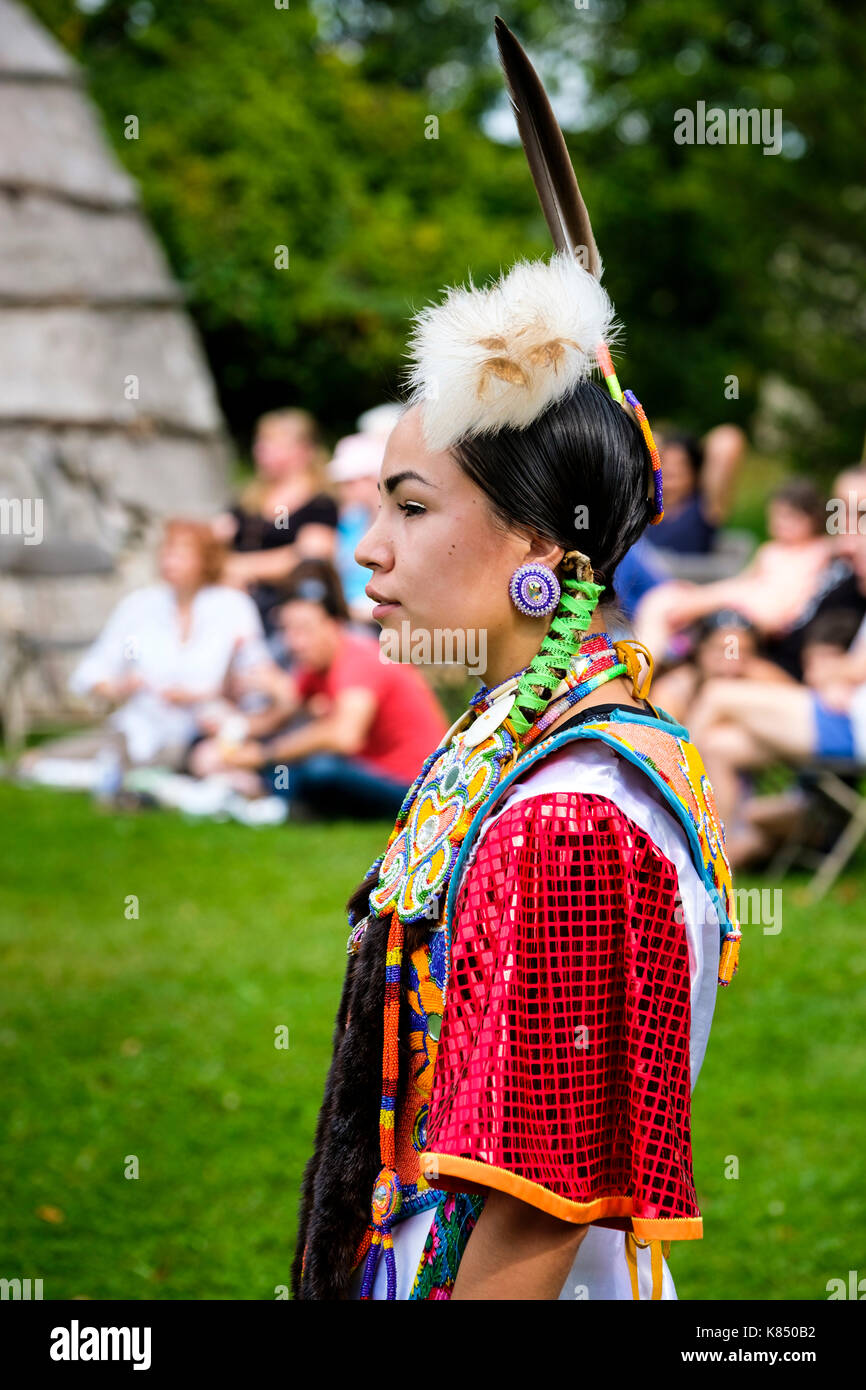 Canada First Nations Oneida/Ojibwa/Ojibway young indigenous woman participating in a Pow Wow Canada indigenous competition in London, Ontario, Canada. Stock Photohttps://www.alamy.com/image-license-details/?v=1https://www.alamy.com/canada-first-nations-oneidaojibwaojibway-young-indigenous-woman-participating-image159920630.html
Canada First Nations Oneida/Ojibwa/Ojibway young indigenous woman participating in a Pow Wow Canada indigenous competition in London, Ontario, Canada. Stock Photohttps://www.alamy.com/image-license-details/?v=1https://www.alamy.com/canada-first-nations-oneidaojibwaojibway-young-indigenous-woman-participating-image159920630.htmlRMK850B2–Canada First Nations Oneida/Ojibwa/Ojibway young indigenous woman participating in a Pow Wow Canada indigenous competition in London, Ontario, Canada.